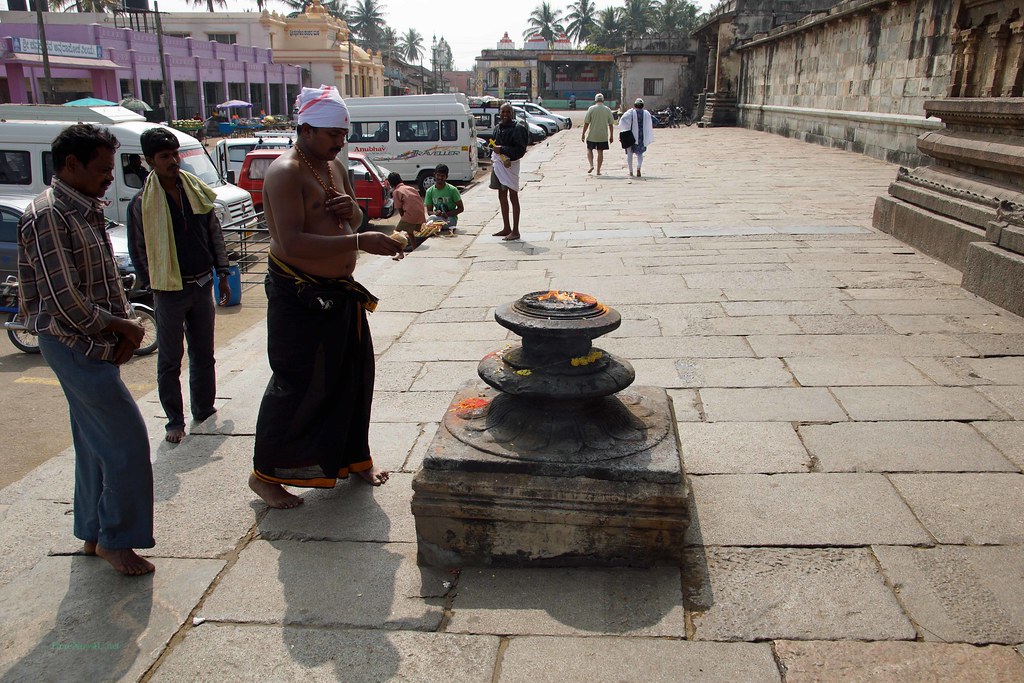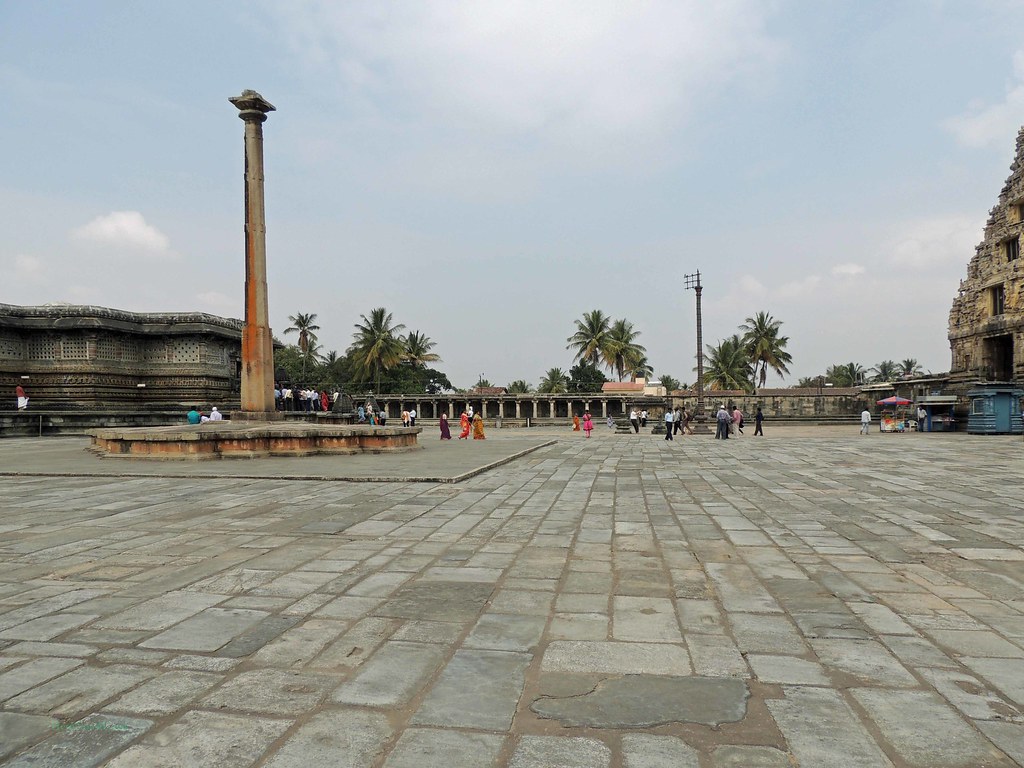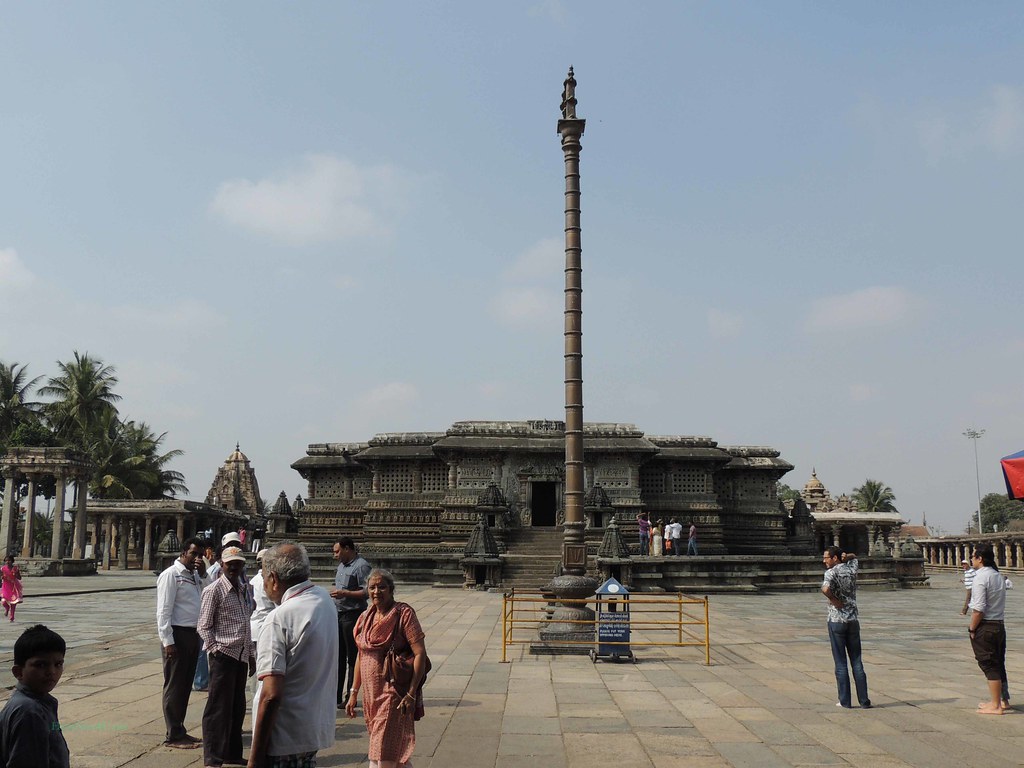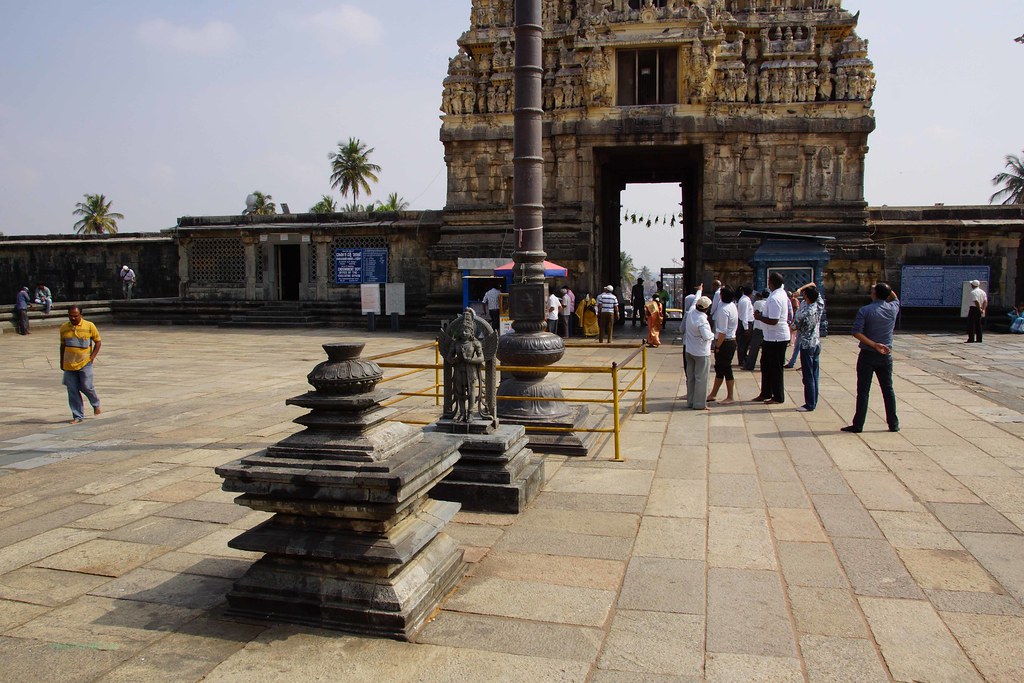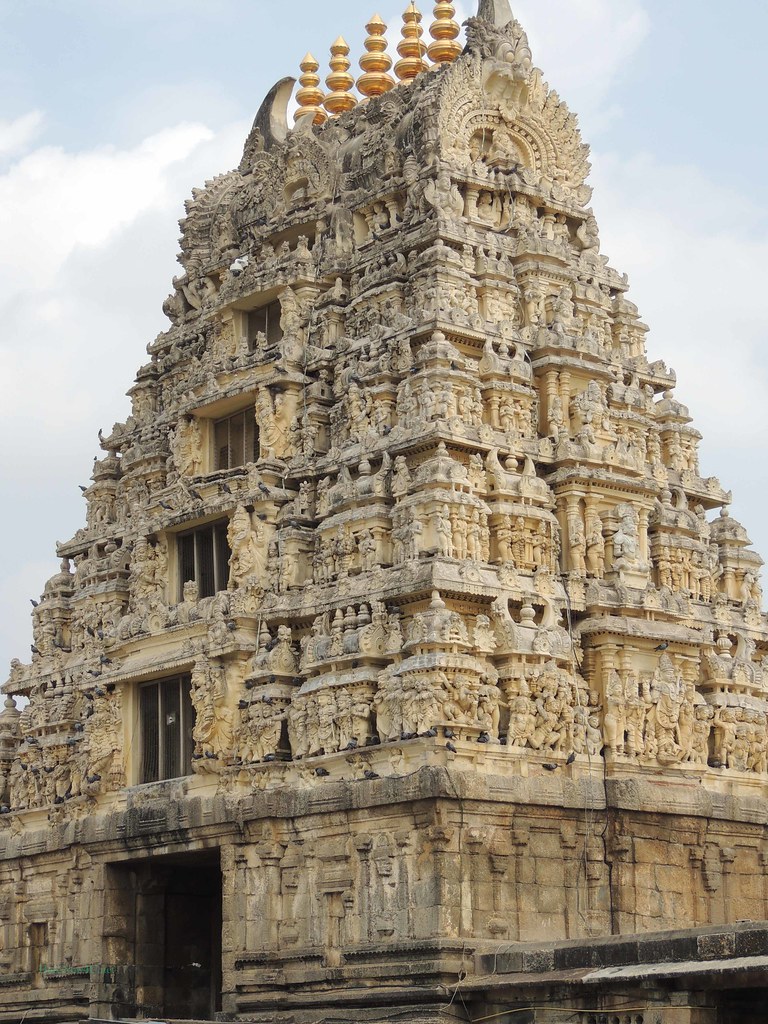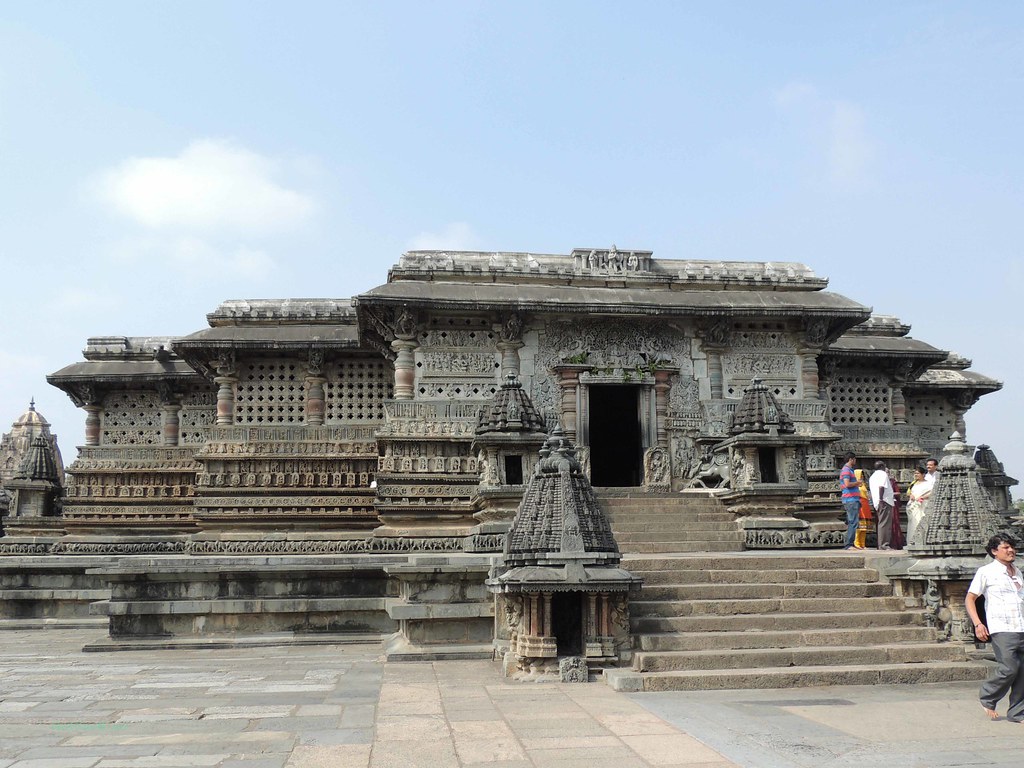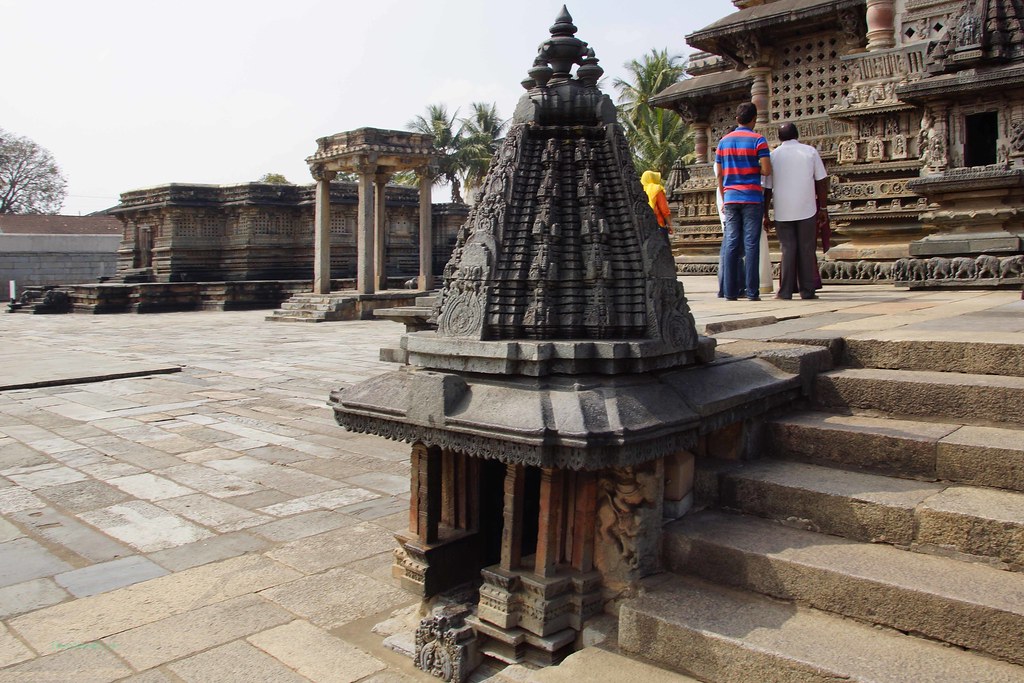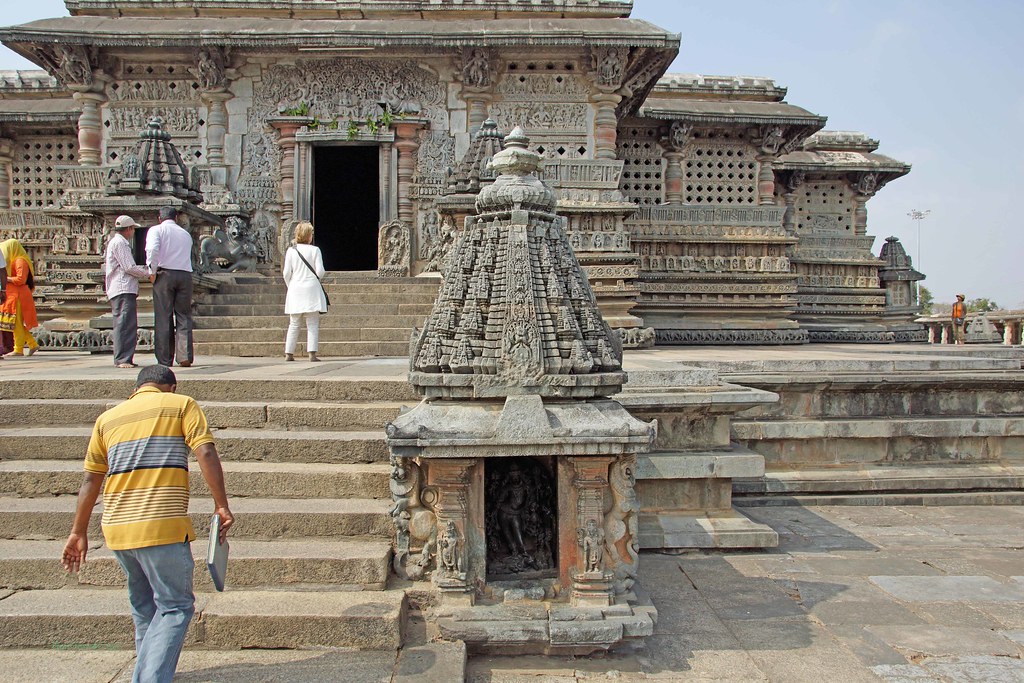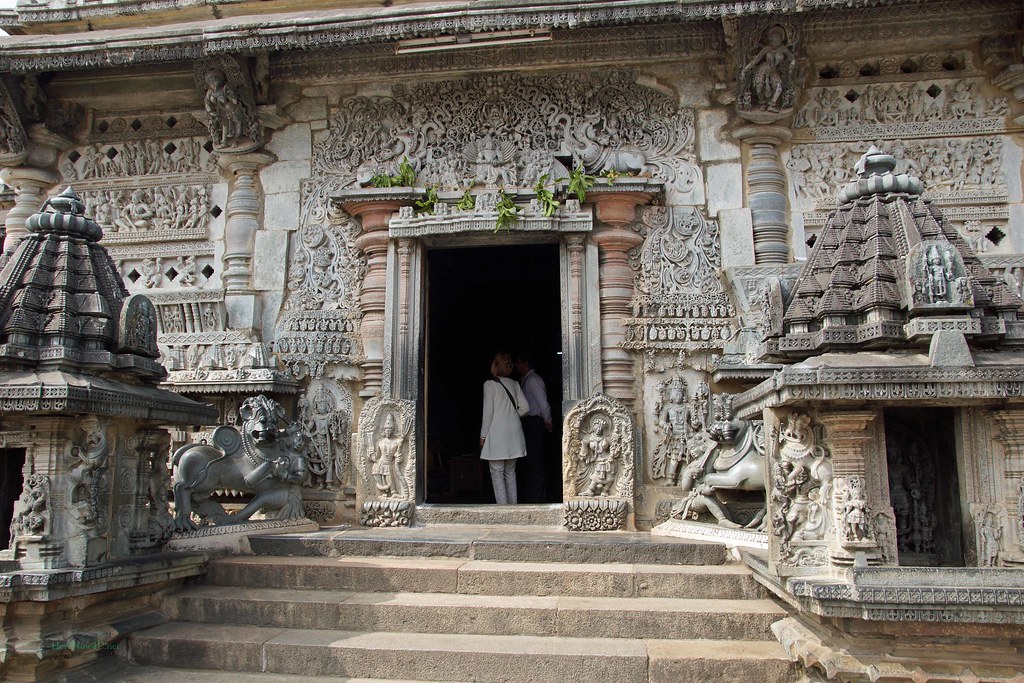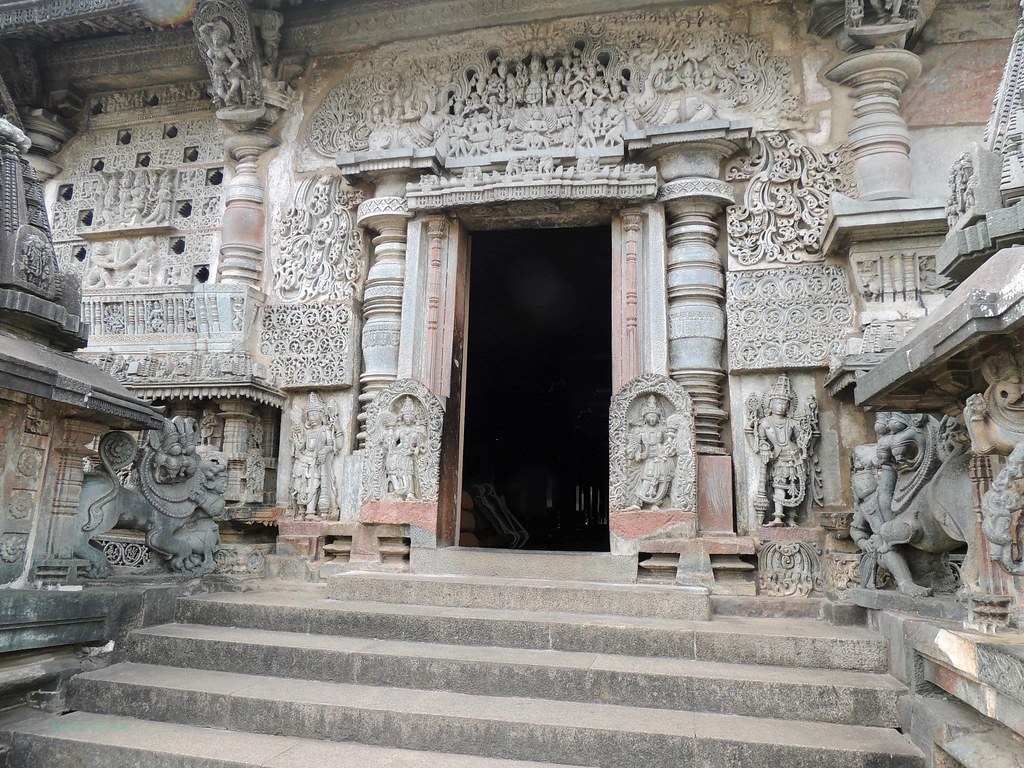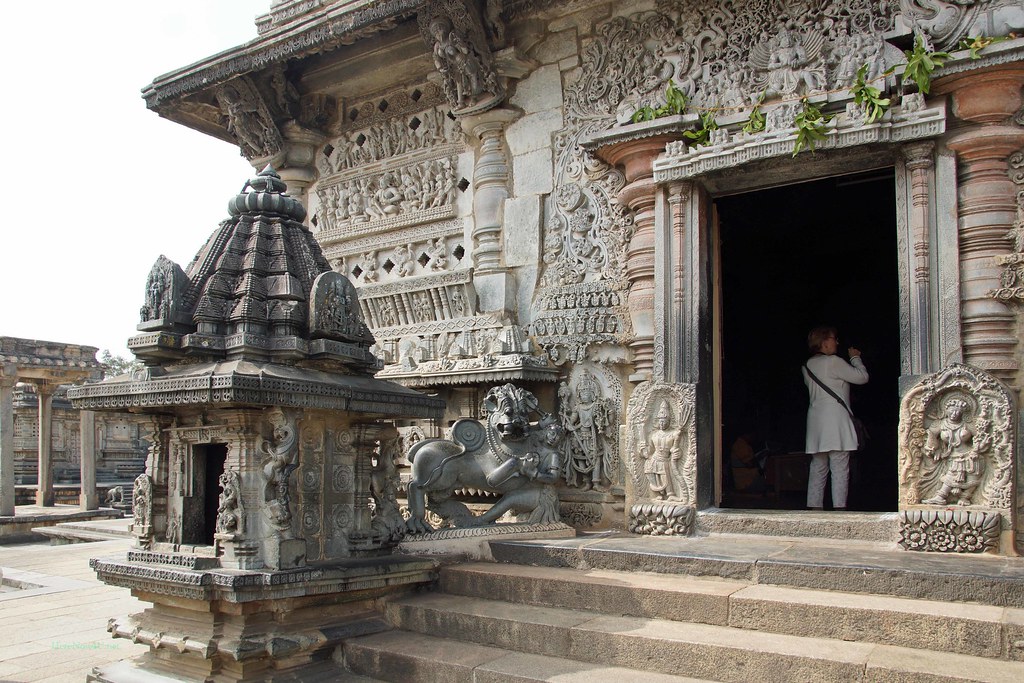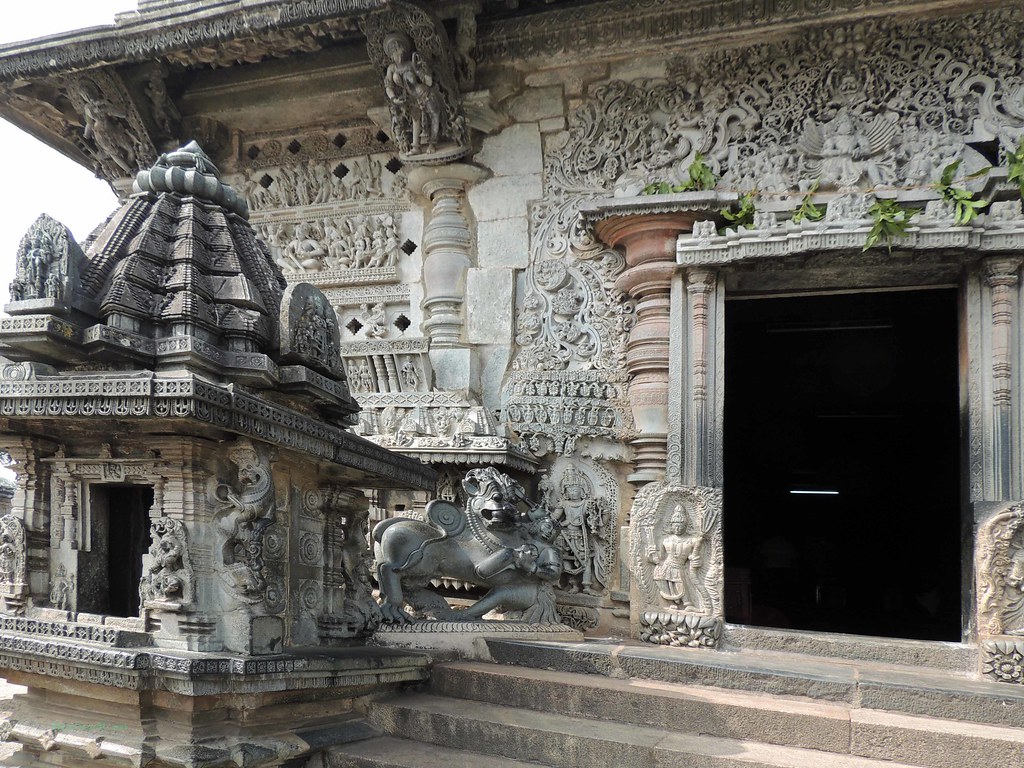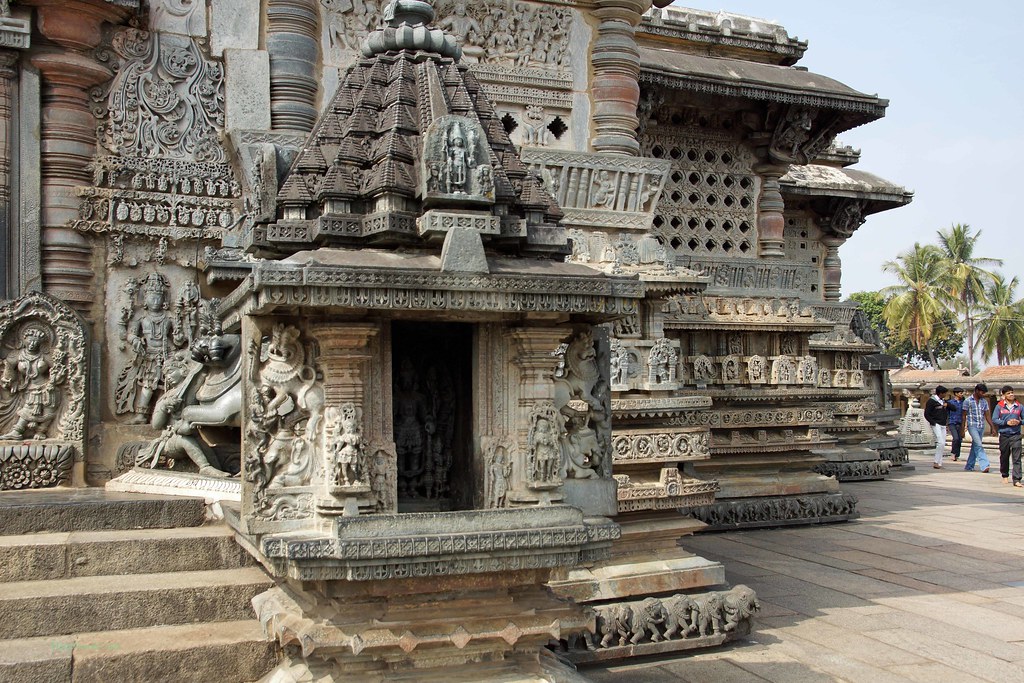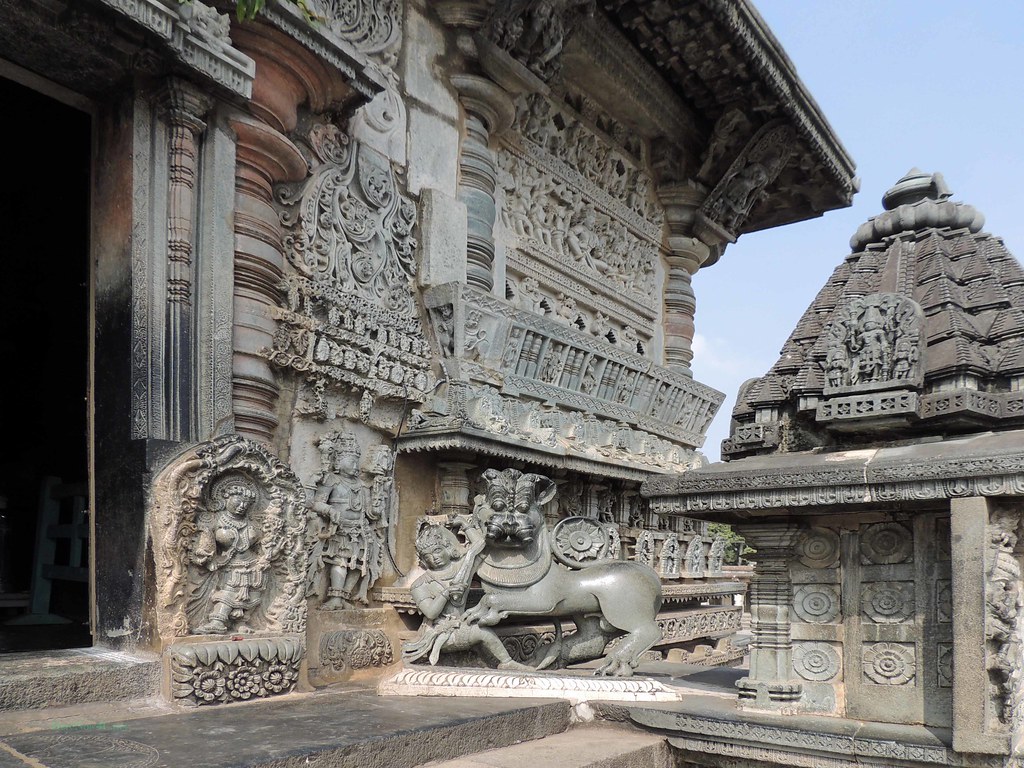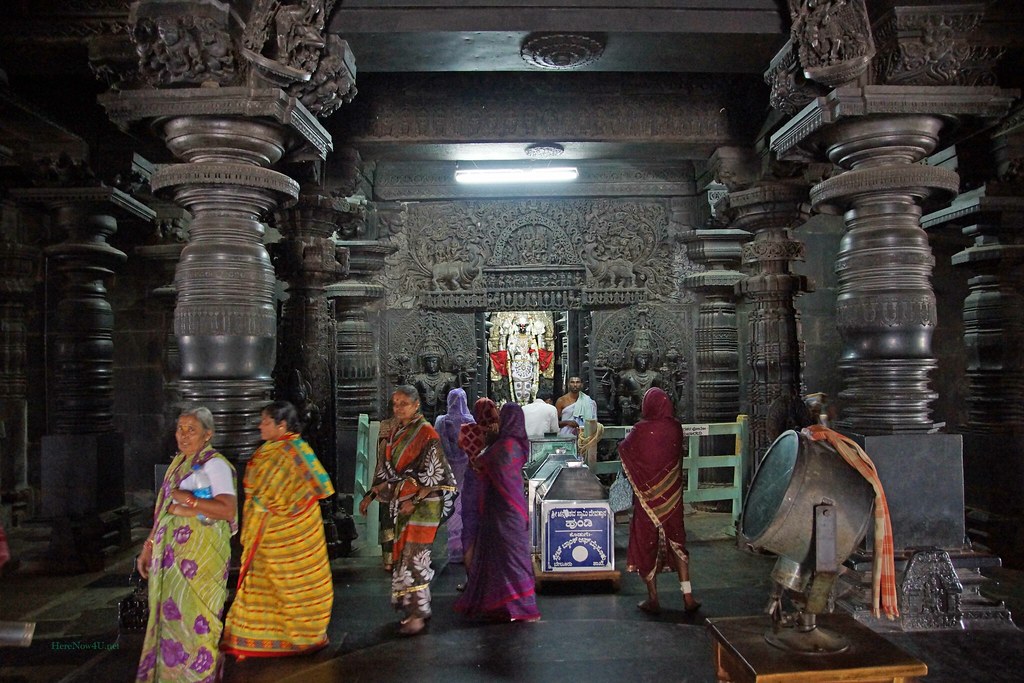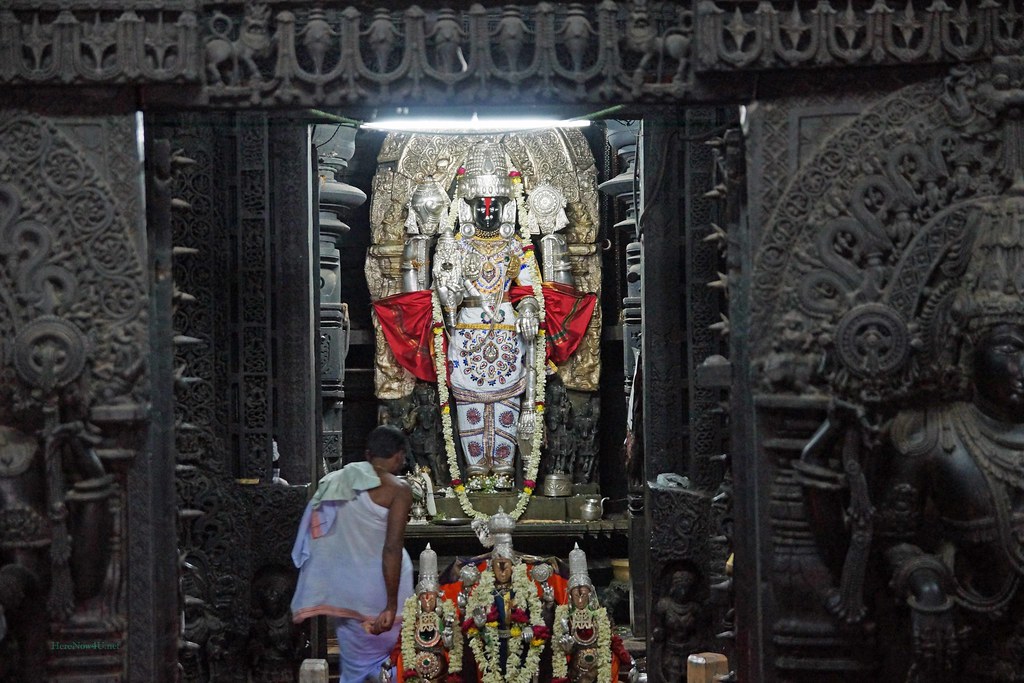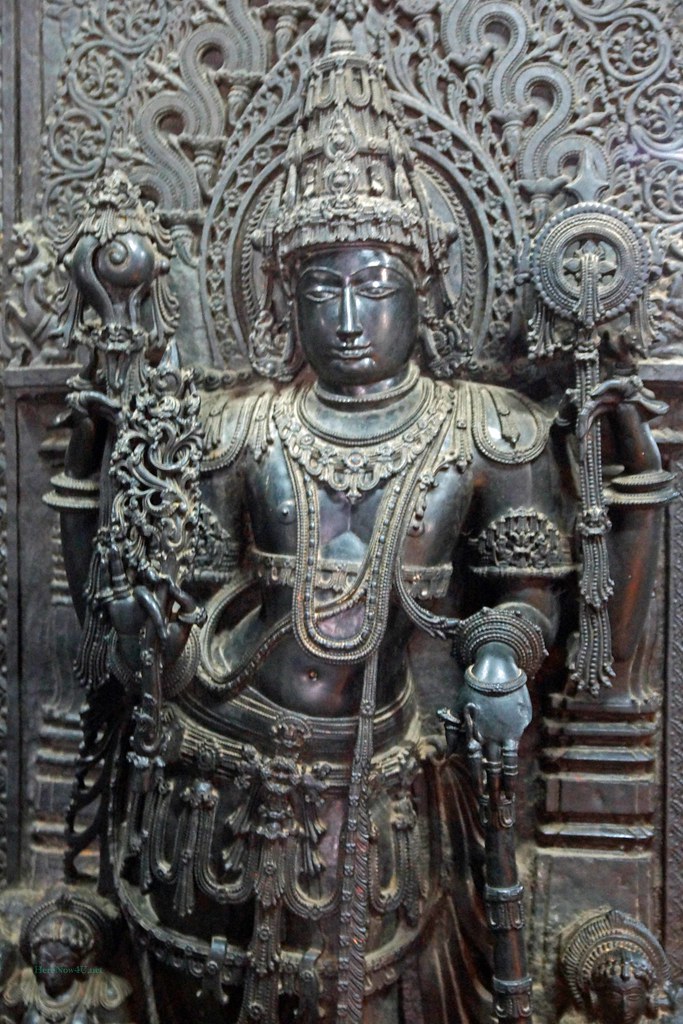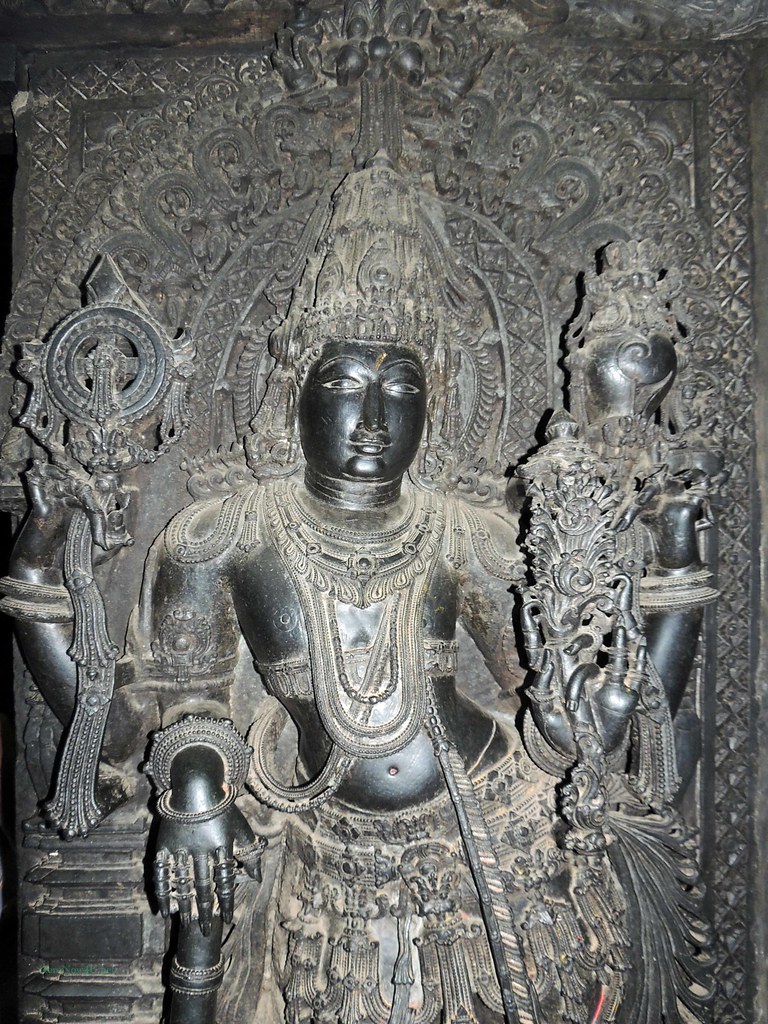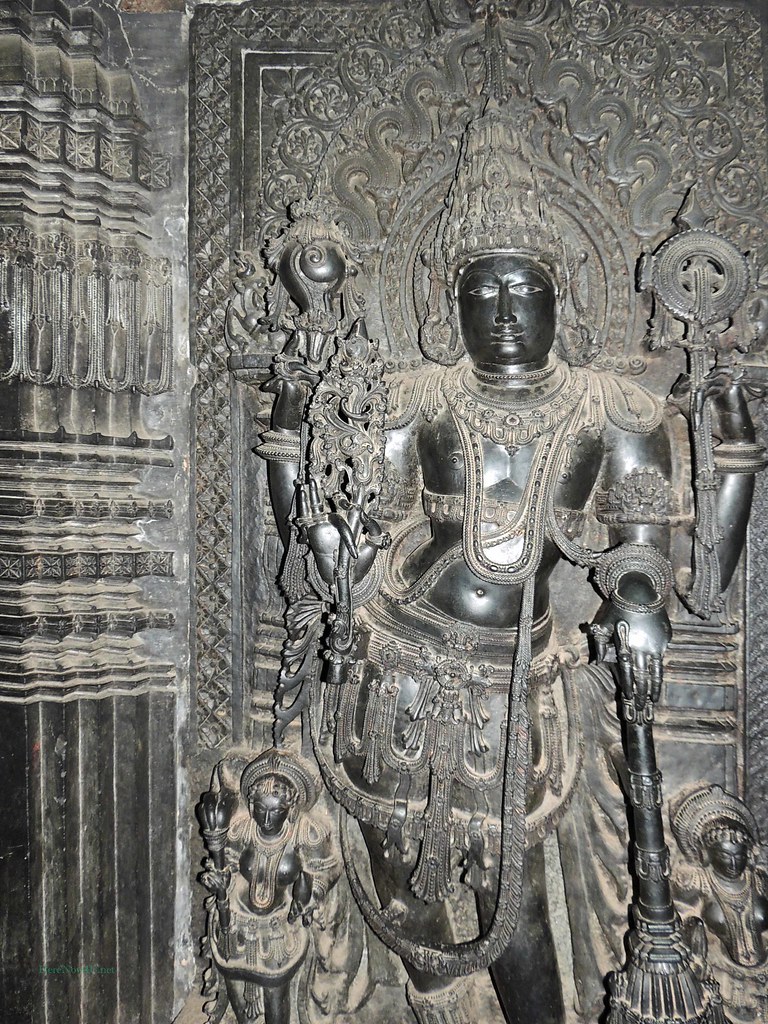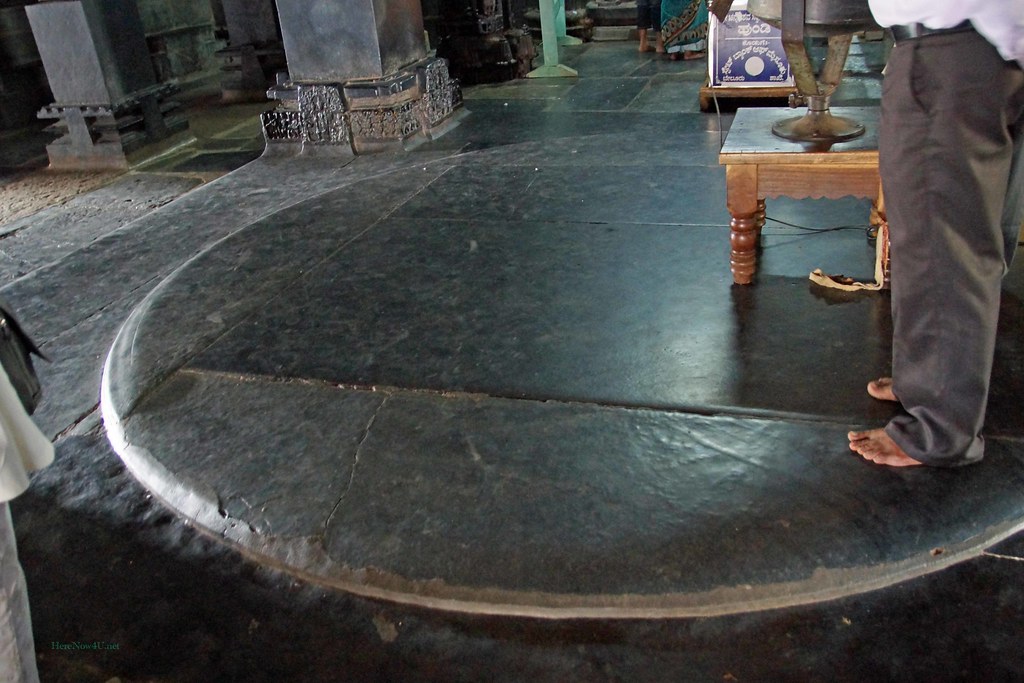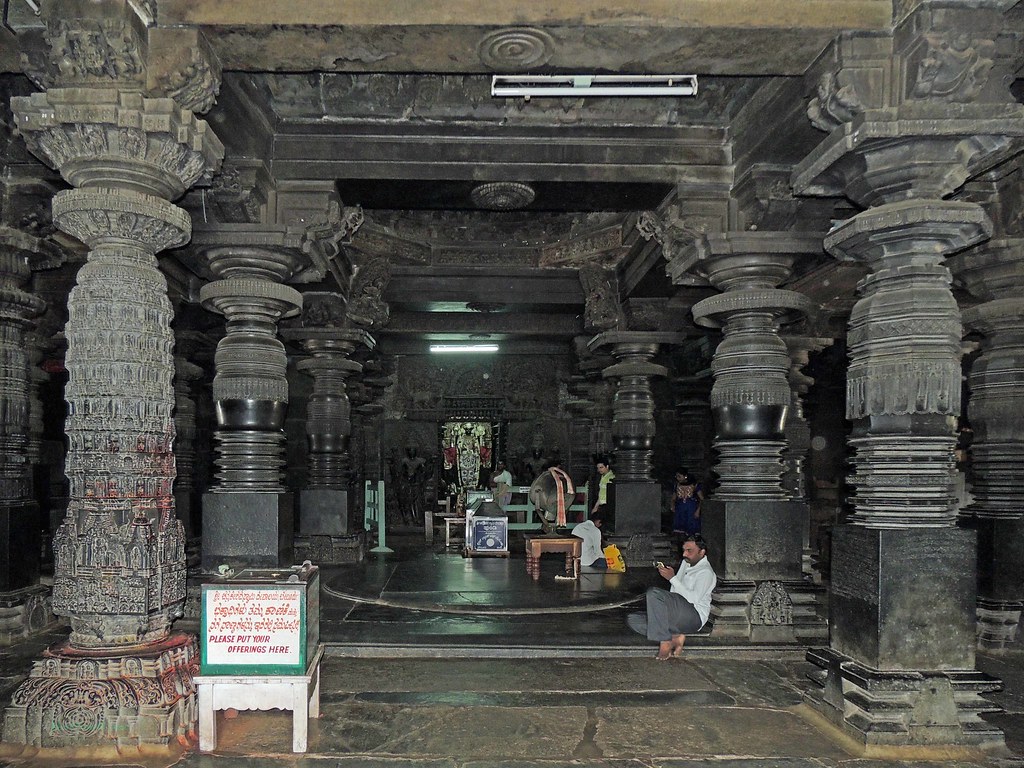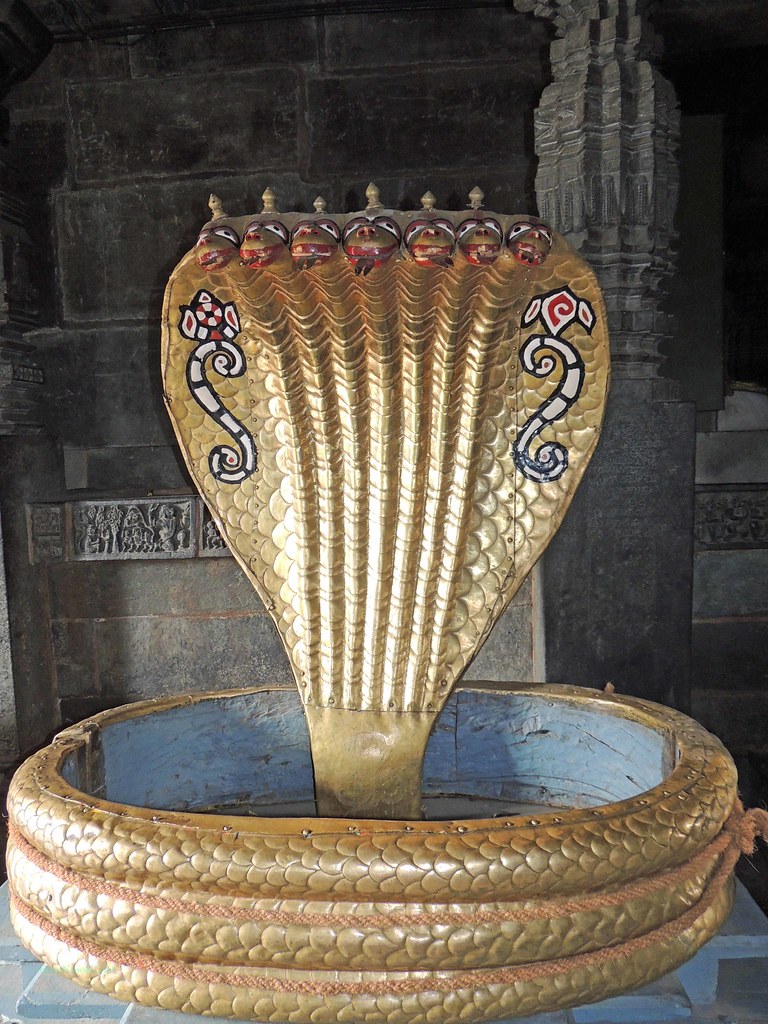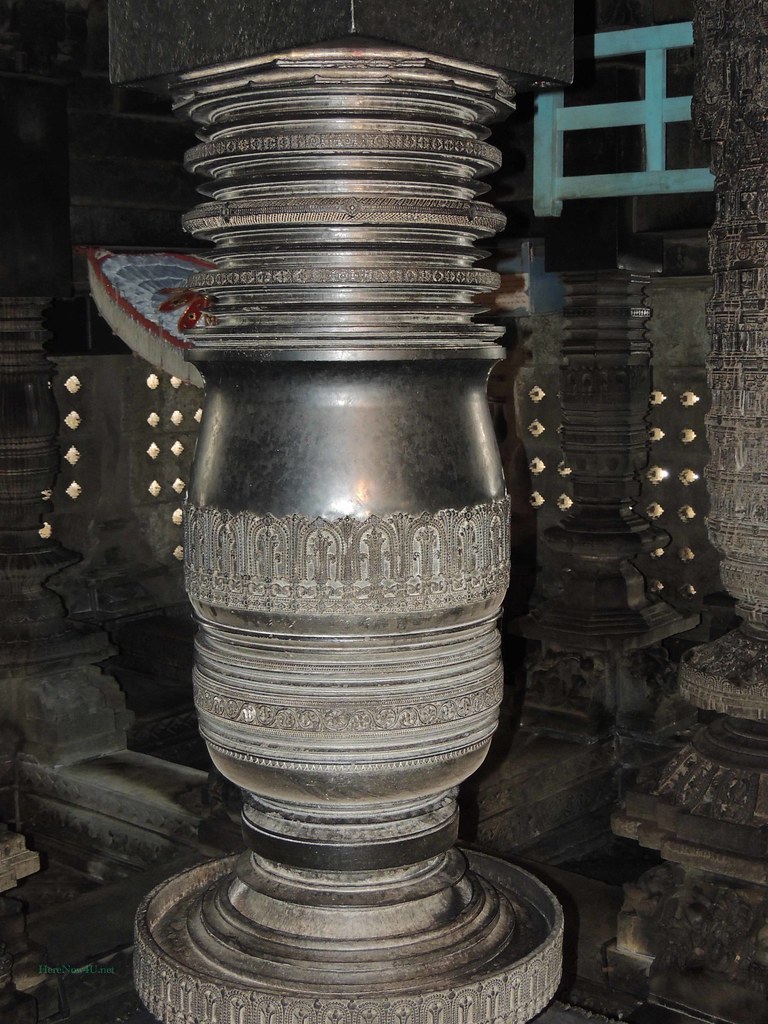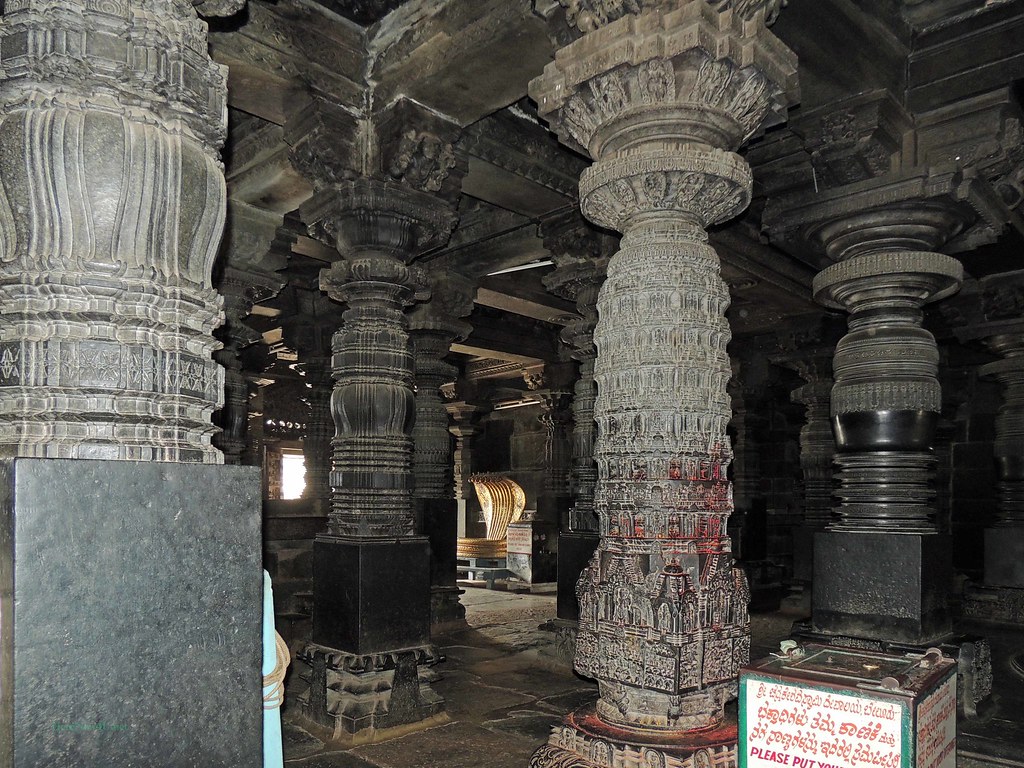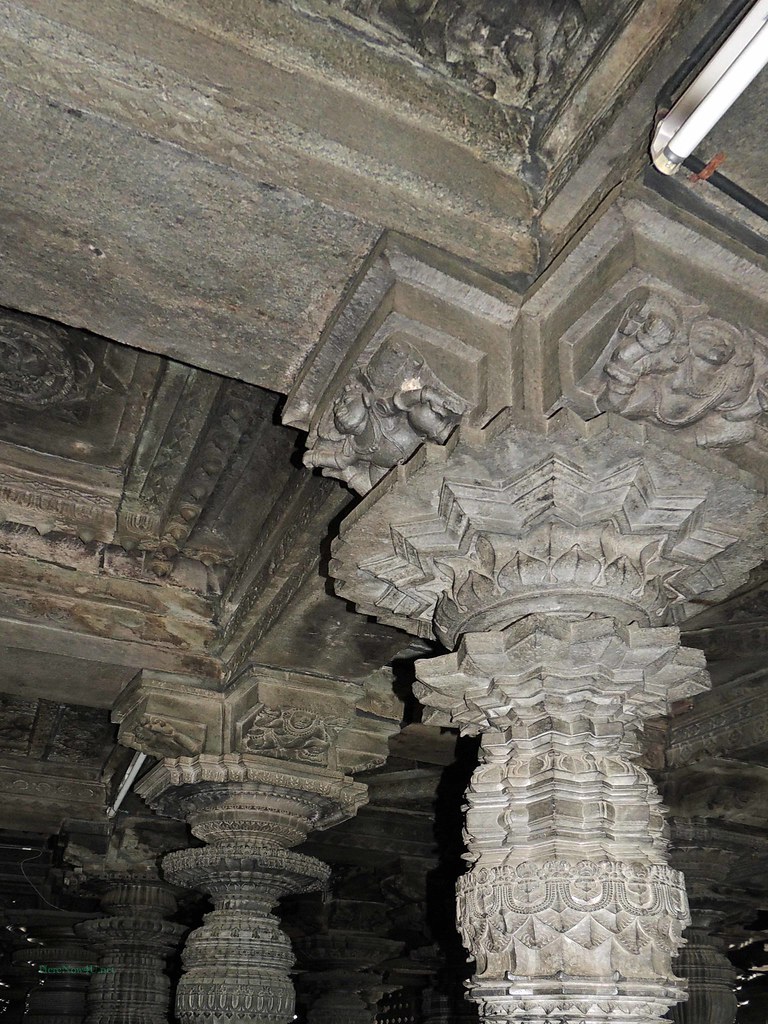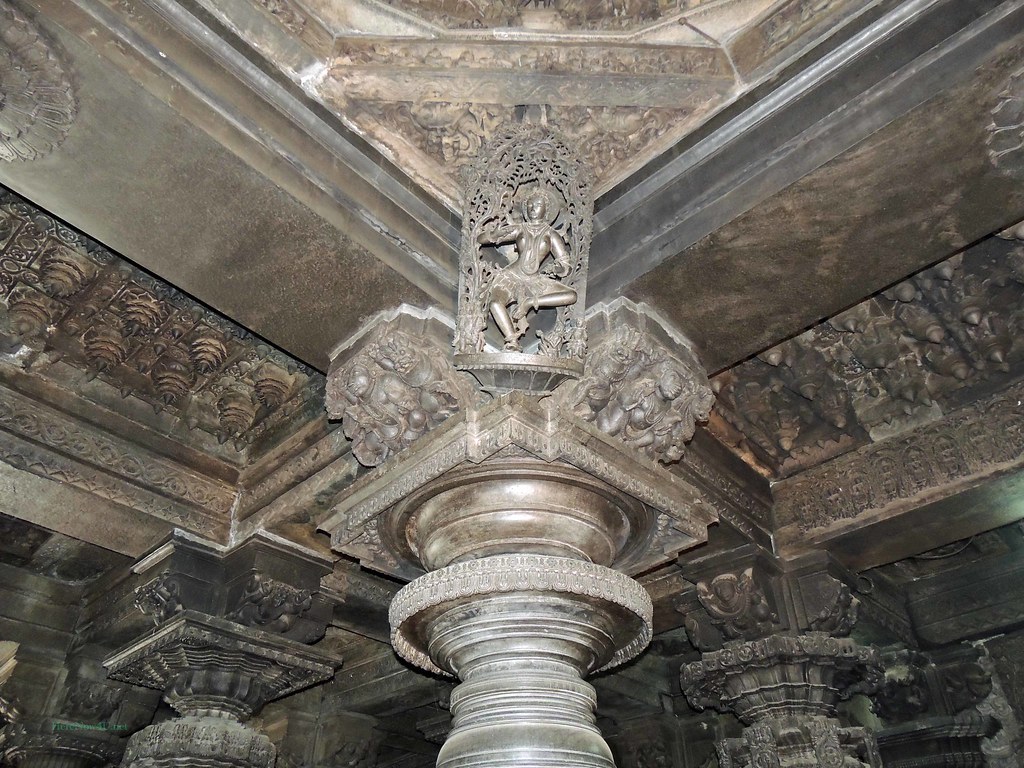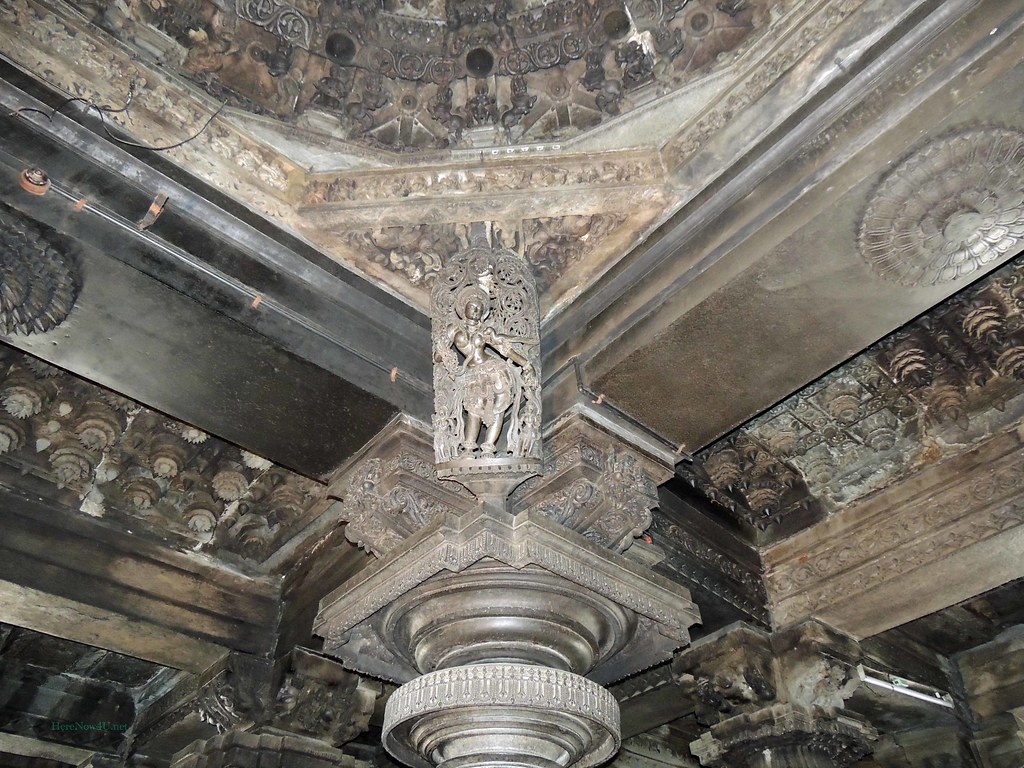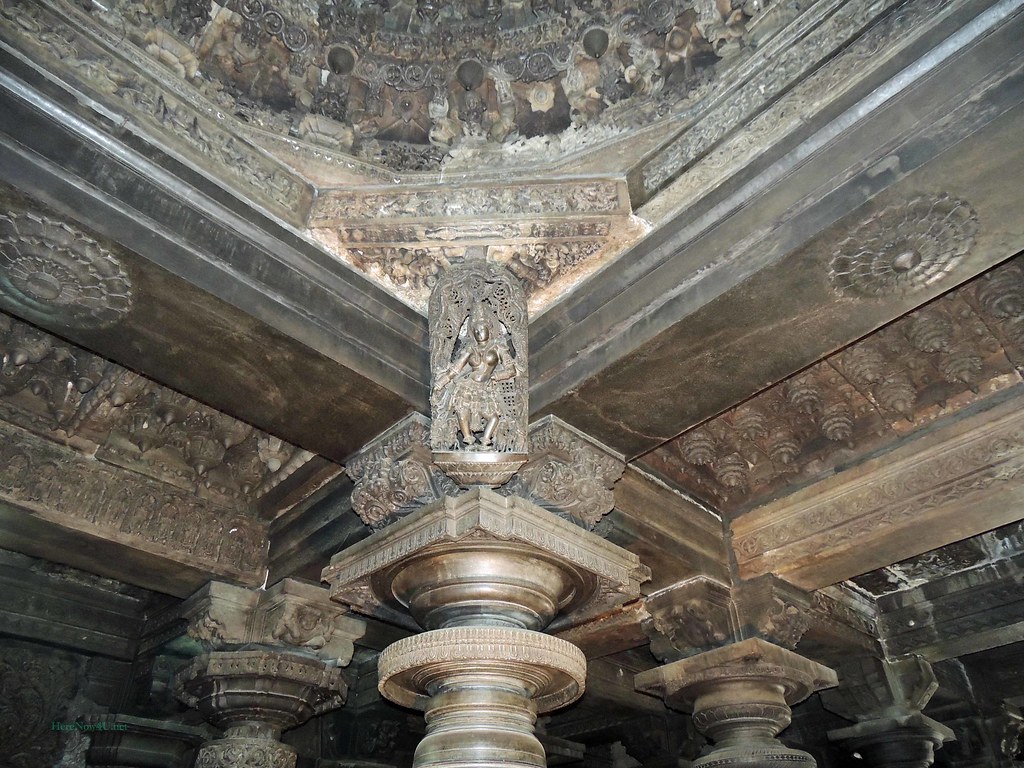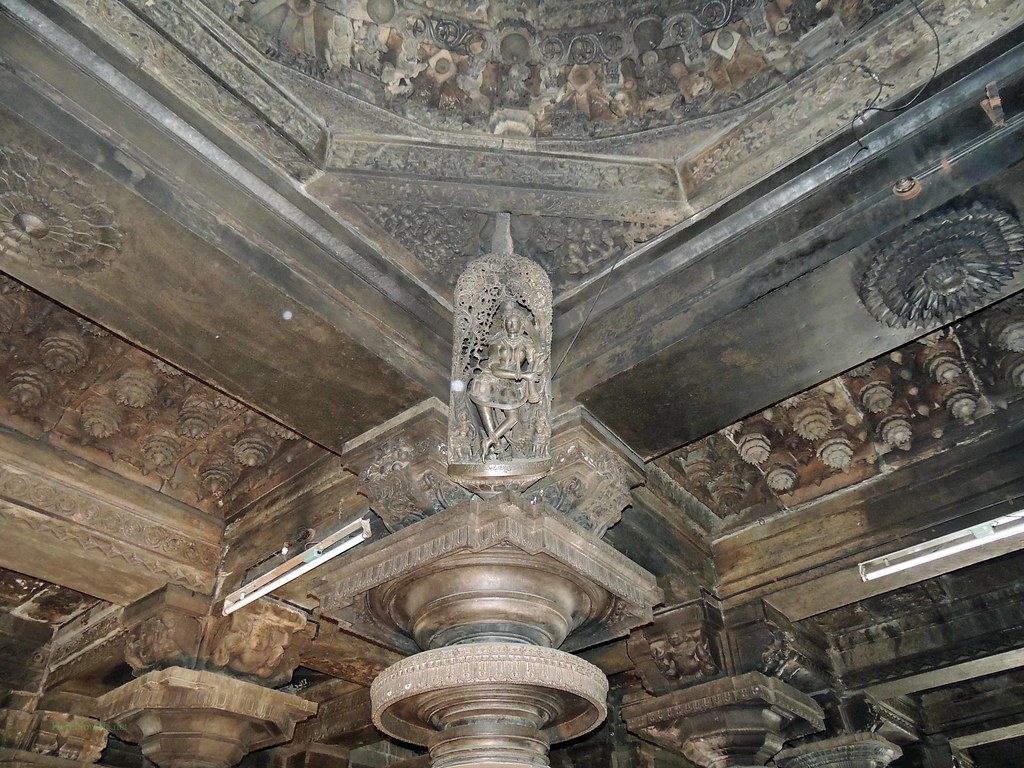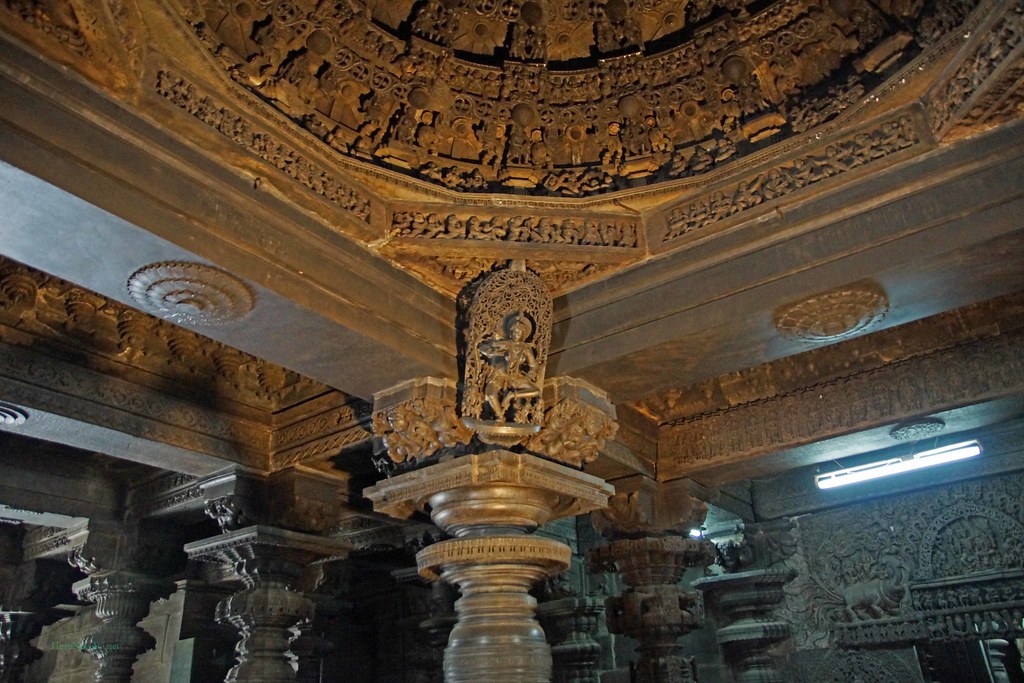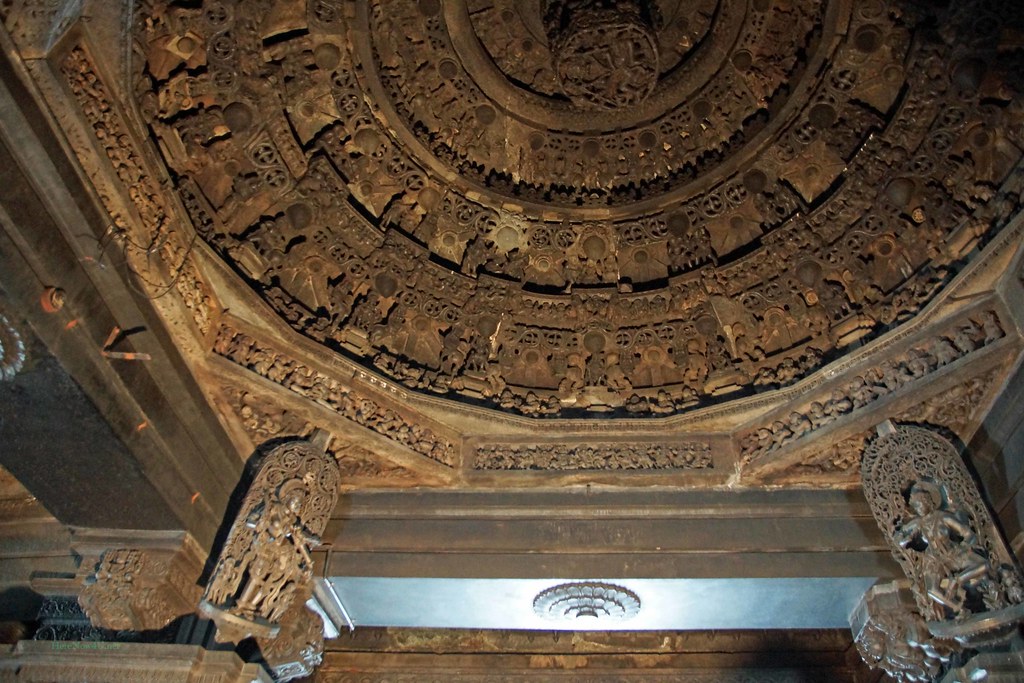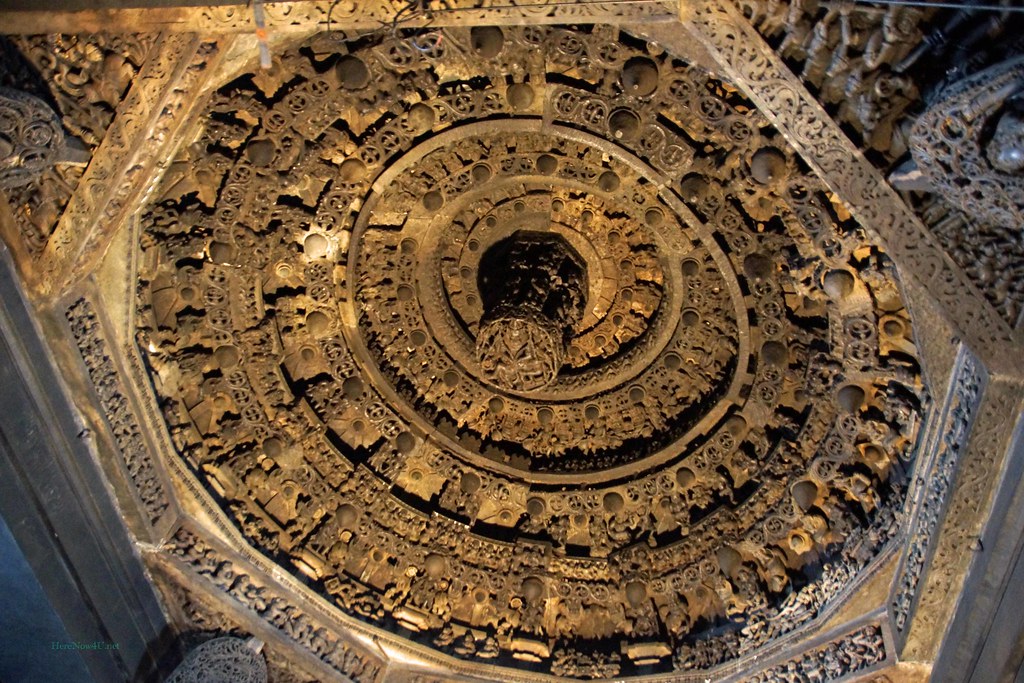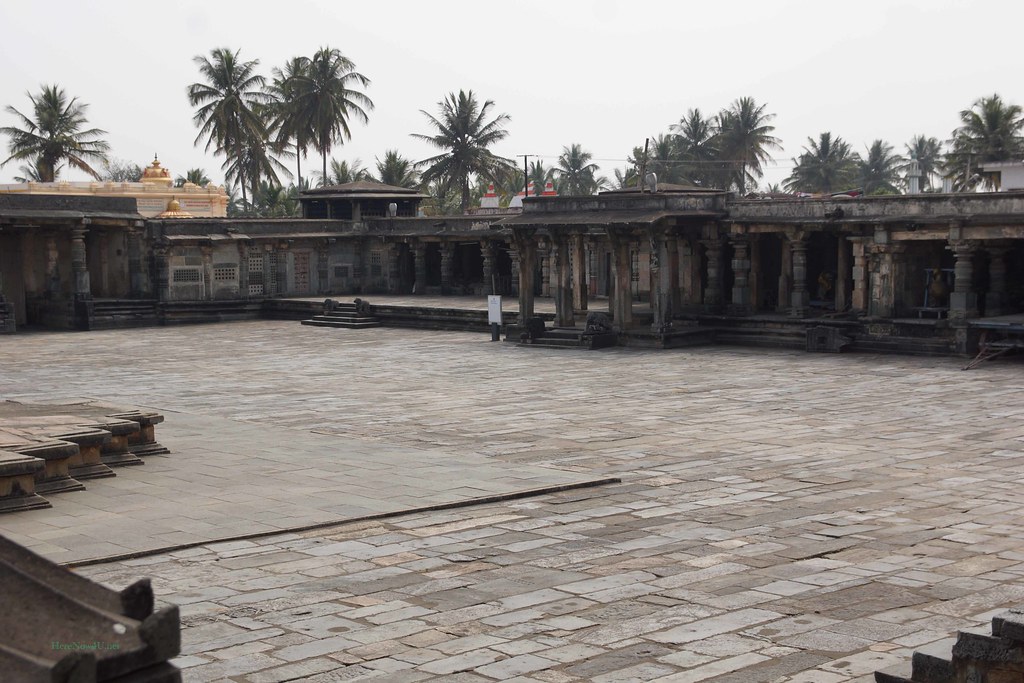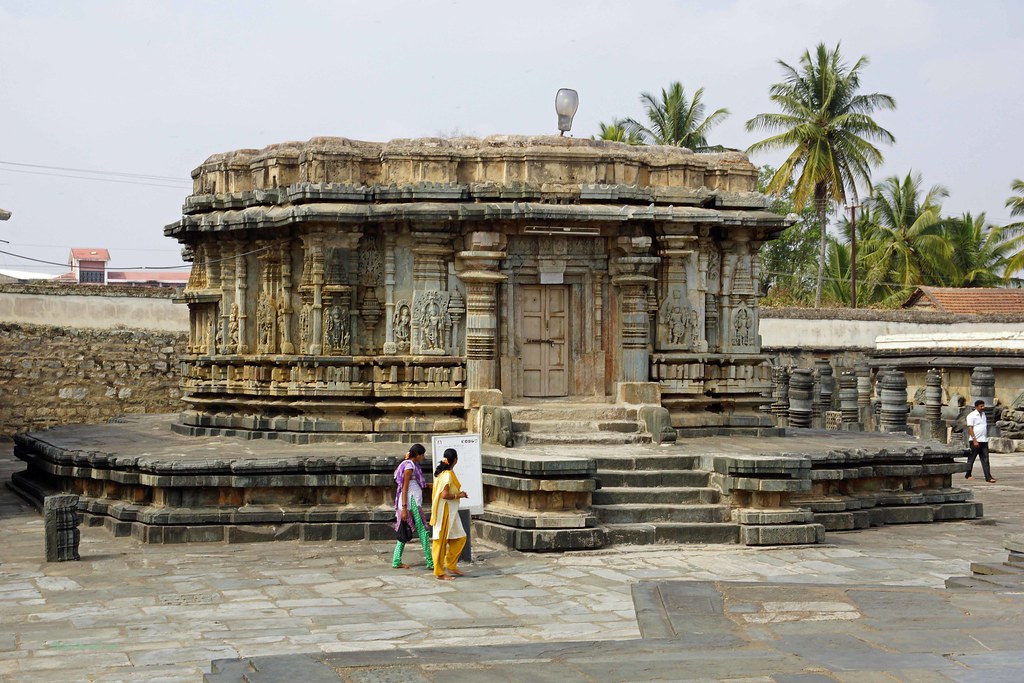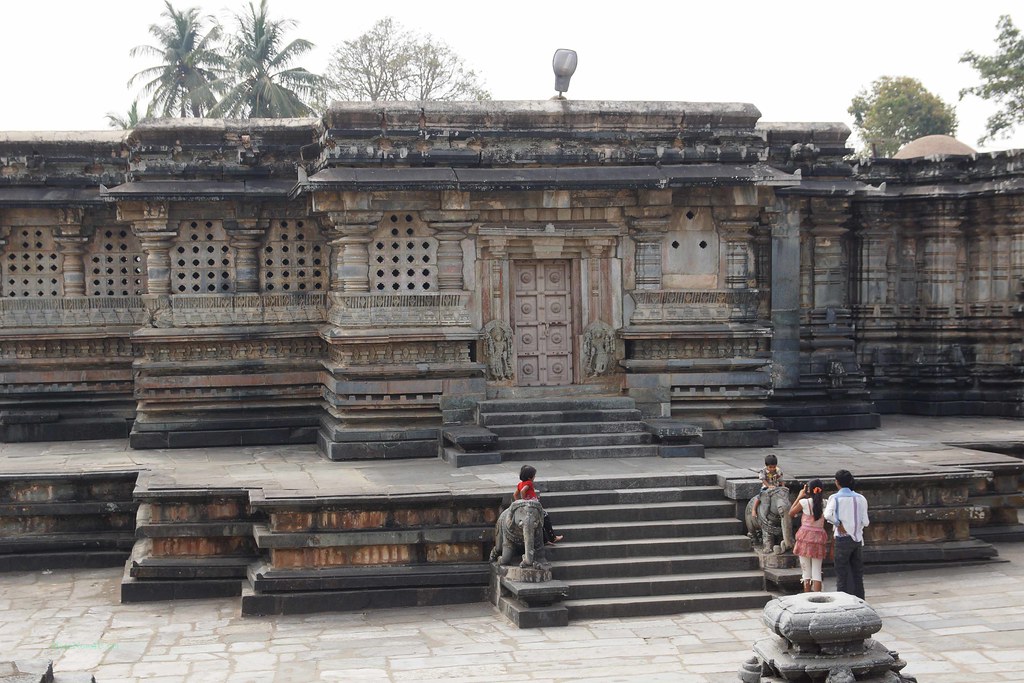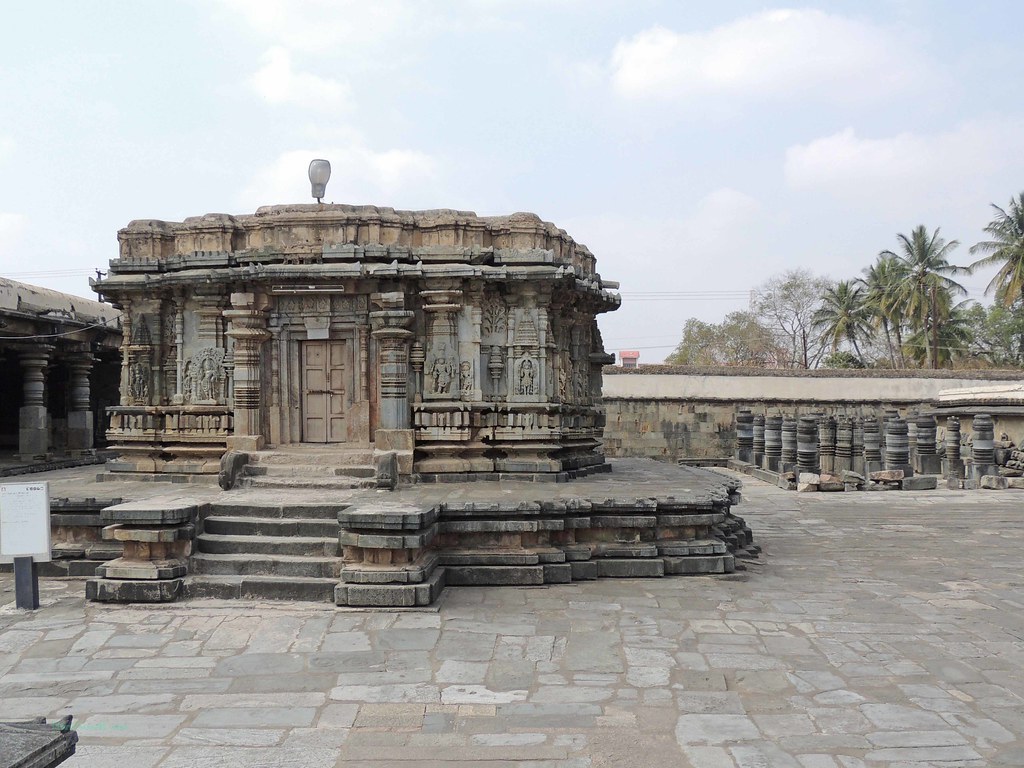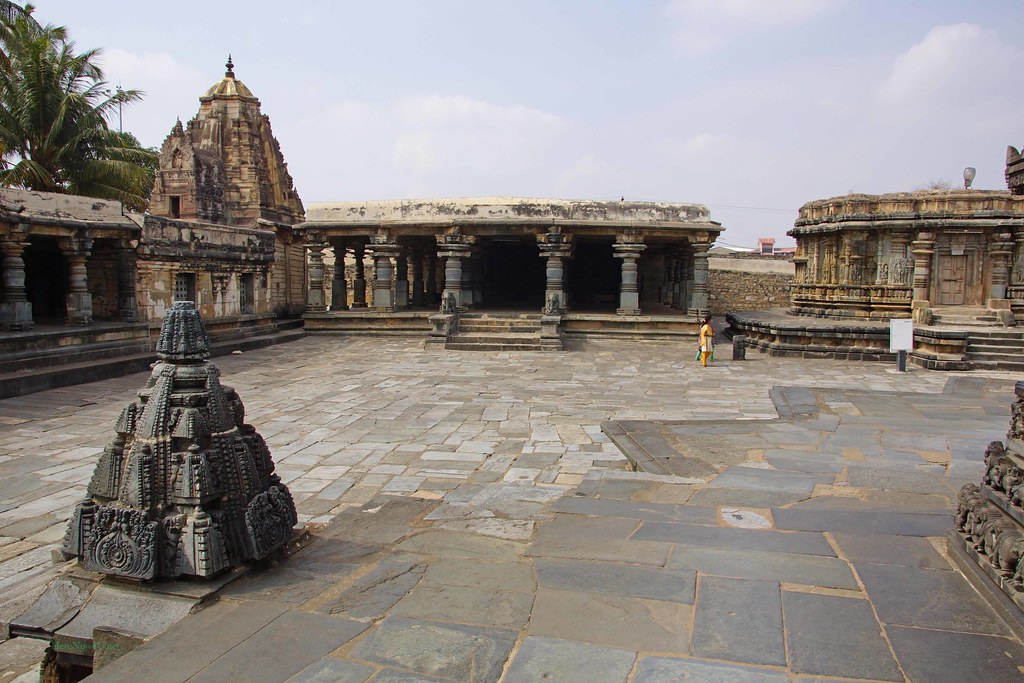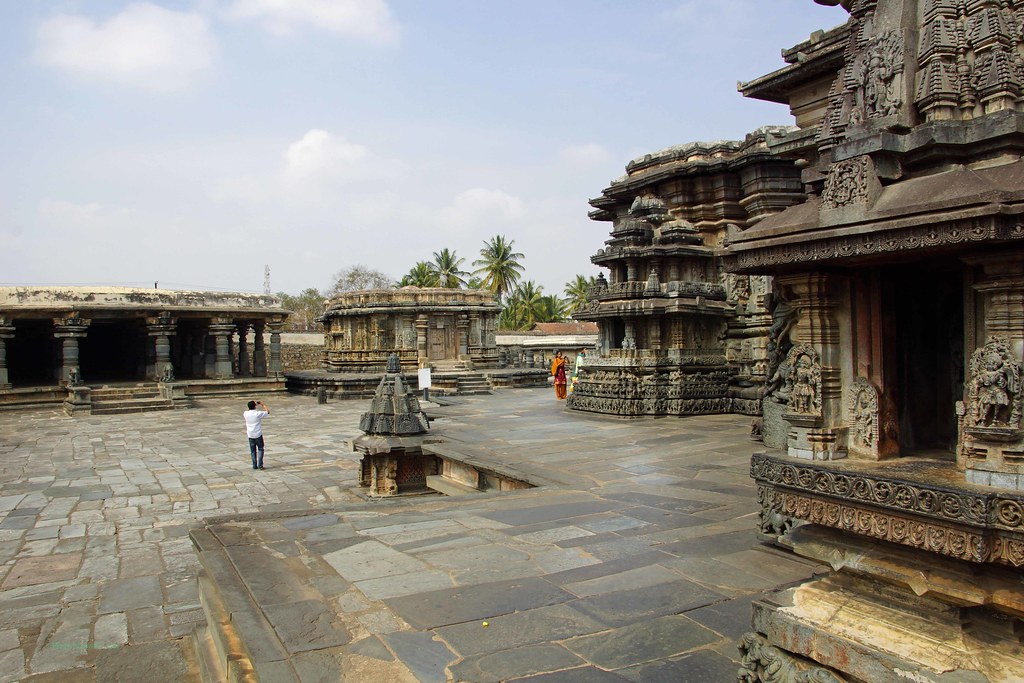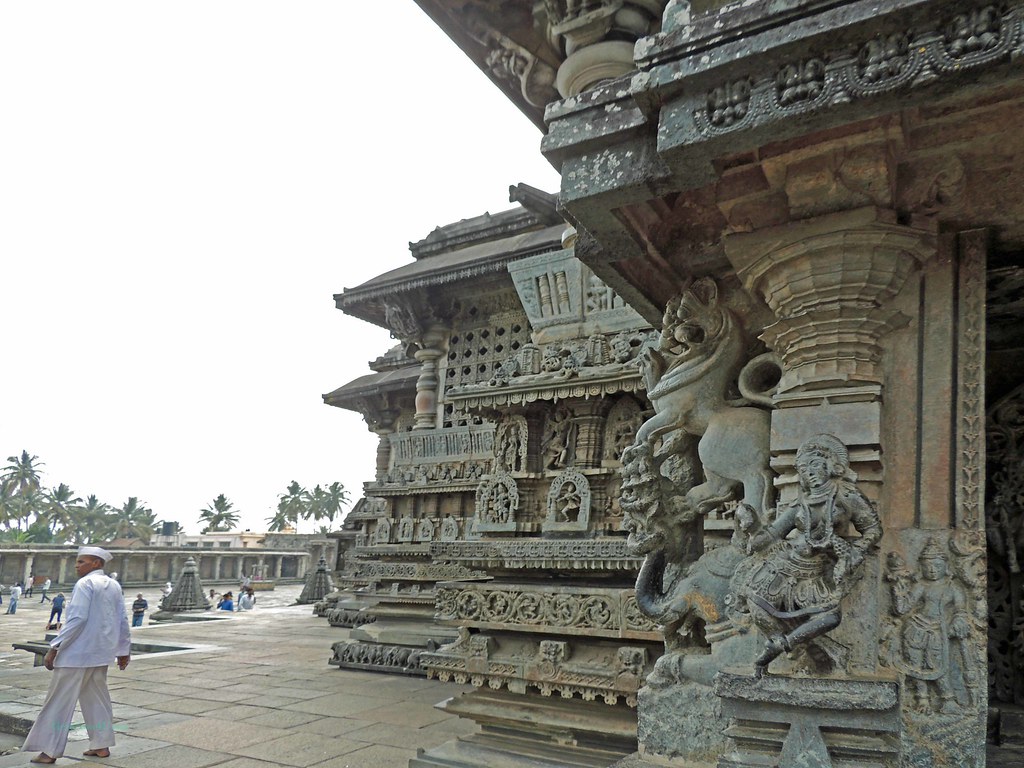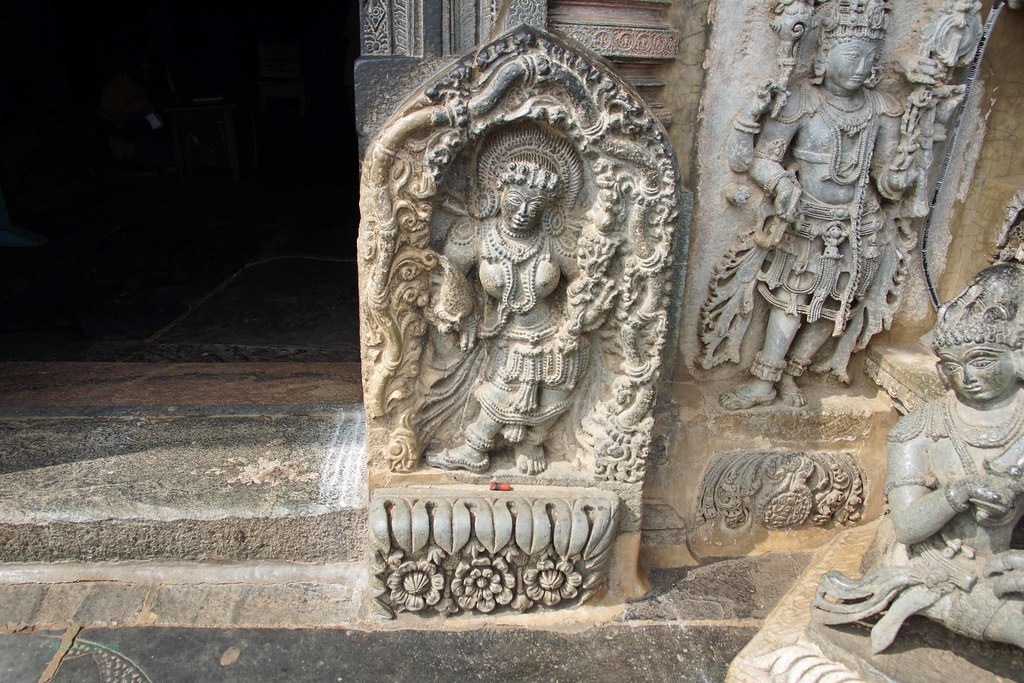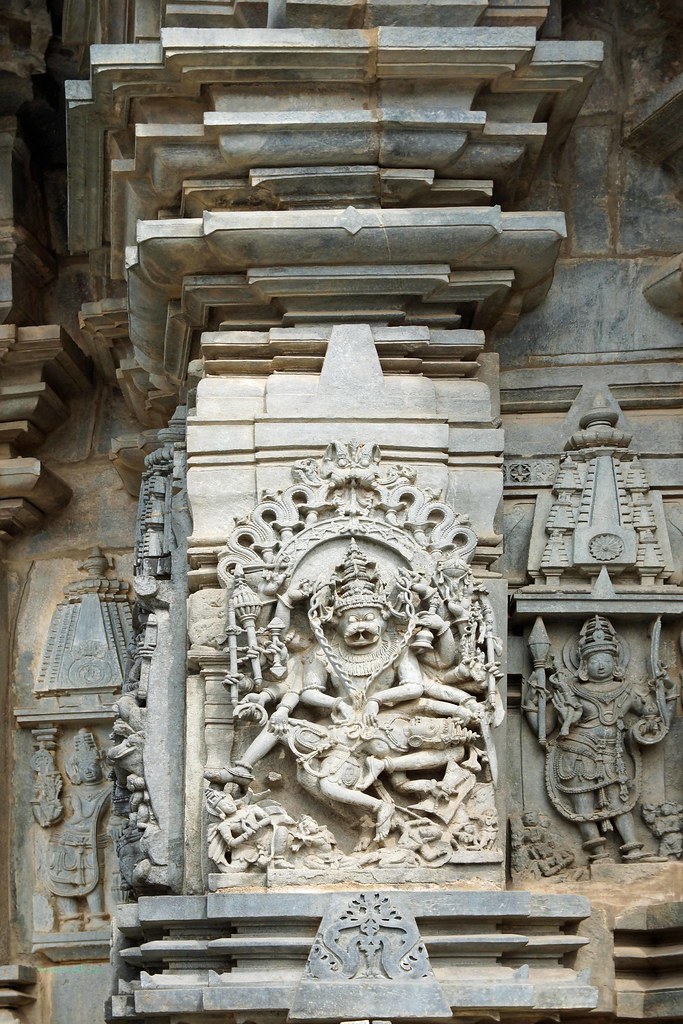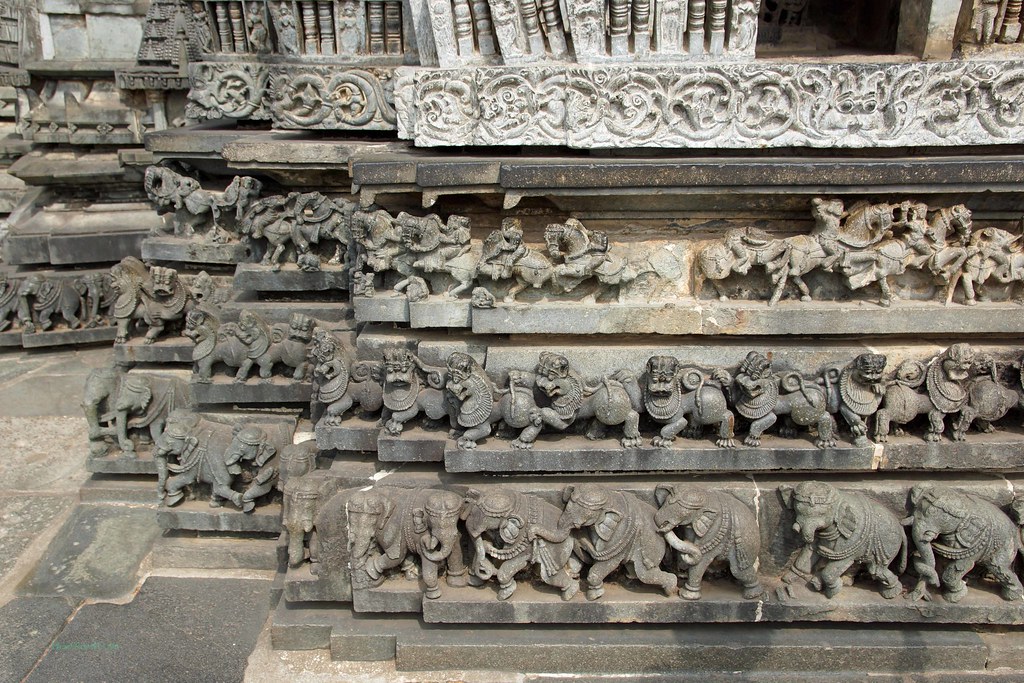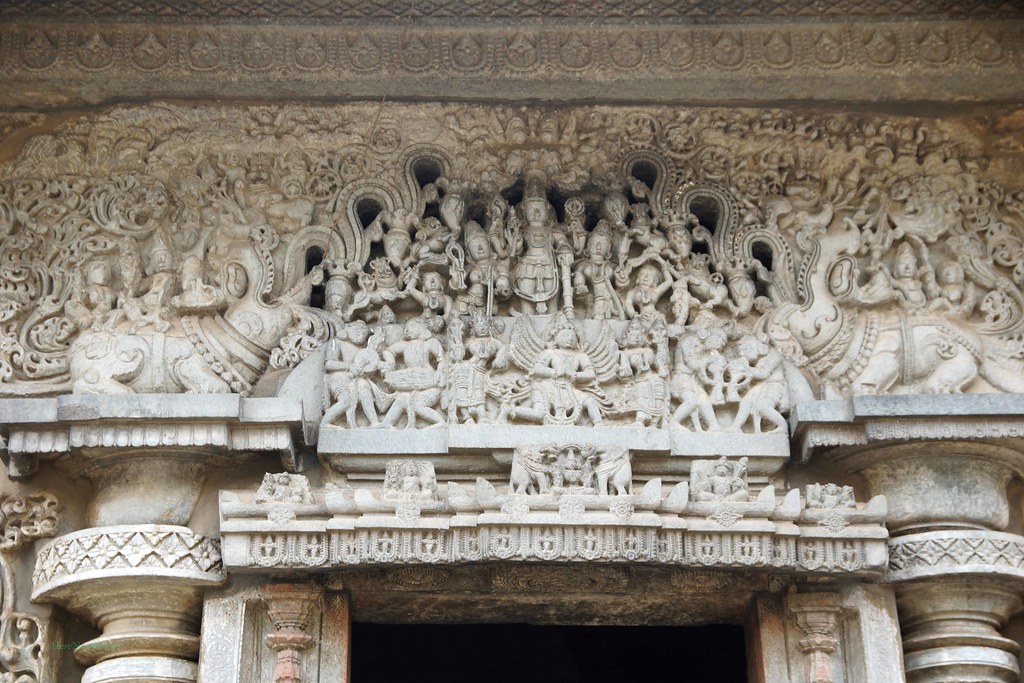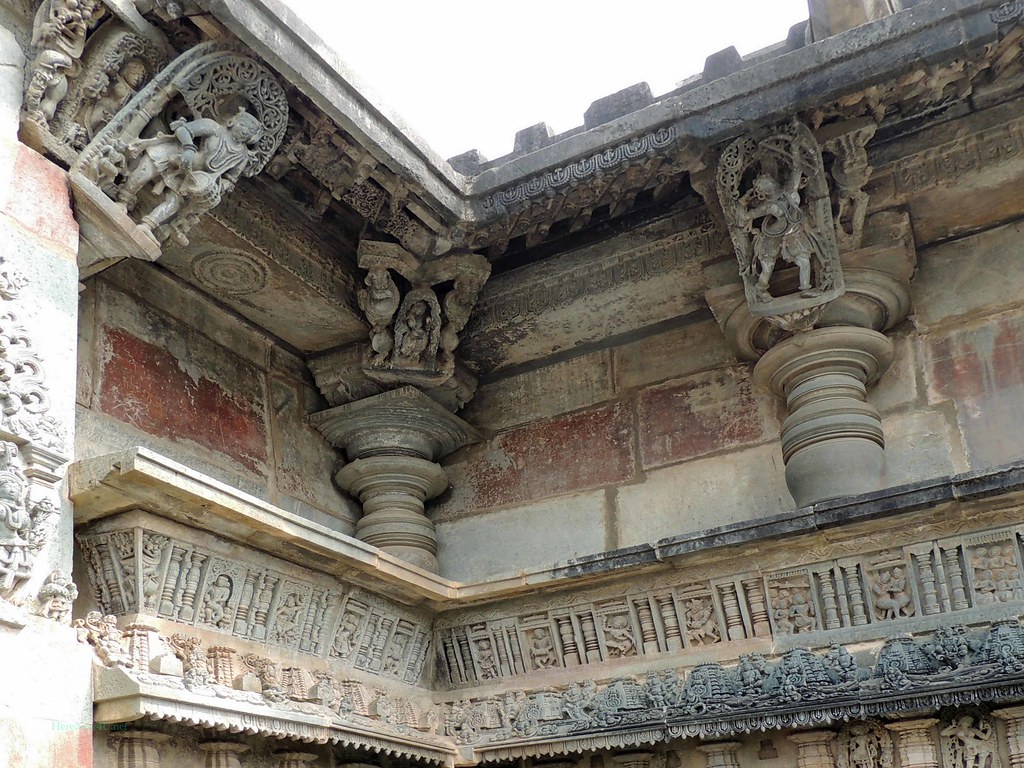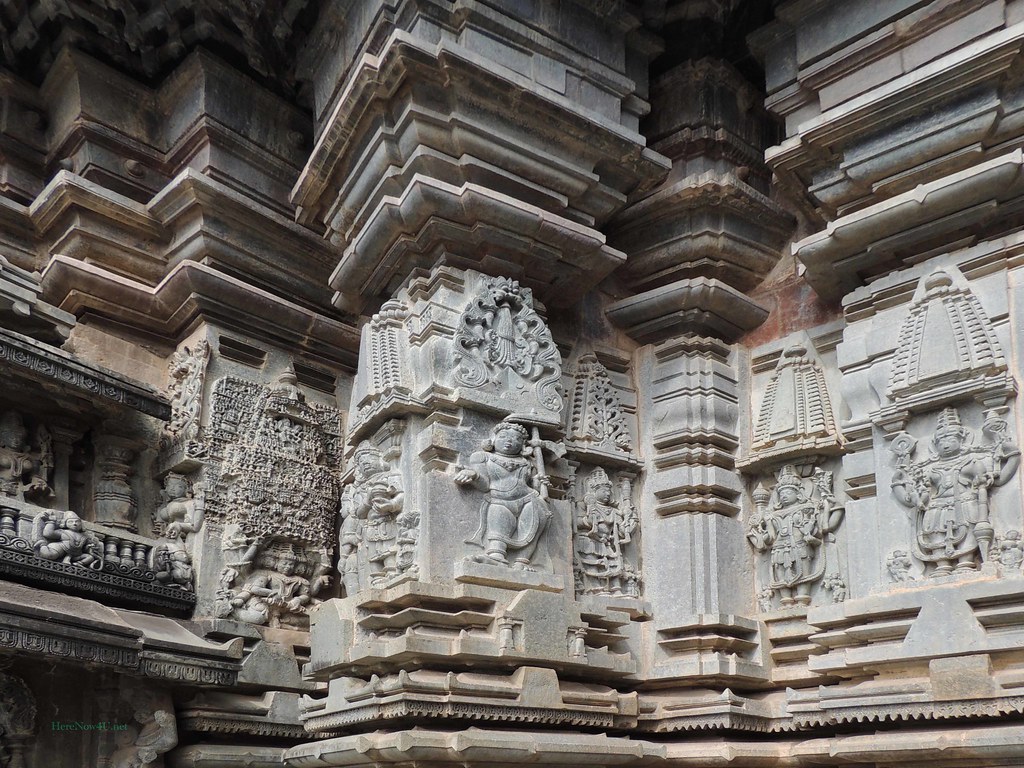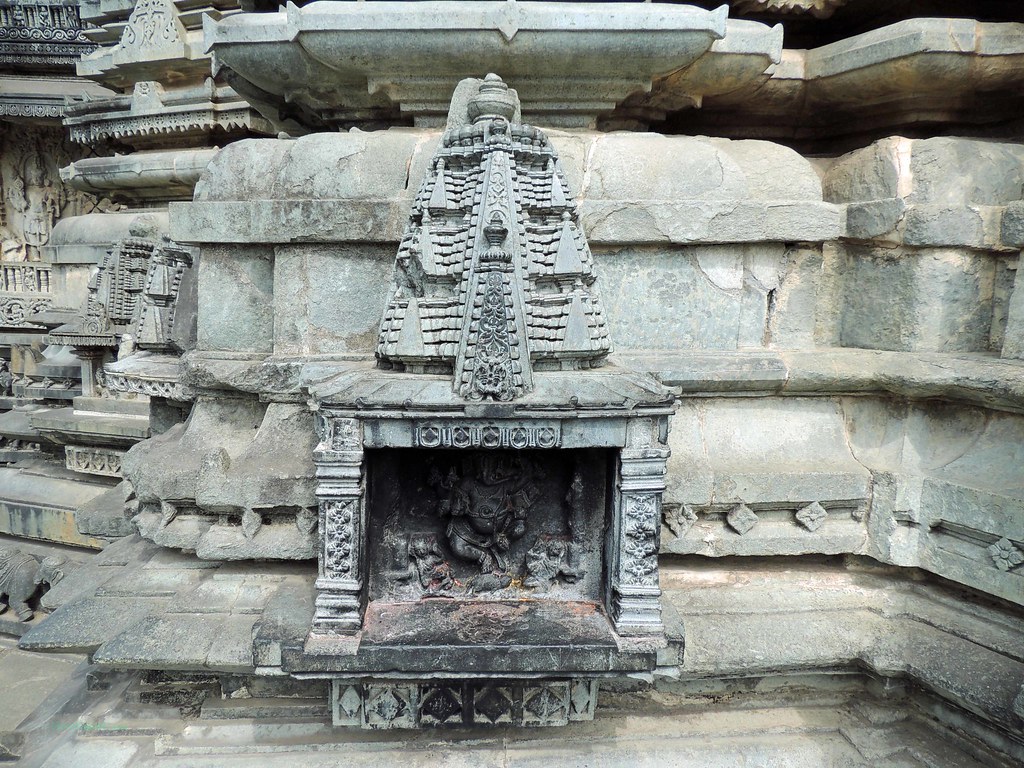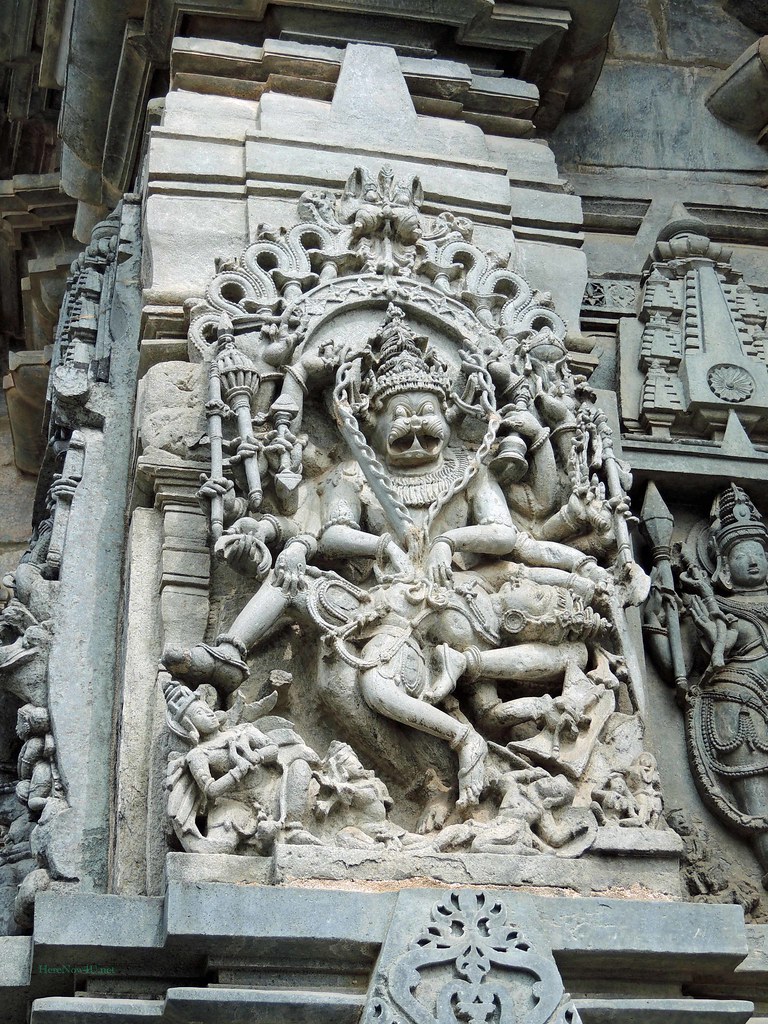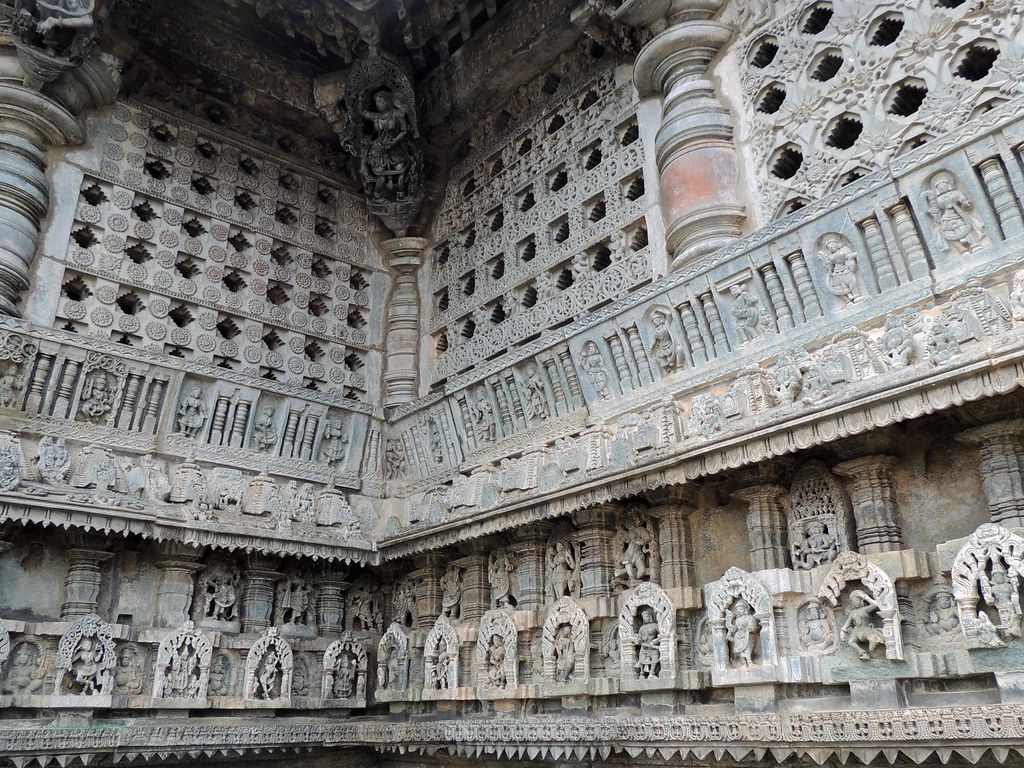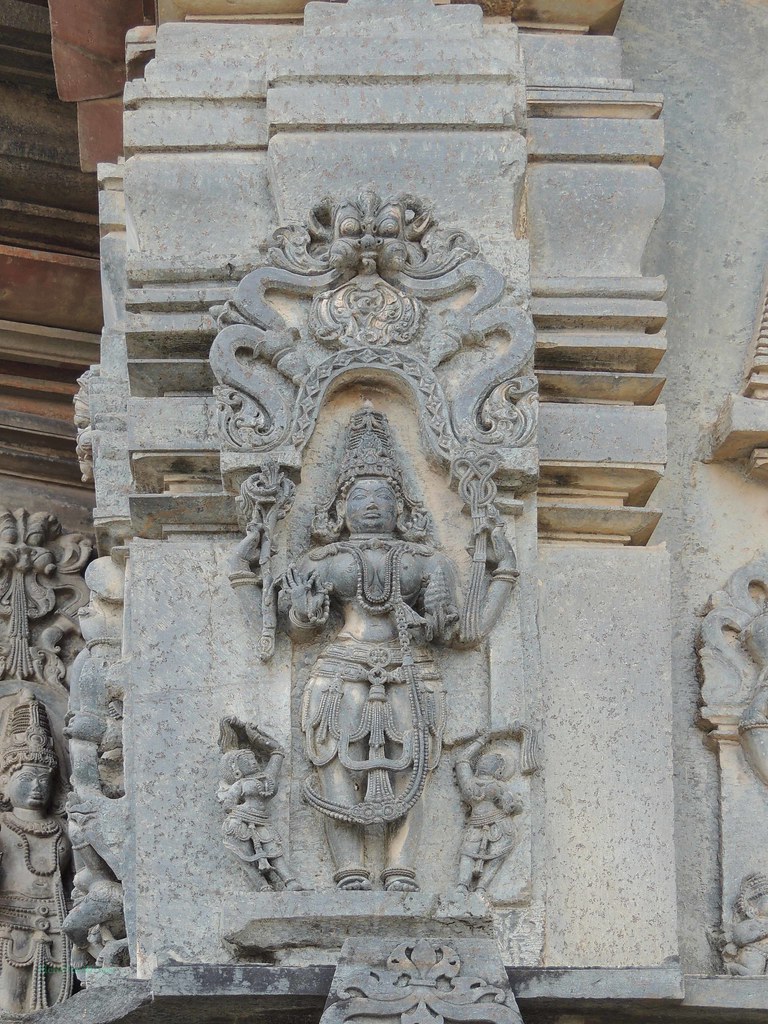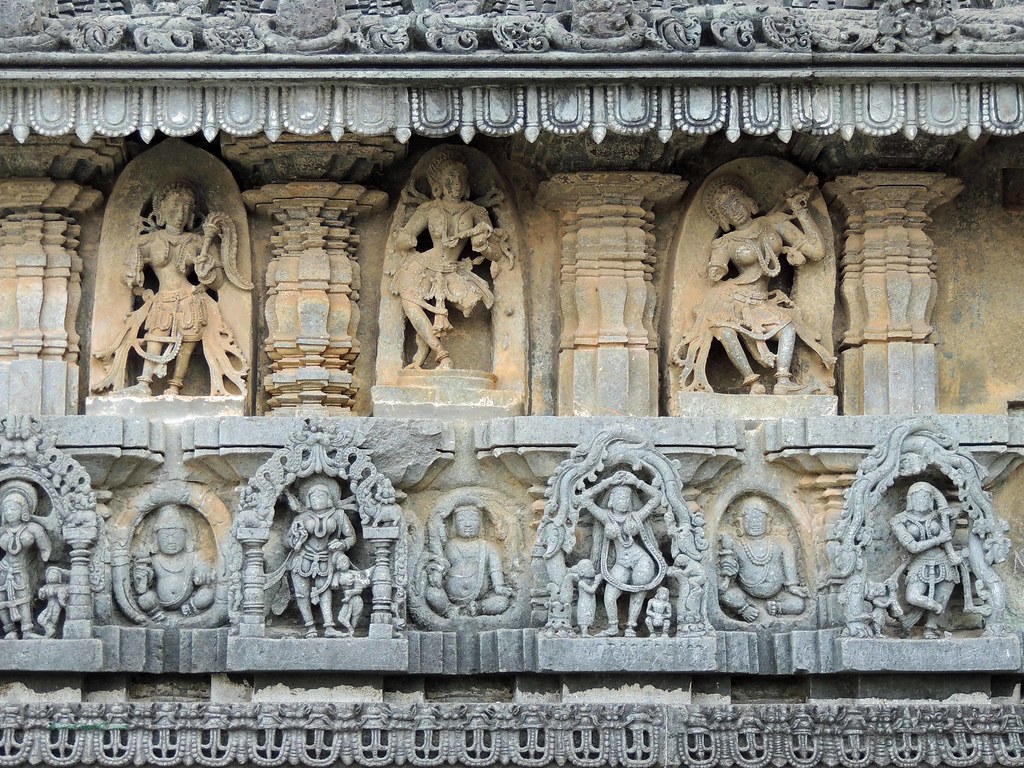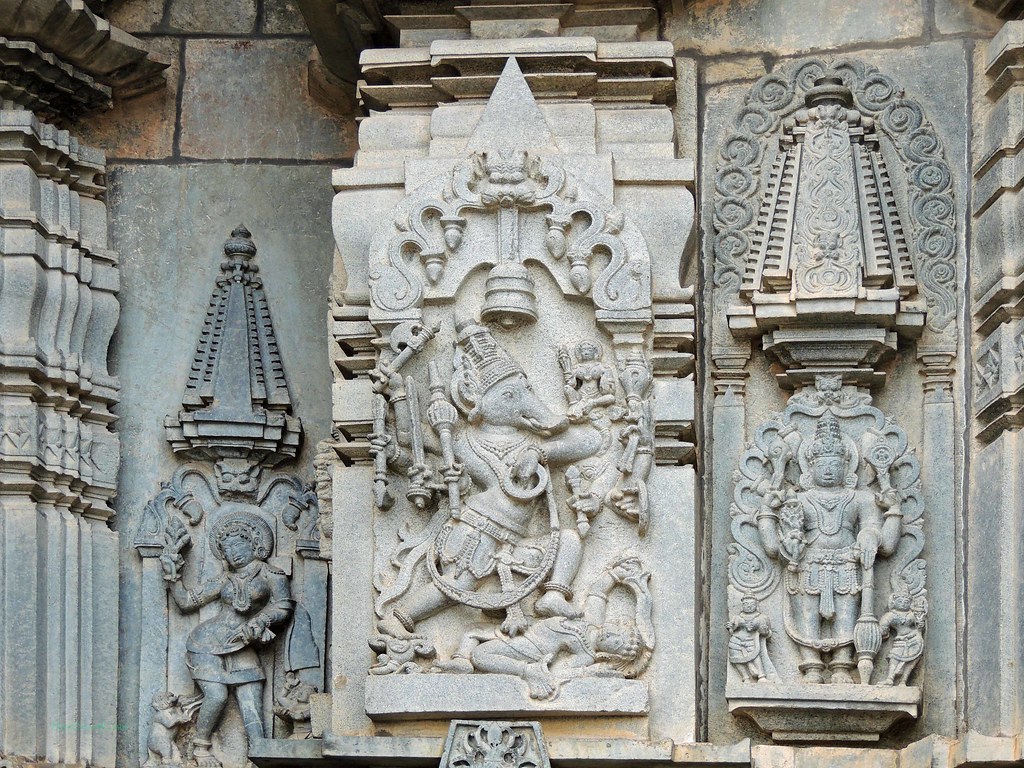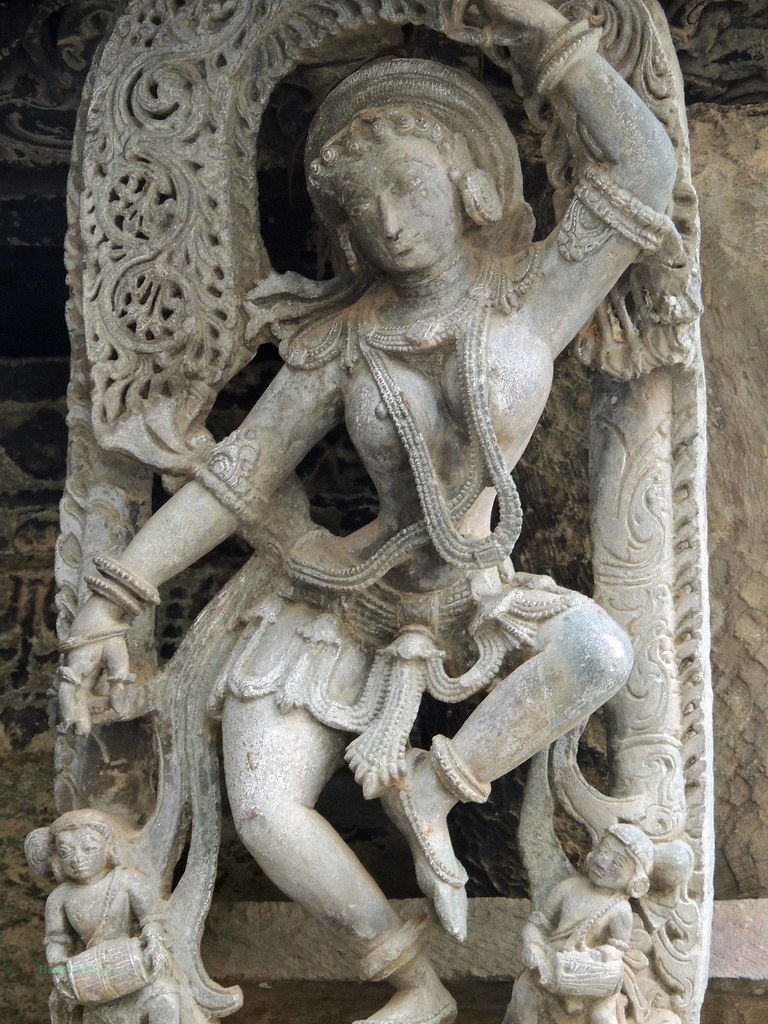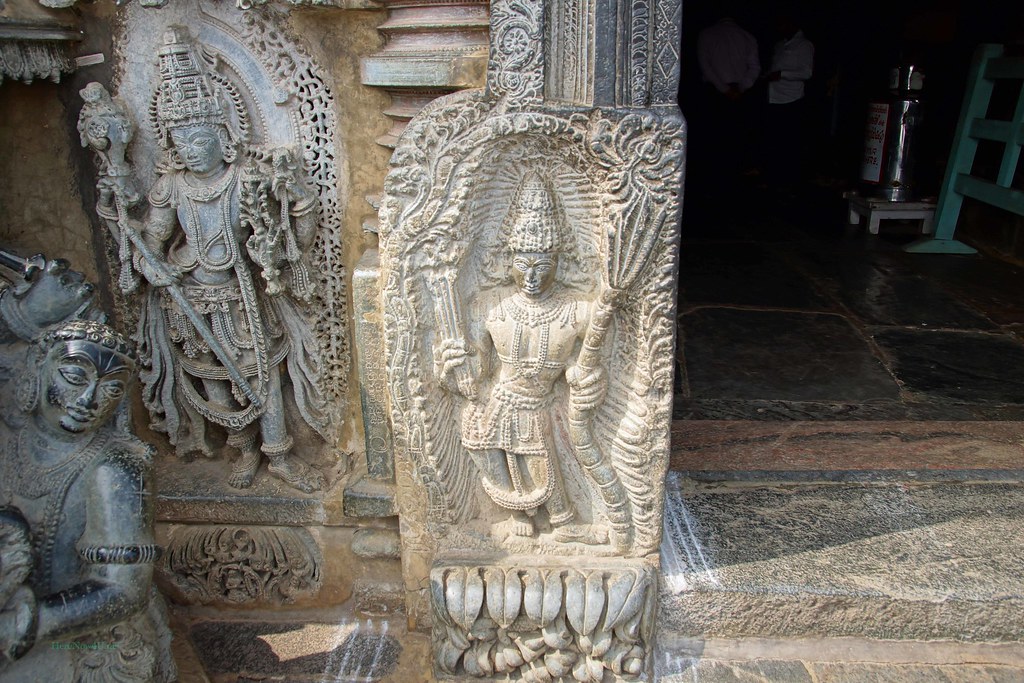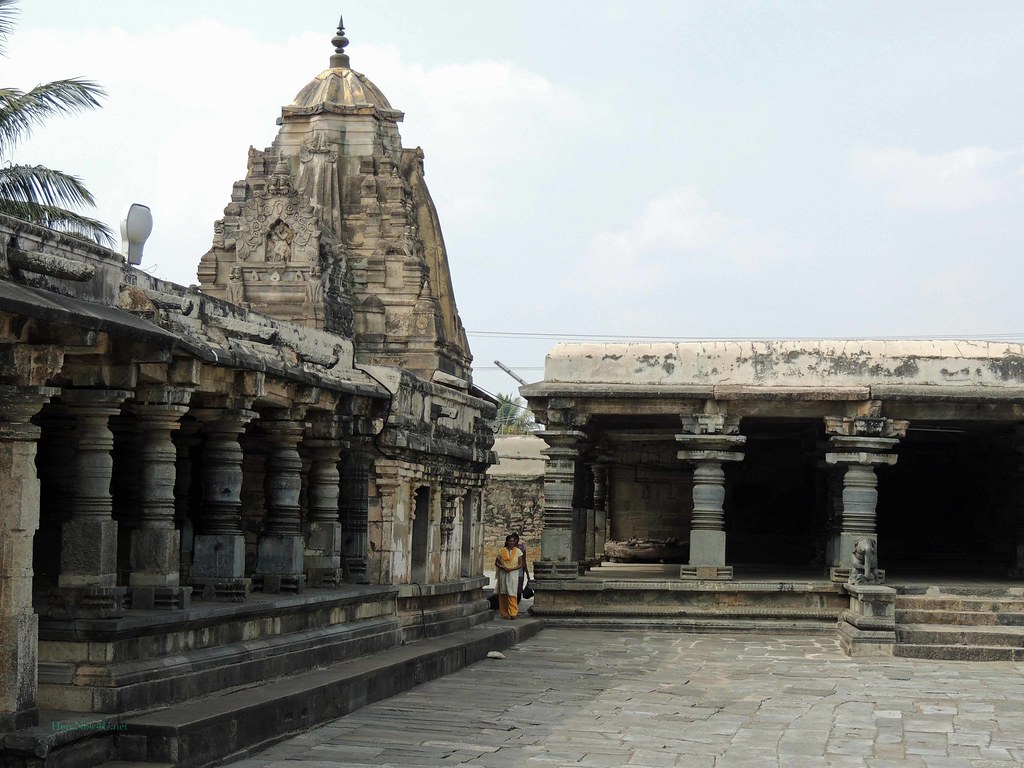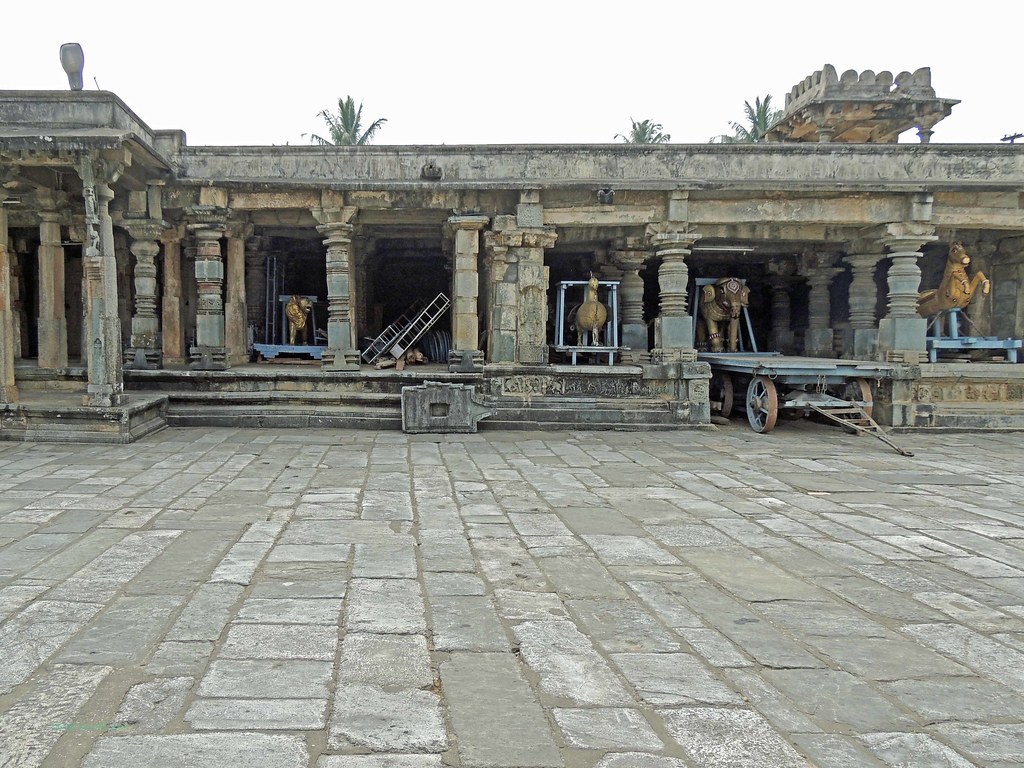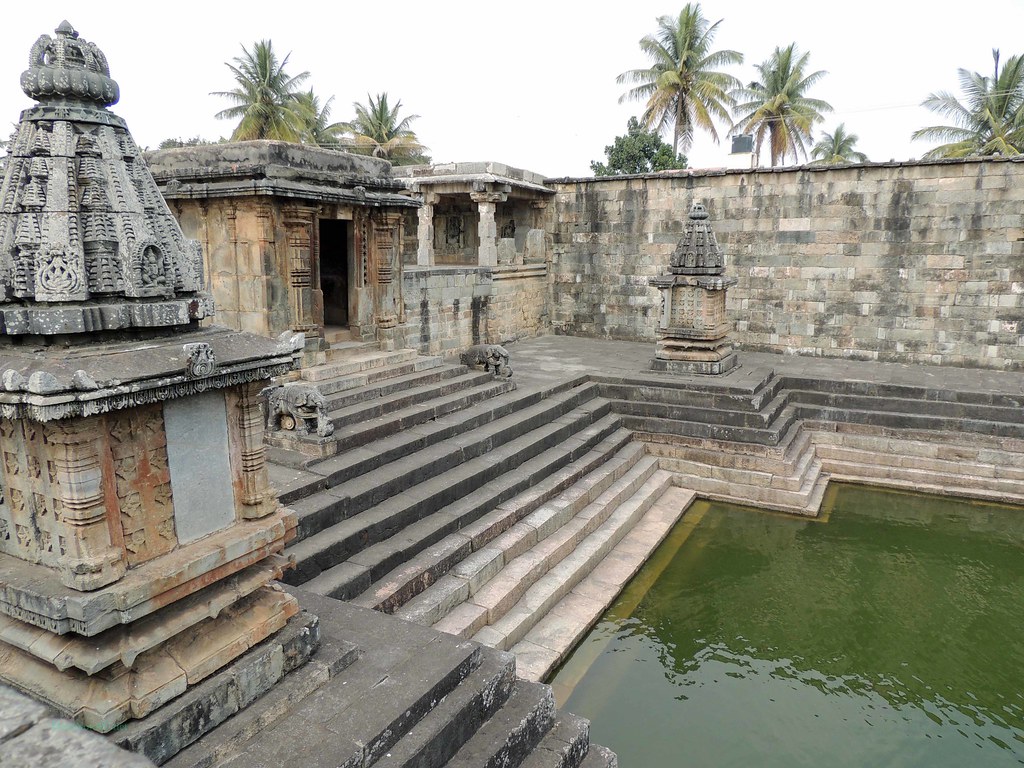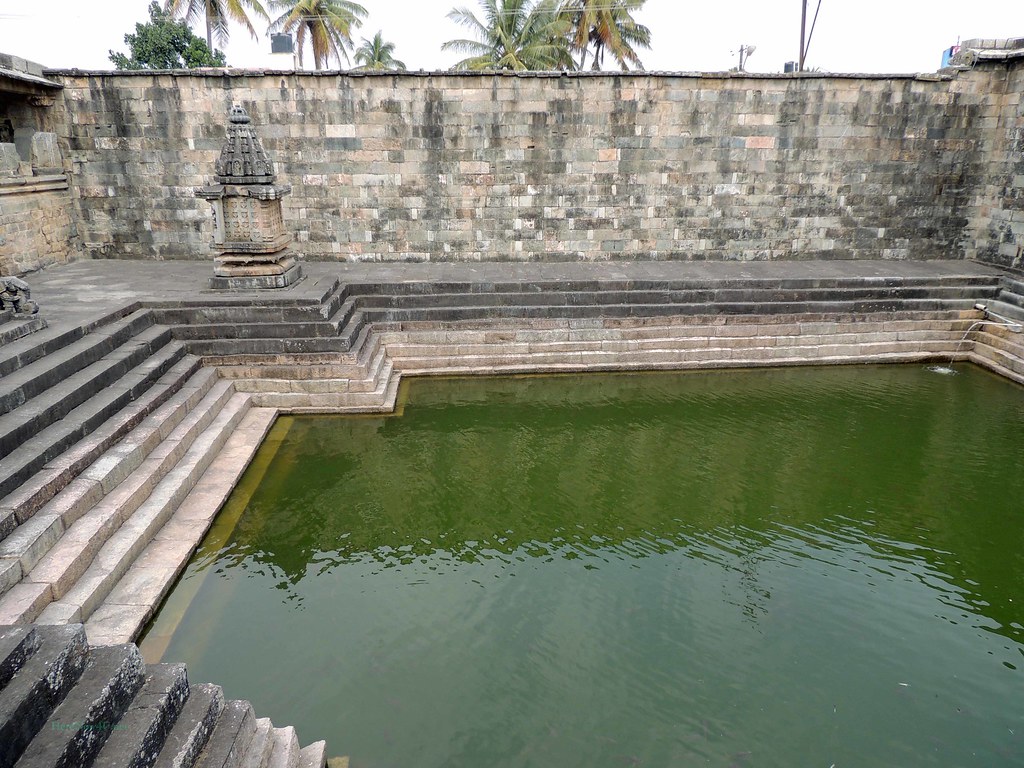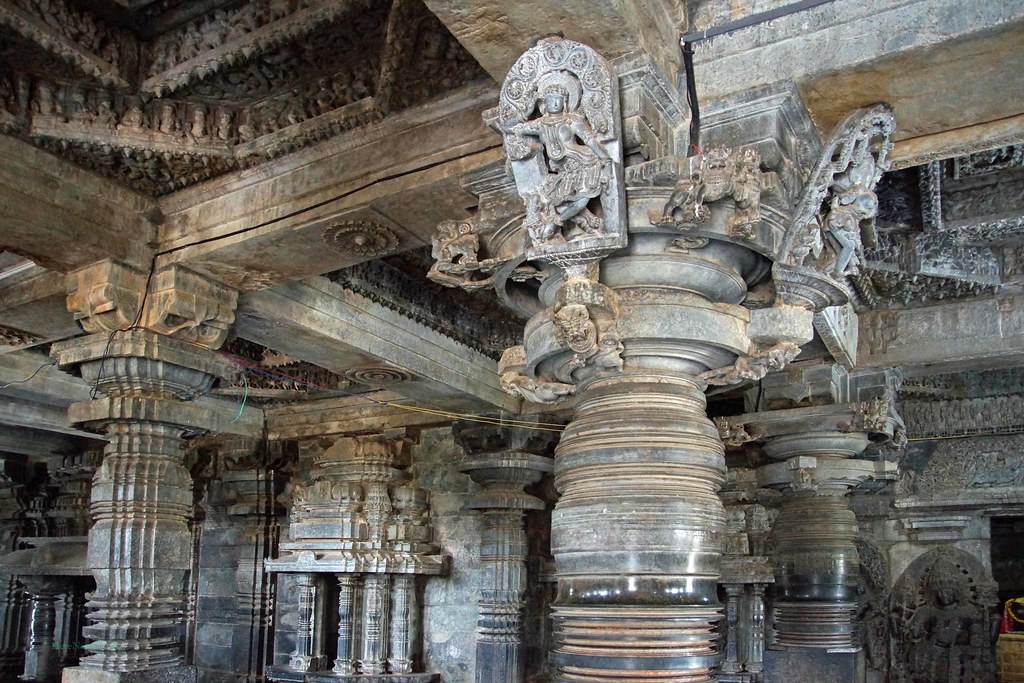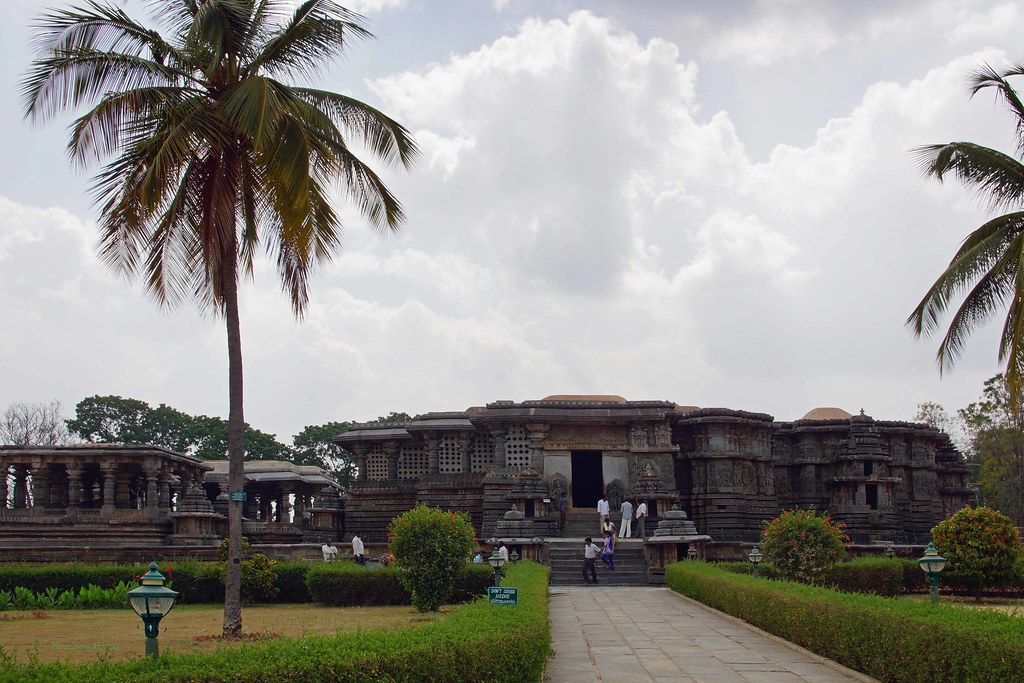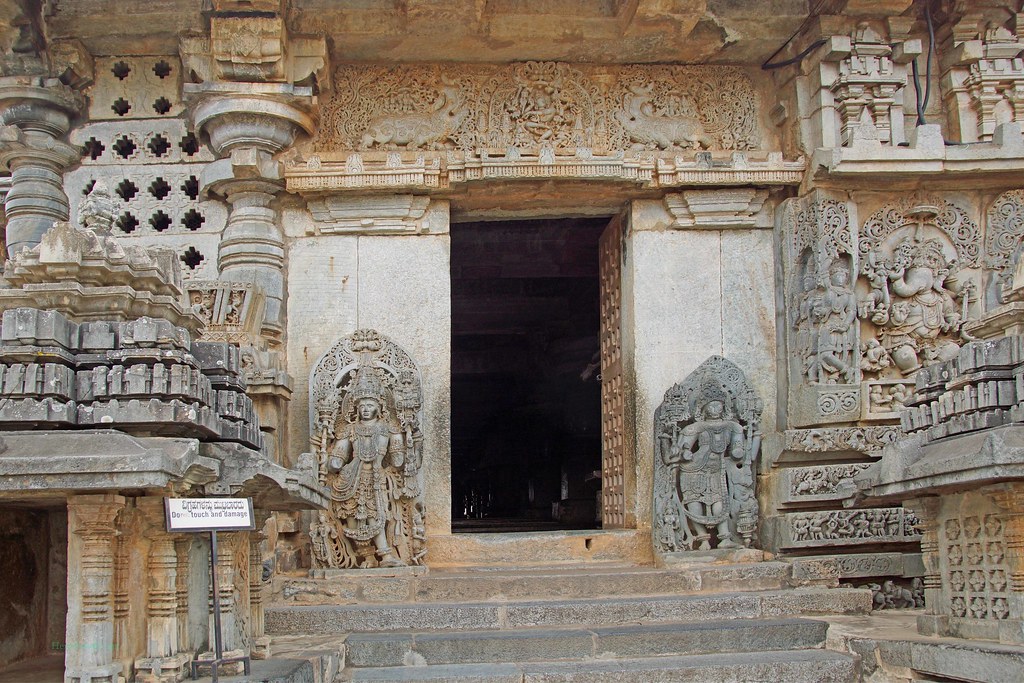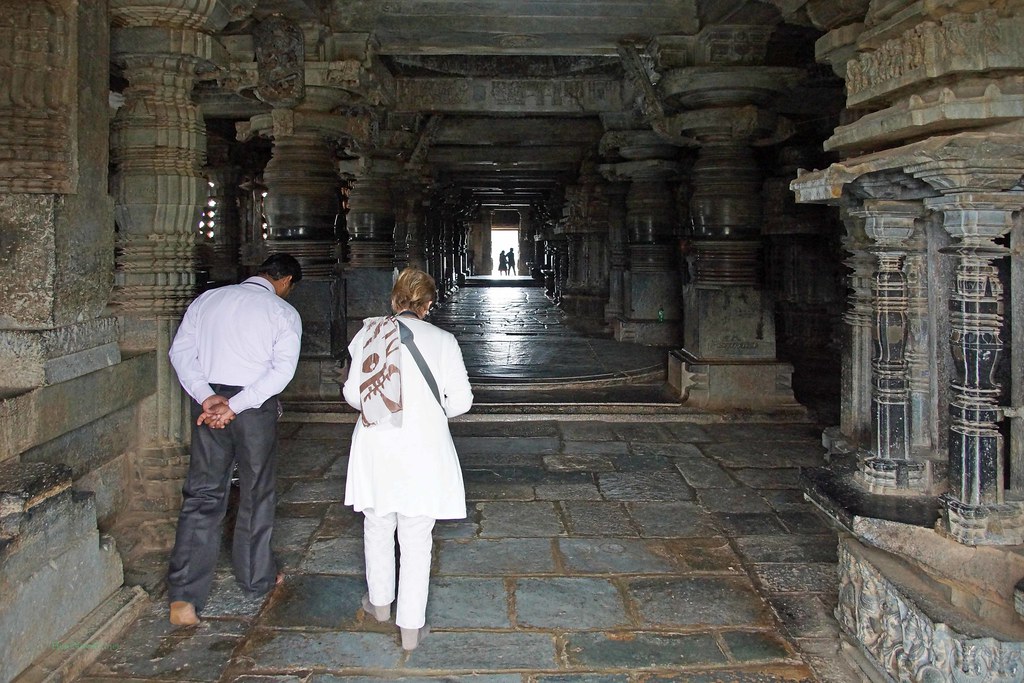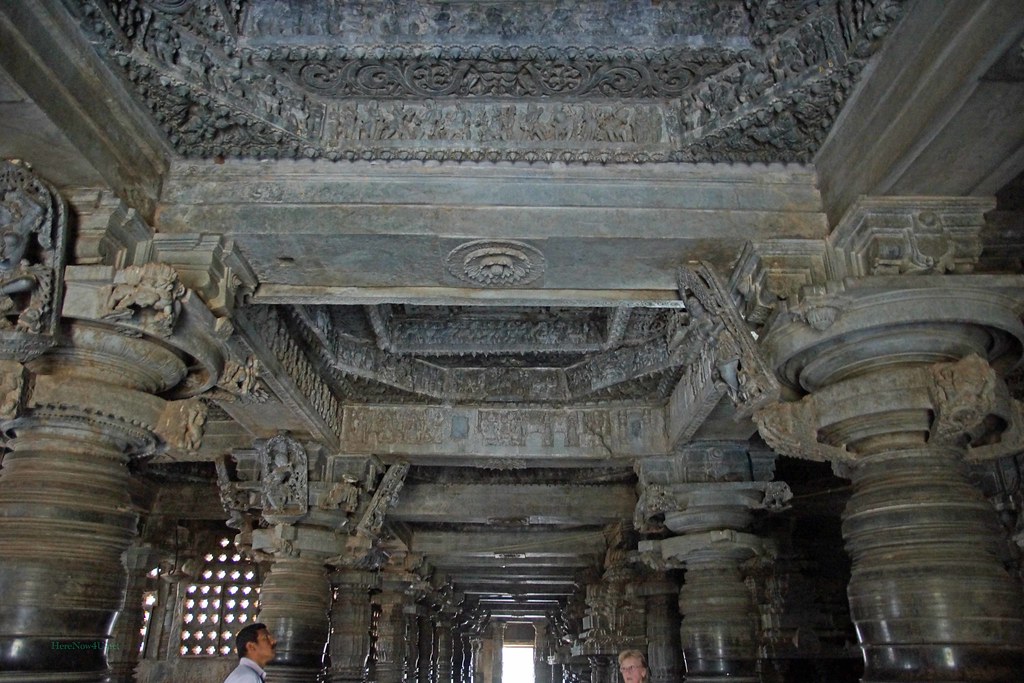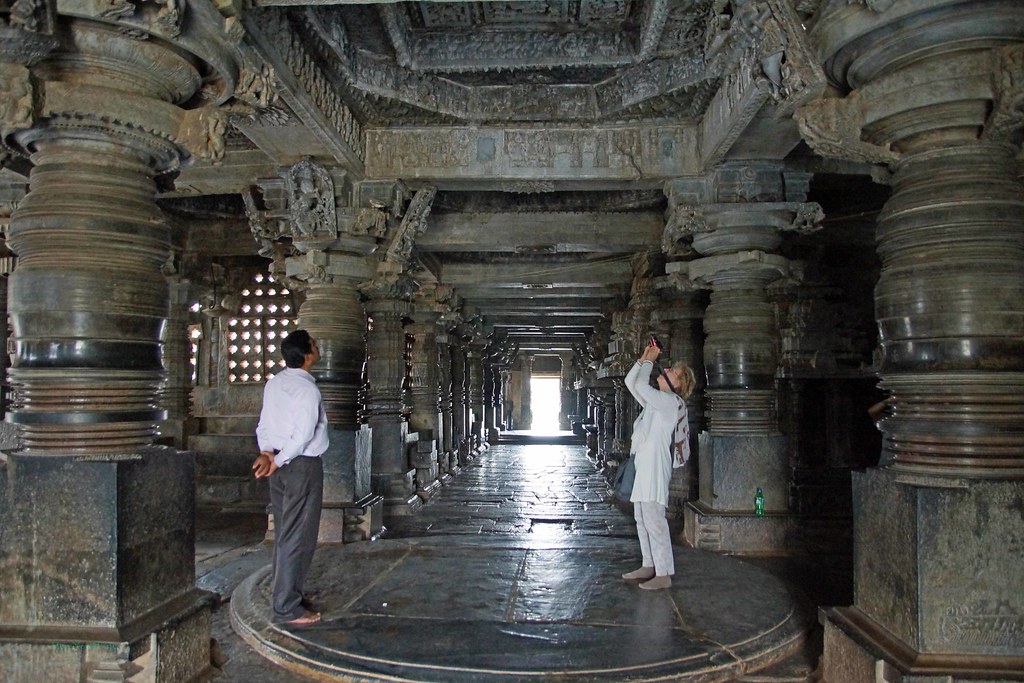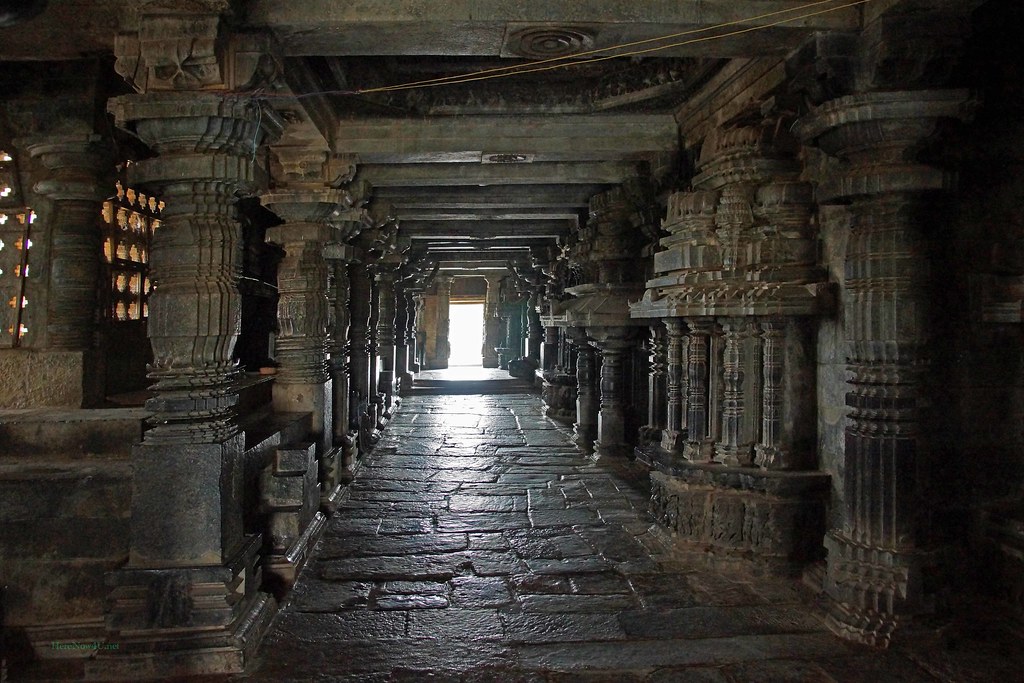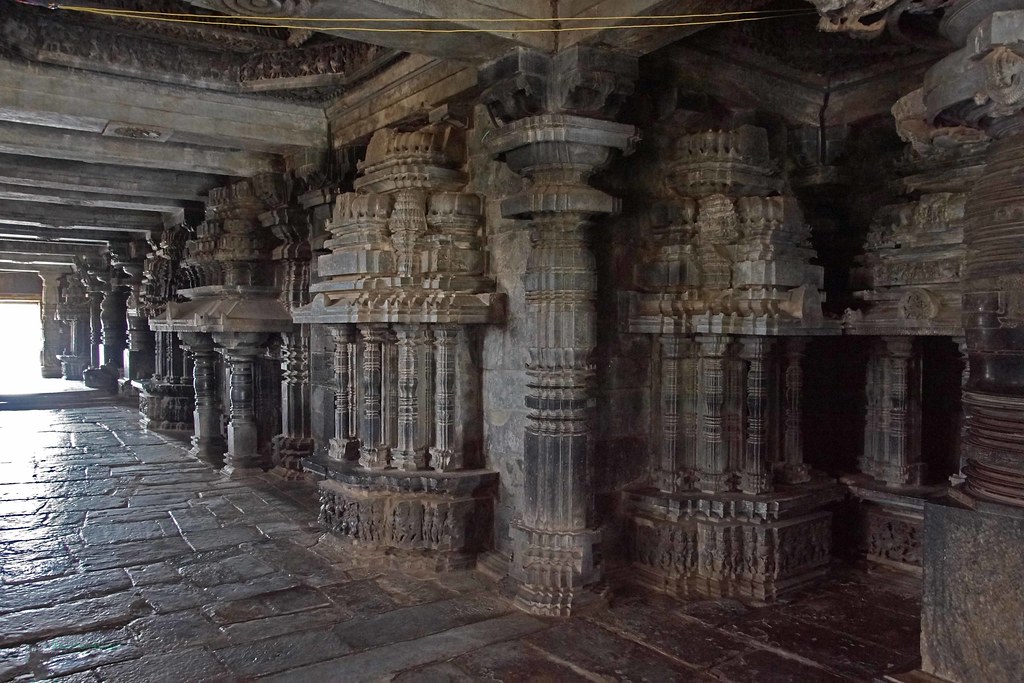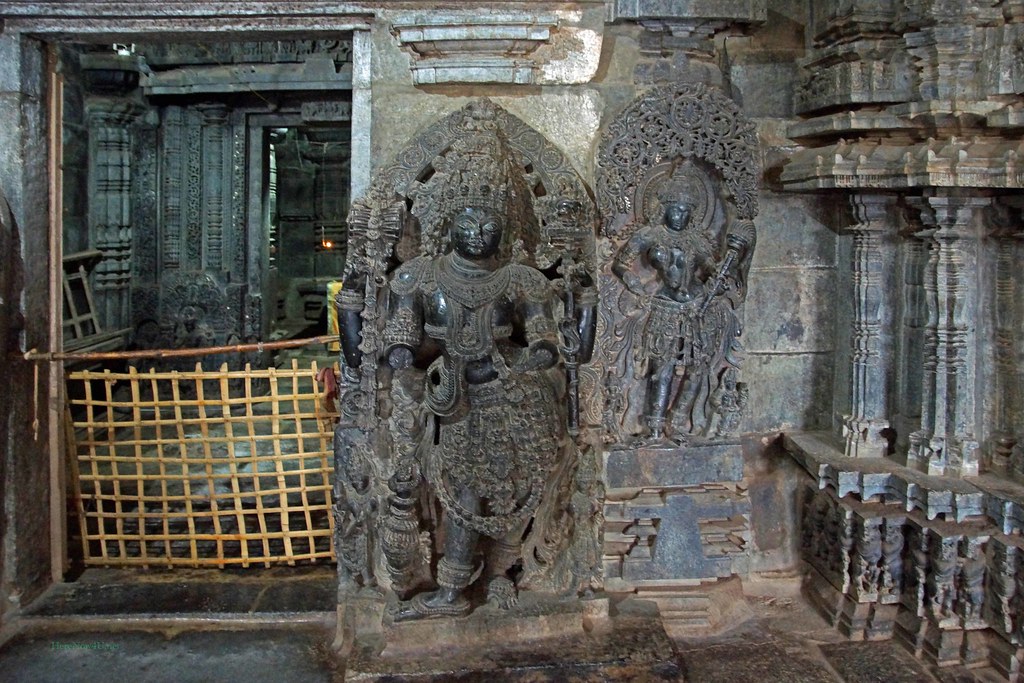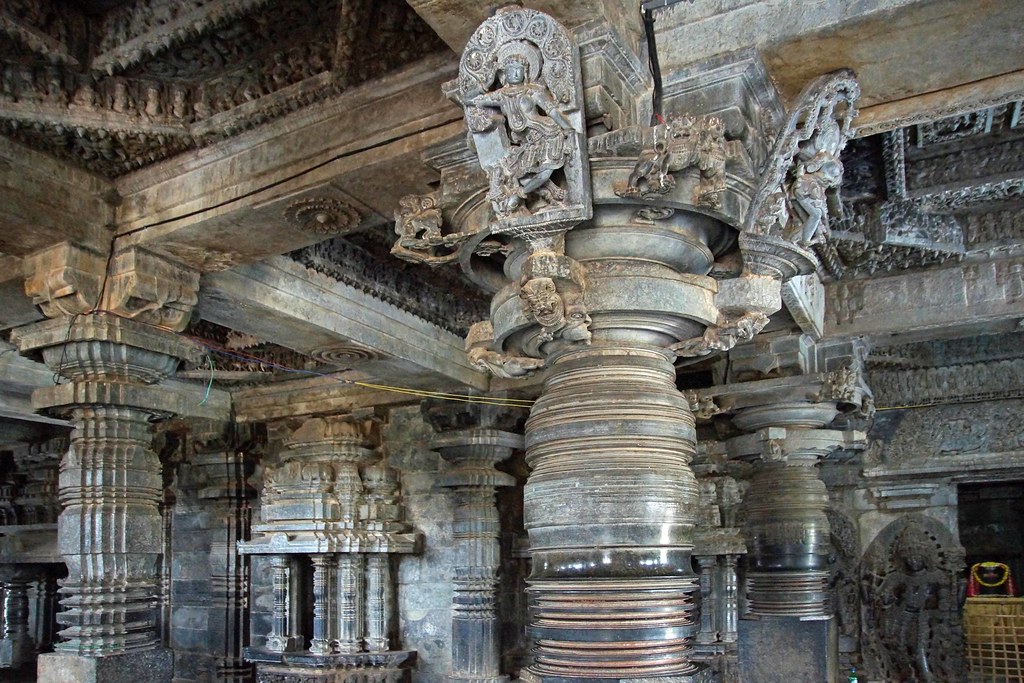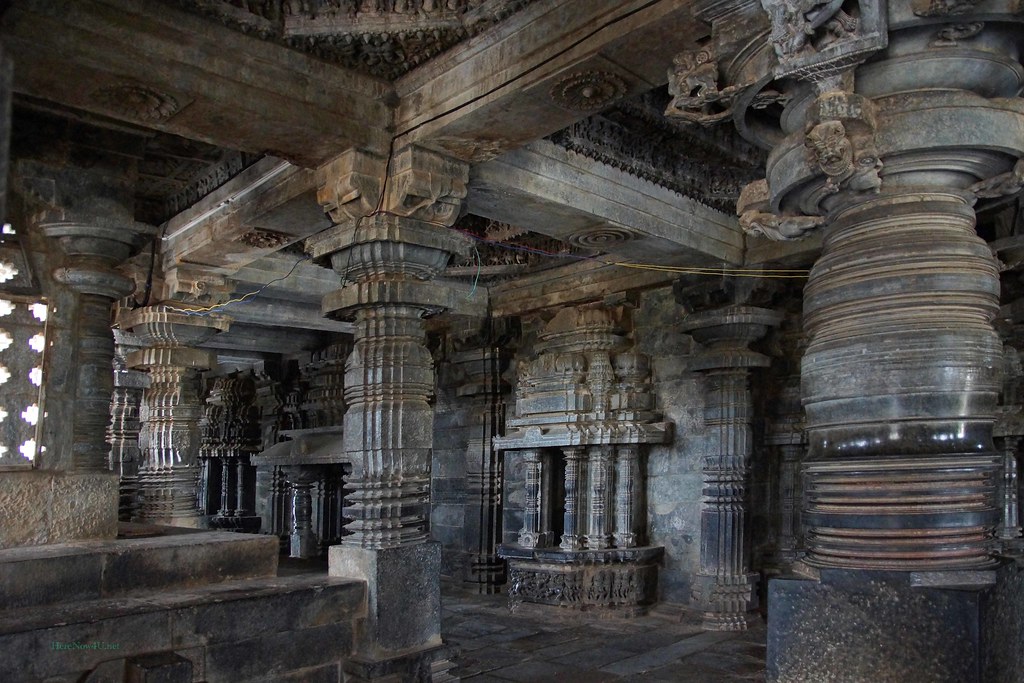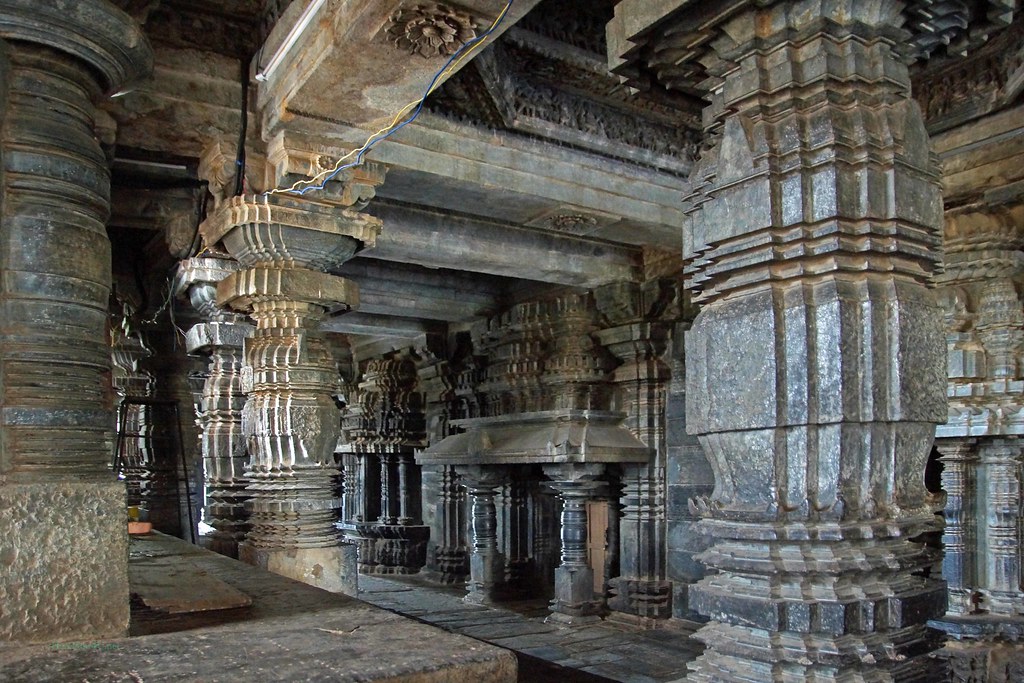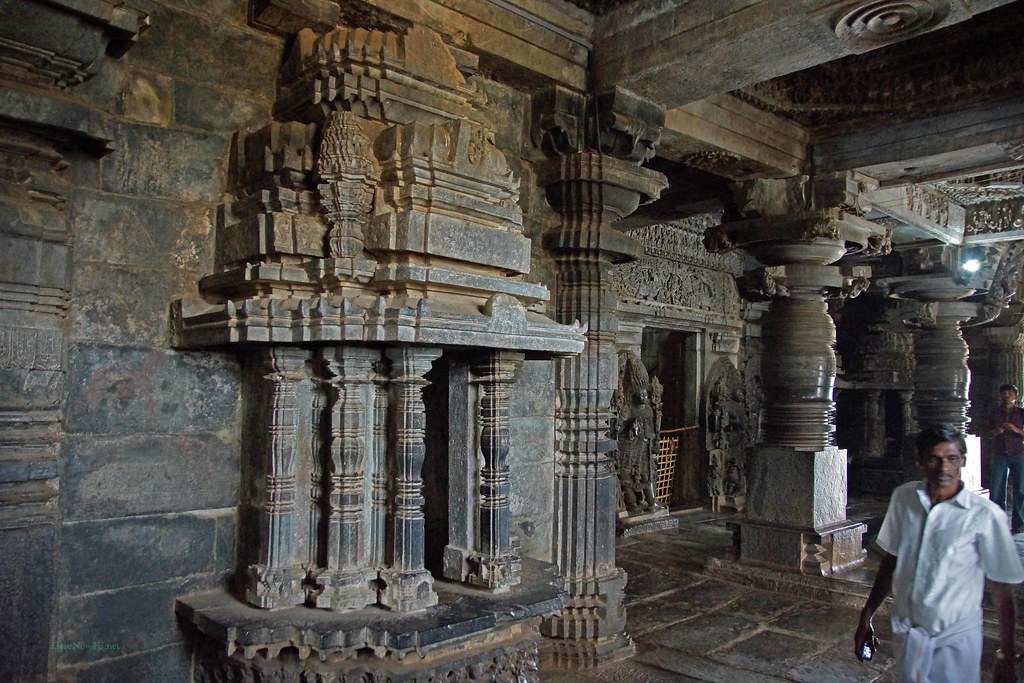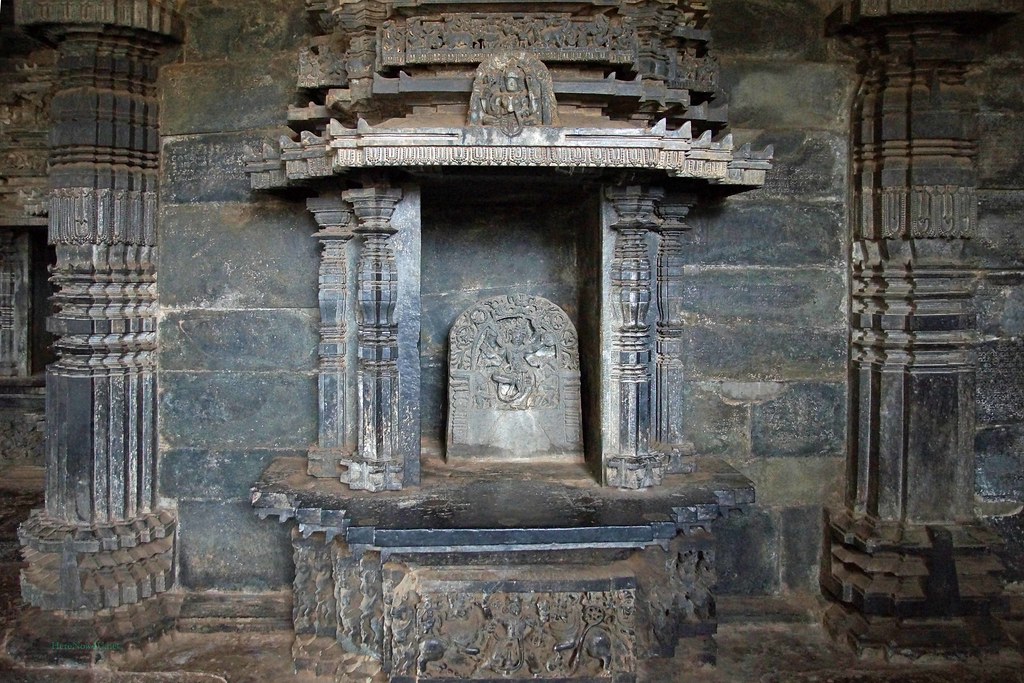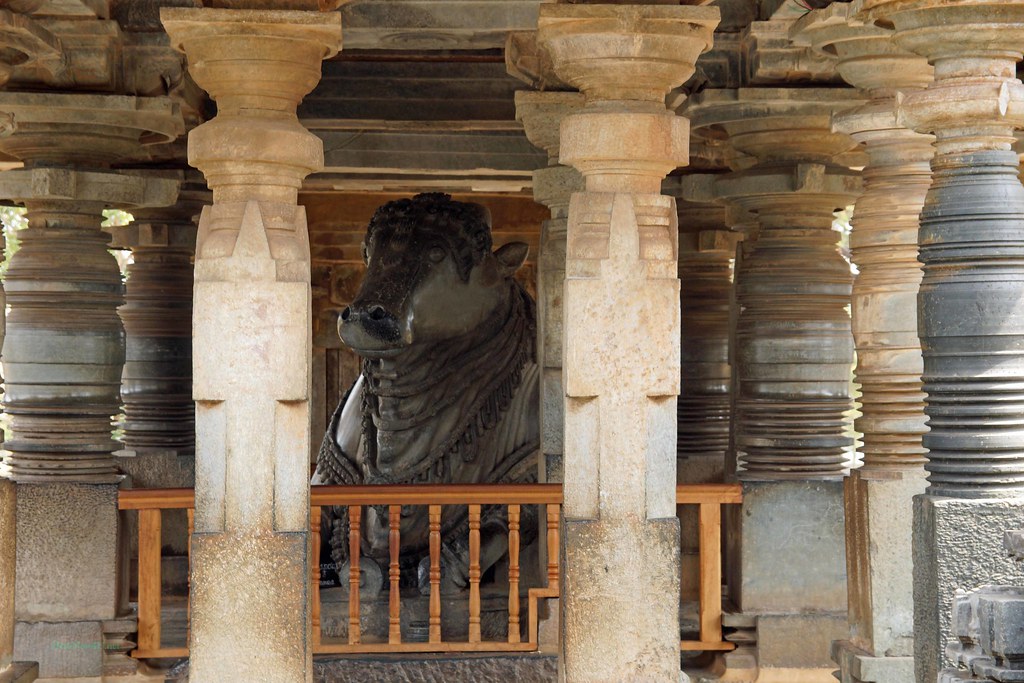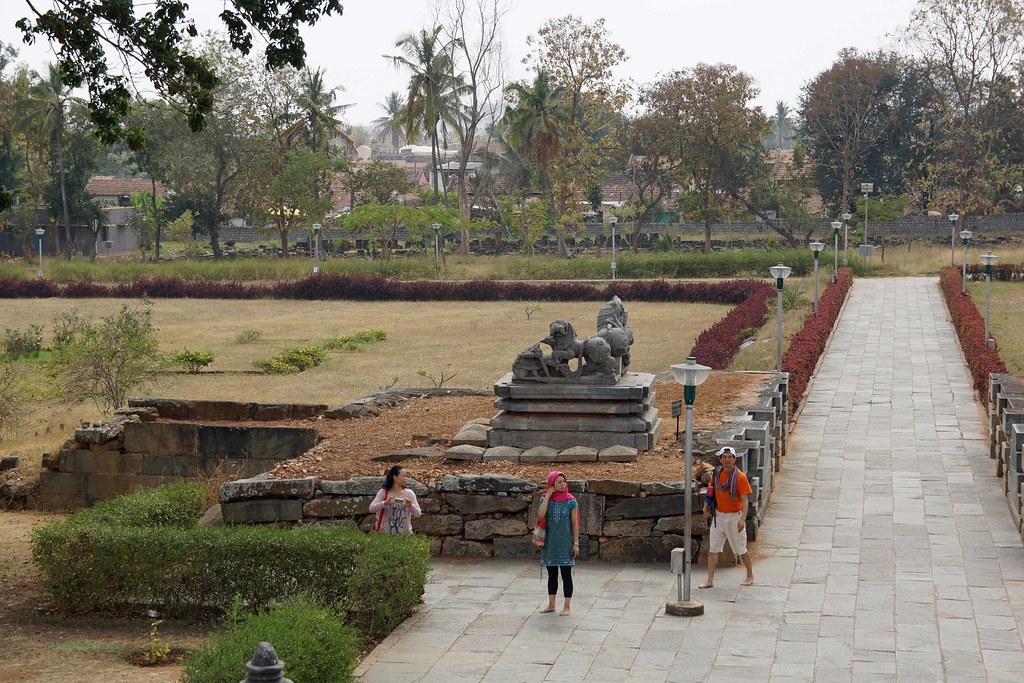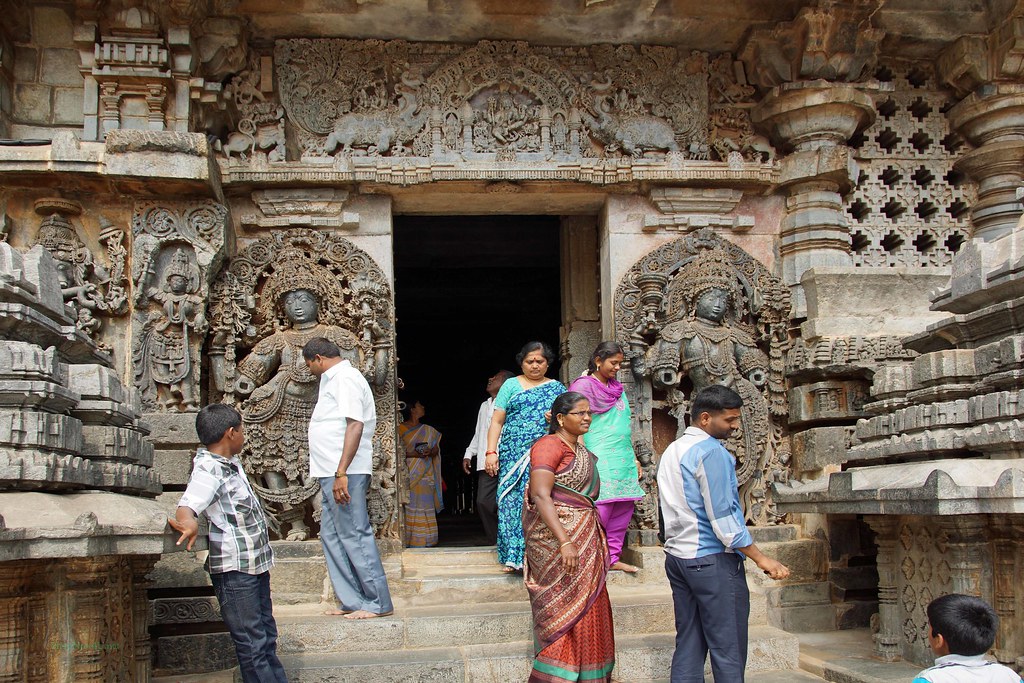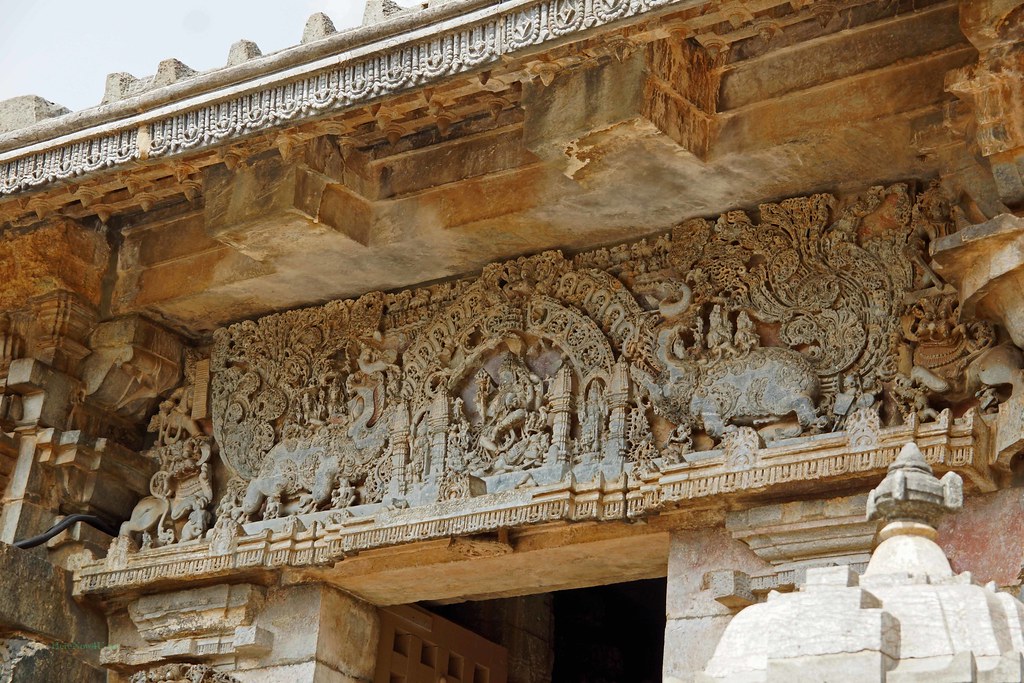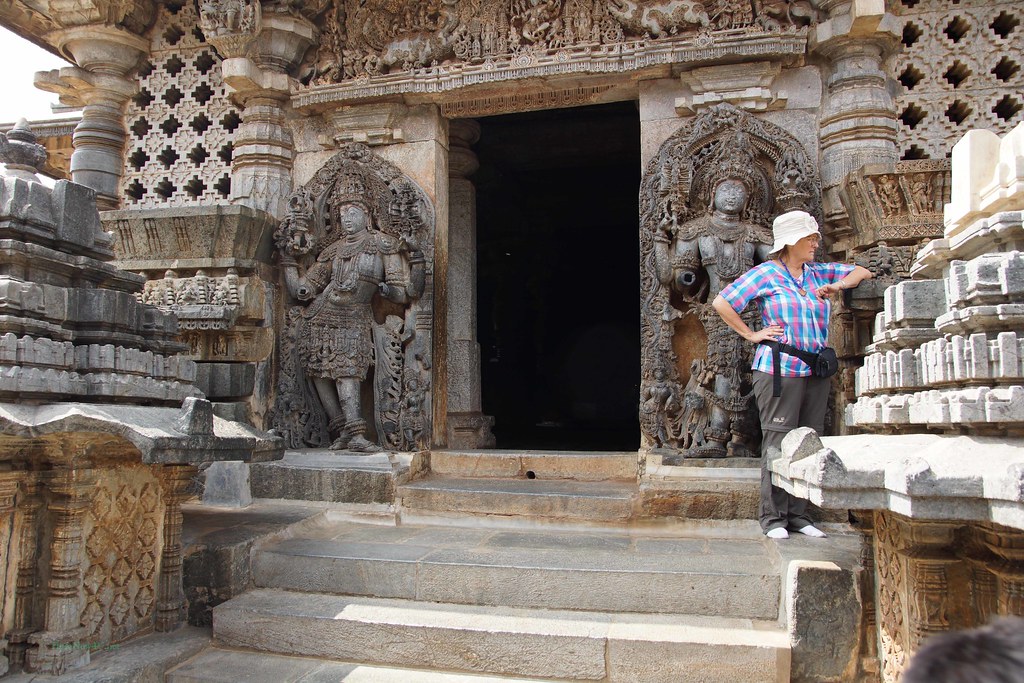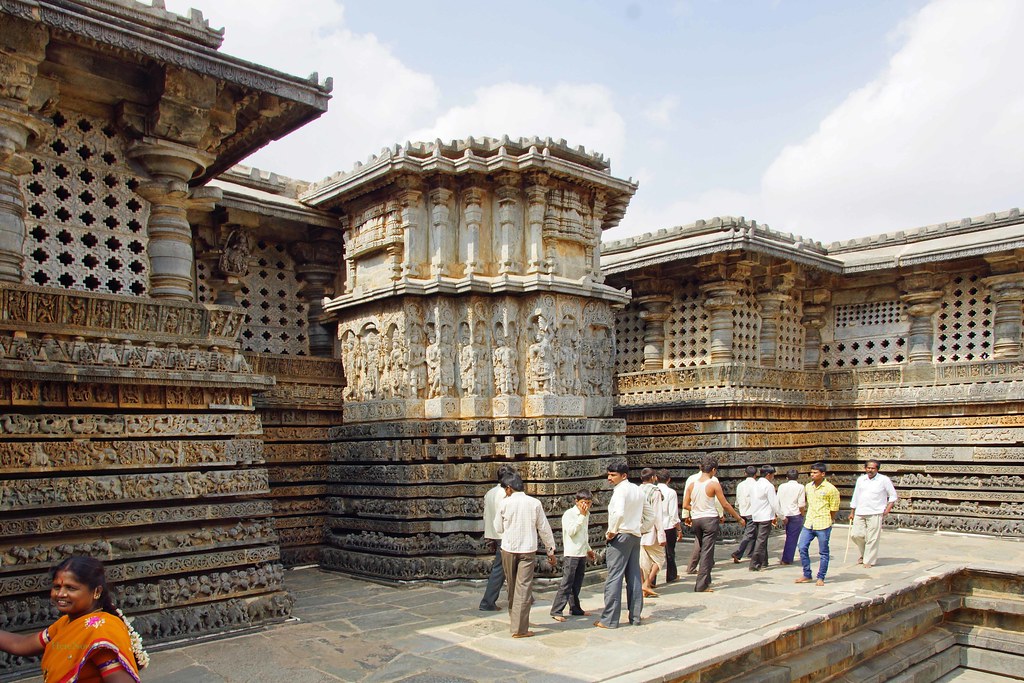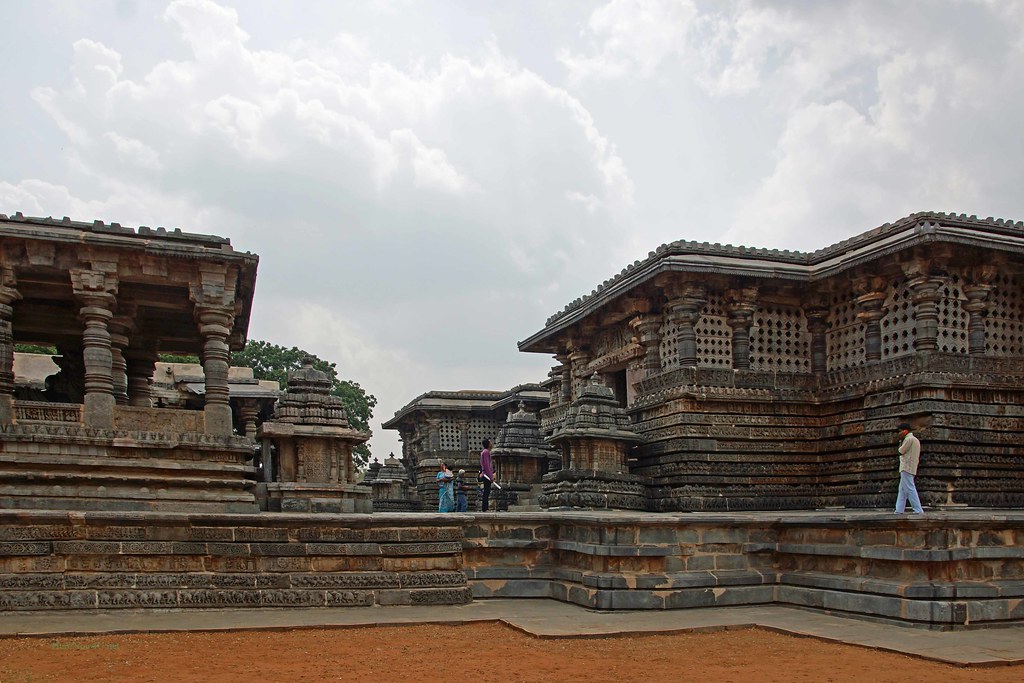This morning we had to take farewell from Shravanabelagola. Our Bangalore friends already had departed for their destination last eve. It was planned that our little round trip ended in Karnataka Jain Bhavan Bangalore, from where we wanted to fly to Kerala after having collected our gifts. Shortly after breakfast a driver with car would come and take us to the next destination.
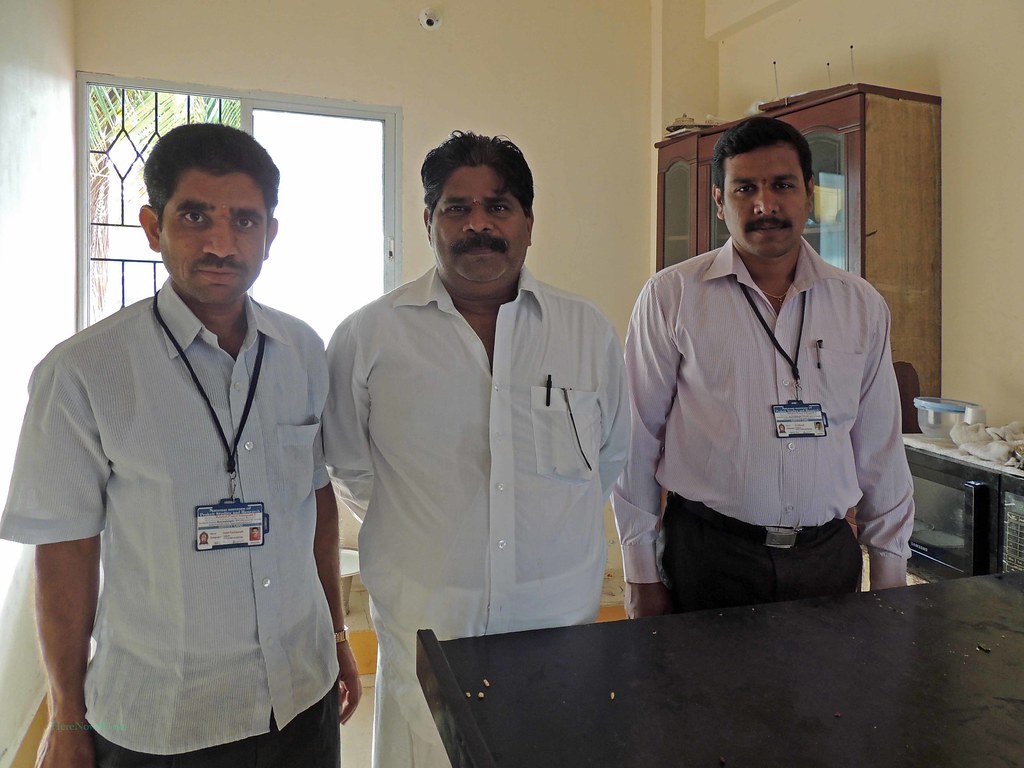
Master of kitchen Shantiraj (m), NIPSAR lecturers Parshvanath (l) and Murali (r)
Master of kitchen Shantiraj (king of peace, as he smilingly explained the meaning of his name) had taken care for all meals in Shravanabelagola. The physical wellbeing of the guests belonged to his duties consisting since more than 20 years in purchasing the ingredients for and planning of meals as well as controlling its preparation. He was lucky, he said, to work at one of the best places in the world. Nice weather every day, pure ingredients, no corruption, with one of the real wise men of this planet as his boss. His children, son and daughter, are both doing their studies at Bangalore University. He is residing with his family not far from his working place in a beautiful house, the roof therefrom he showed to us from the window of the dining hall. His continually kind and open character had rather contributed to our wellbeing in Shravanabelagola.
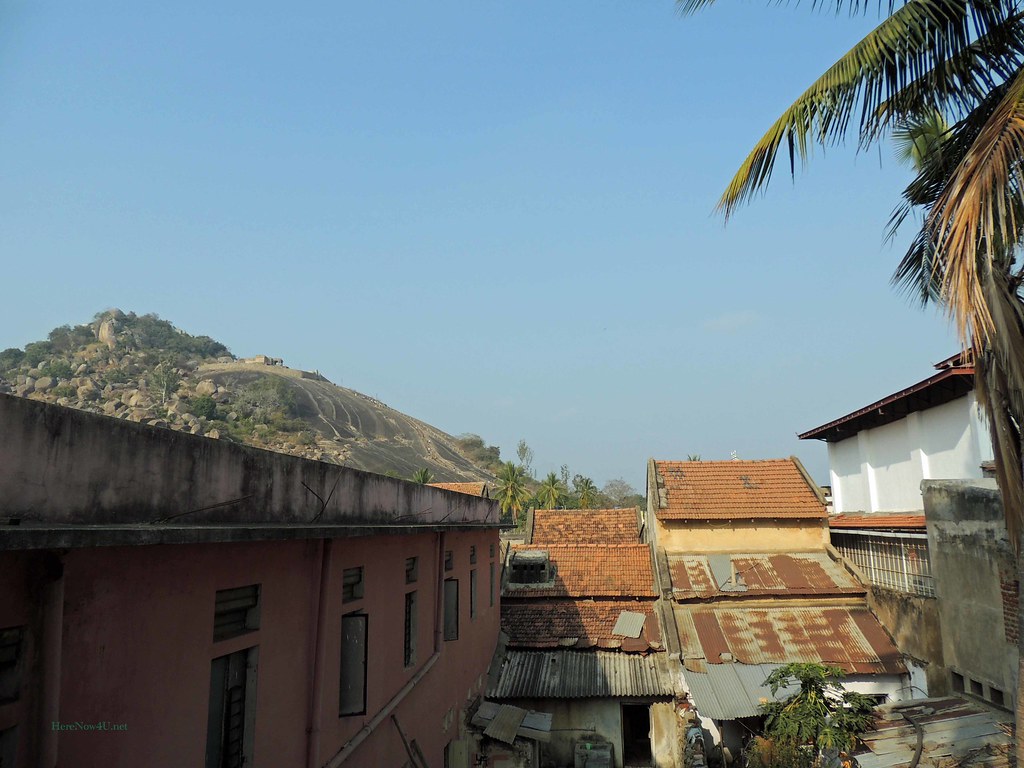
A last look on Vindhyagiri Hill, one of the roofs belongs to Master Shantiraj’s home
NIPSAR lecturer Parshvanath was sent by our hosts to say goodbye and wish a good journey to us. Immediately after our departure he started walking back to NIPSAR. Smilingly, but determined he rejected the offer to be taken there by car. His colleague Murali accompanied us up to Mysore and returned with the driver to Shravanabelagola the same eve.
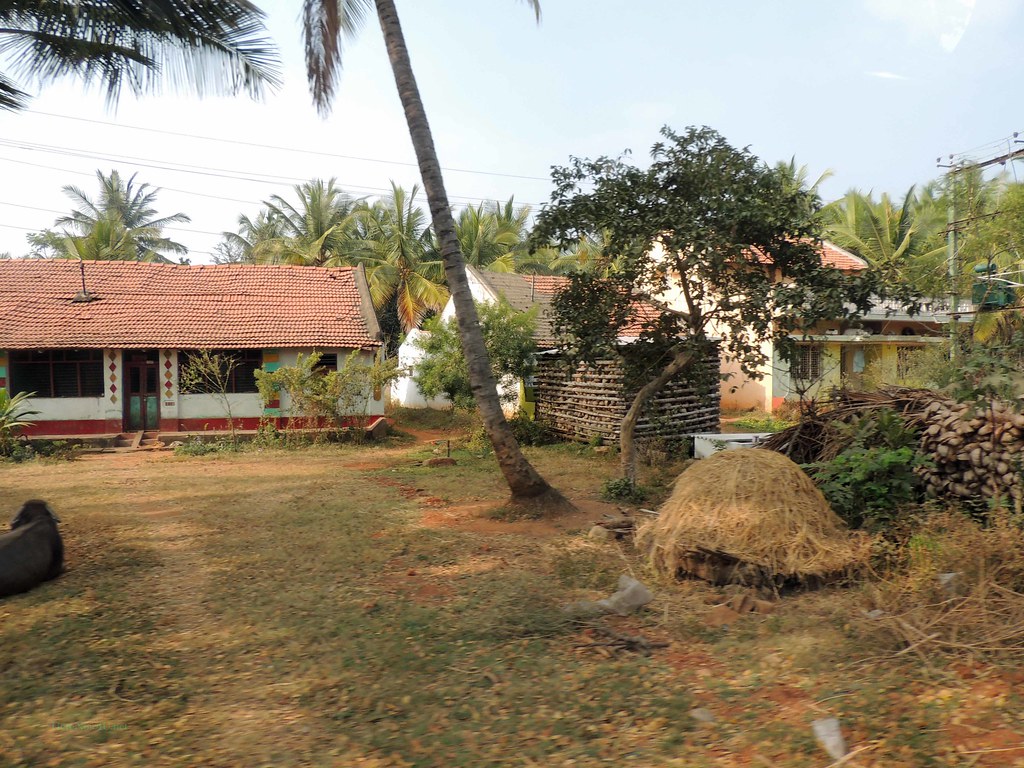
Typical farmstead in Karnataka
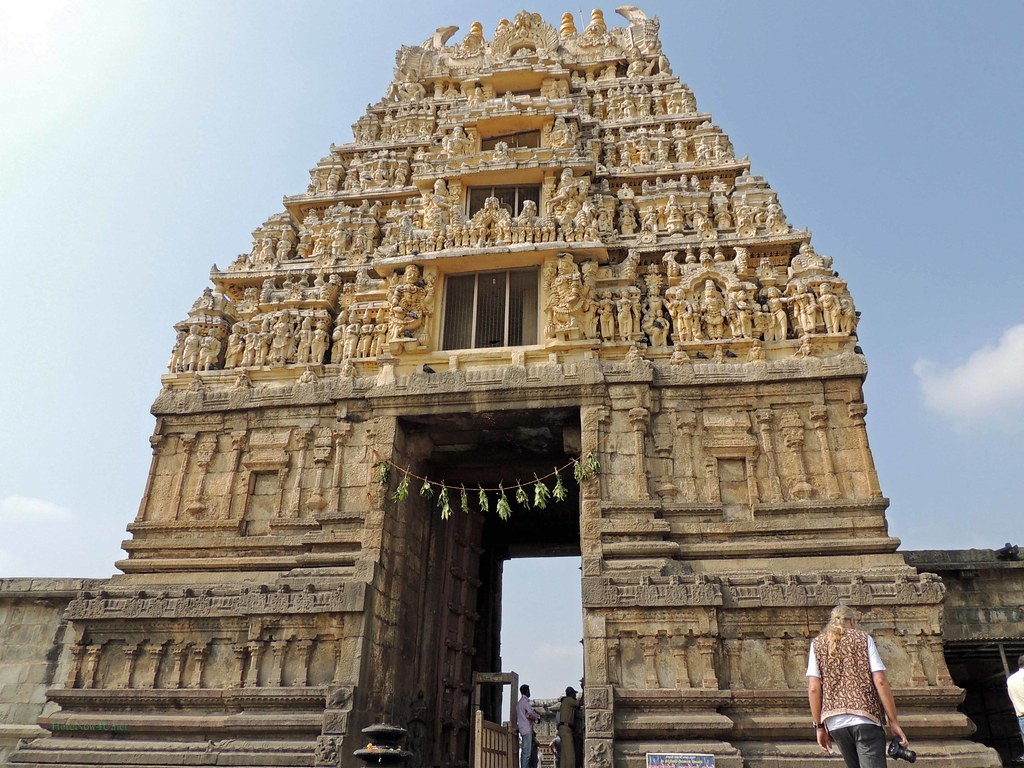
Roadside view of the entry tower (Gopura) at Chennakesava Temple in Belur
After 88km and two hours of drive we reached Belur. Chennakesava Temple Belur is one of the 7 wonders of India. The small 20,000 inhabitants town is together with Halebidu one of the main tourist attractions in Karnataka. From 12th to 14th century CE it belonged to the Hoysala Empire, the sphere controlled by the then ruling Hoysala dynasty in South Karnataka, where poetry and a temple architecture characterized by very sophisticated stone carvings blossomed. Due to some sources the conversion of the ruling dynasty from Jainism to Hinduism is the reason for the erection of one of the most impressing Hindu temple complexes in southern India. In 1117 CE the temple was commissioned, completed after 103 years of construction and dedicated to Vishnu in his form as Chennakesava (the one with the beautiful curls). Until present, it is still in use for religious ceremonies, and we were lucky to witness one.
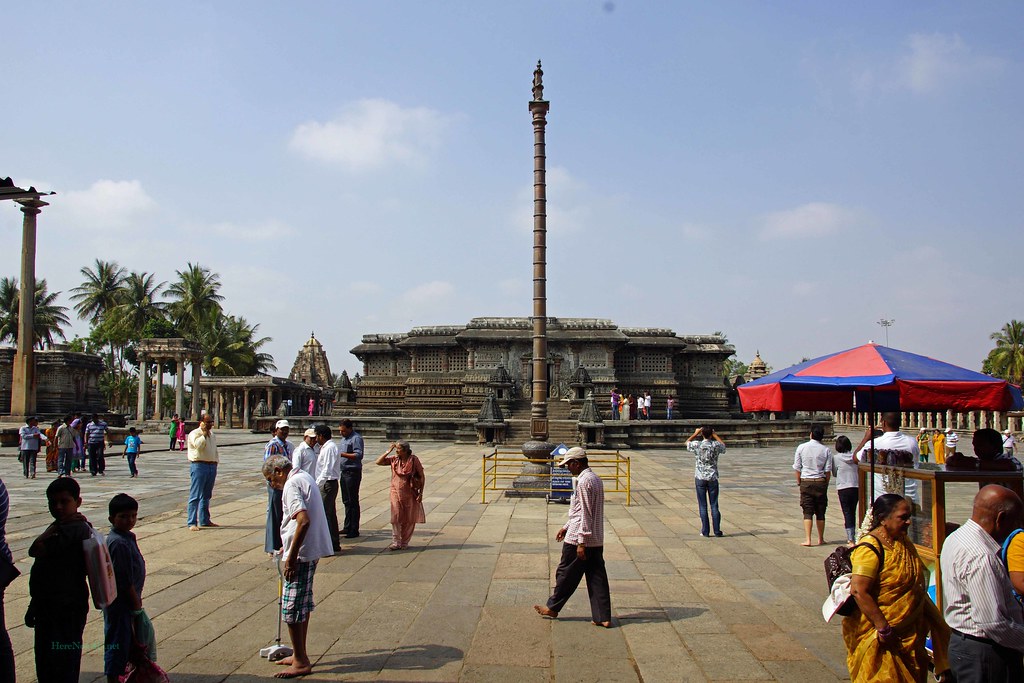
View on the temple and the broad square with Dhwaja Stamba (column) in front of it

The complex on the temple’s left

The entry tower (Gopura) seen from the temple
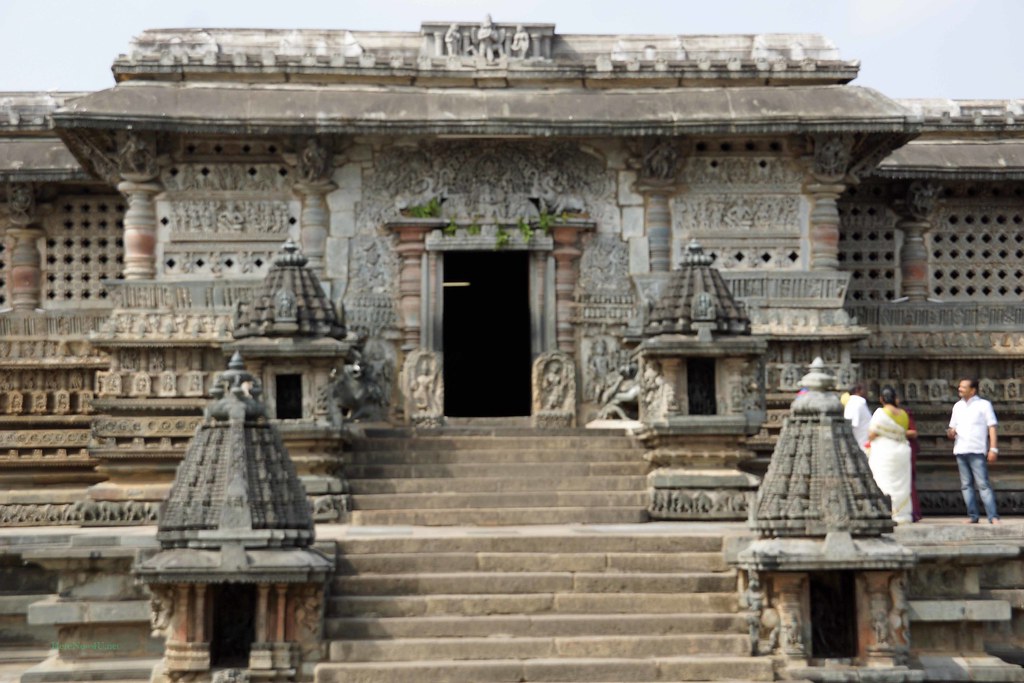
Temple entry

Hoysala emblem at the entry of the temple
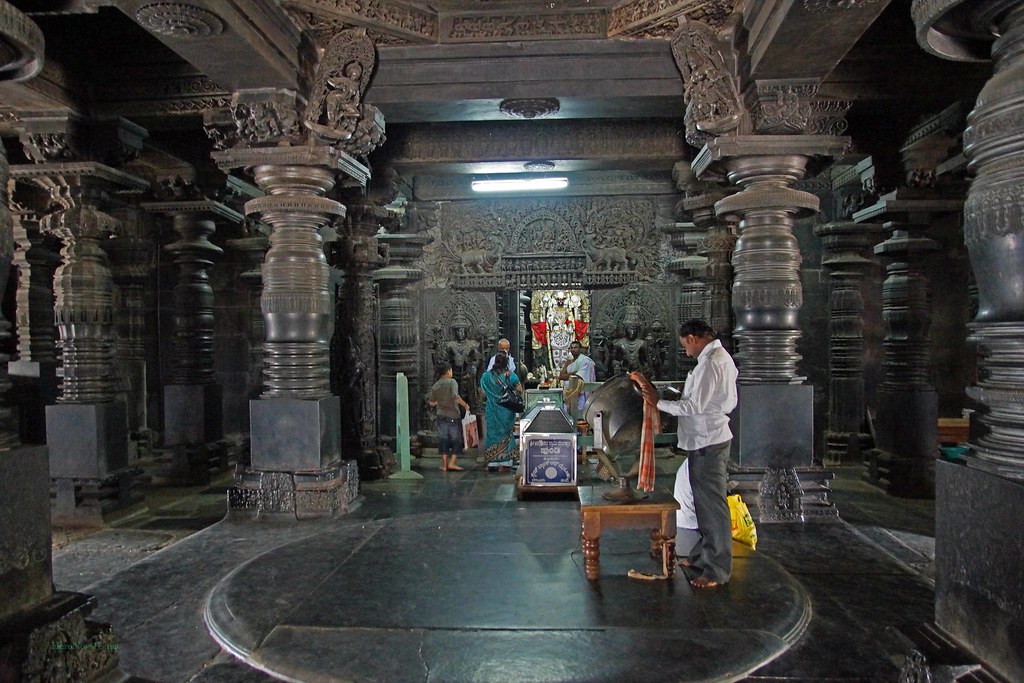
Glance inside the temple
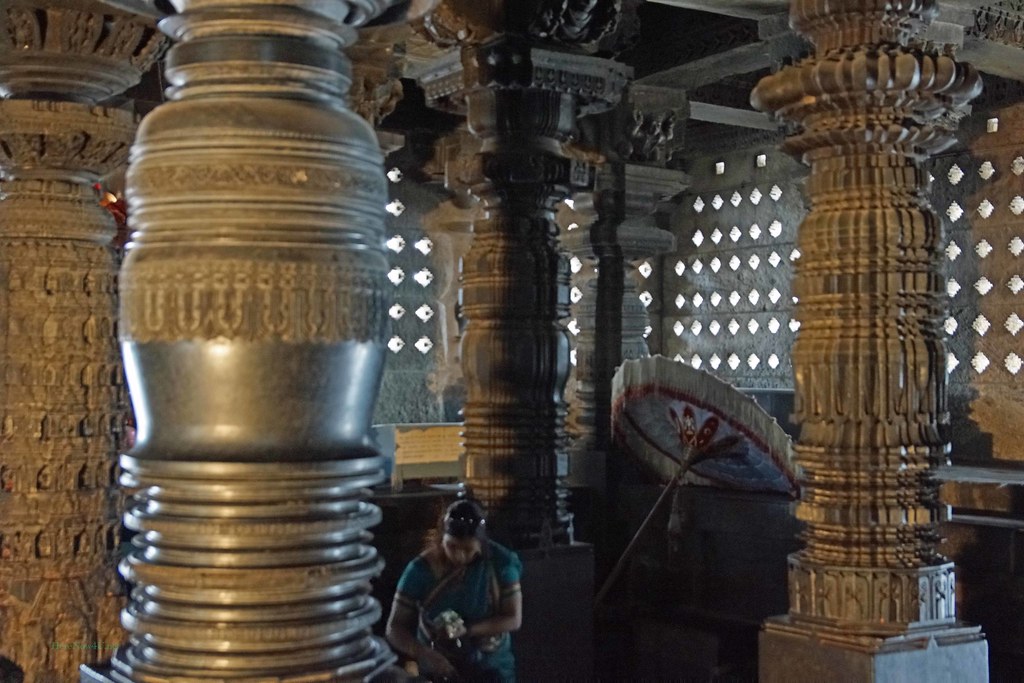
Artfully shaped columns
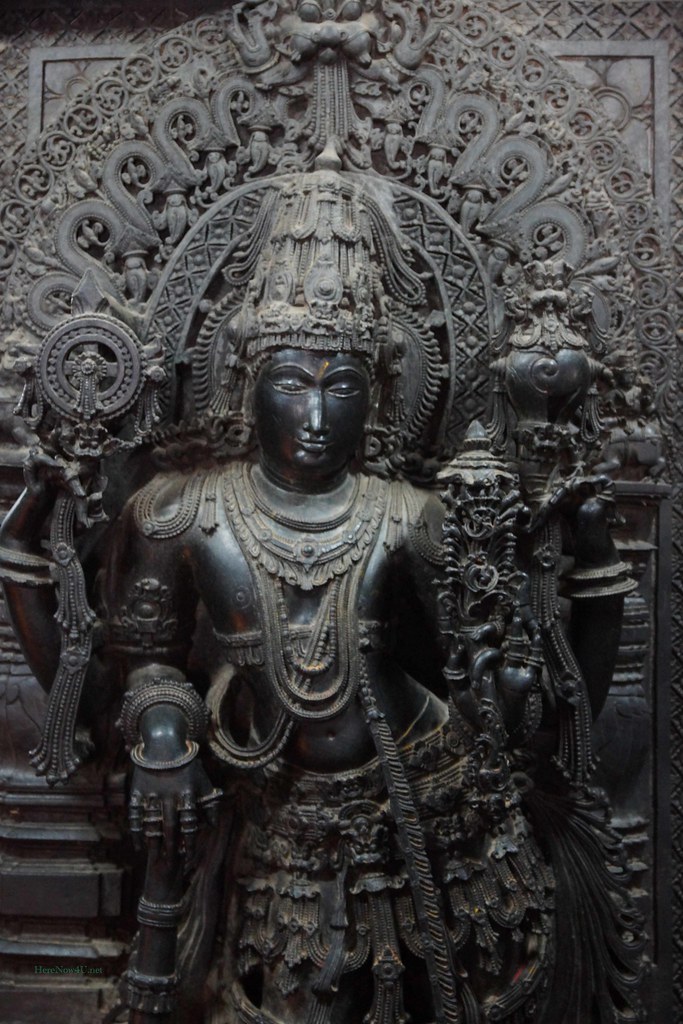
Doorkeeper in front of Sanctum
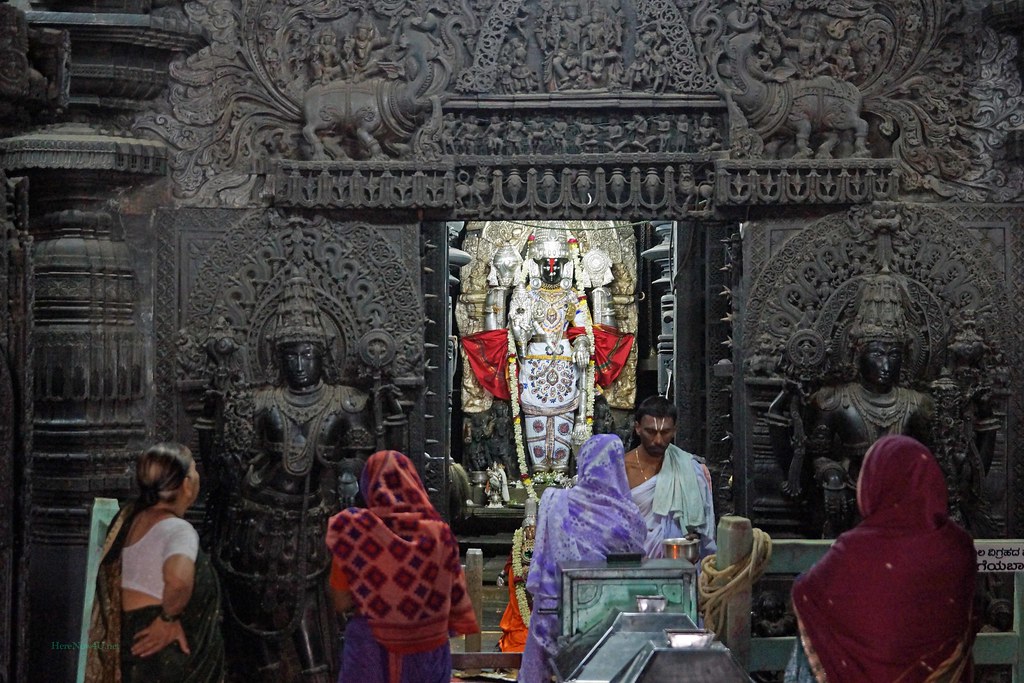
Religious ceremony in God Vishnu’s shrine
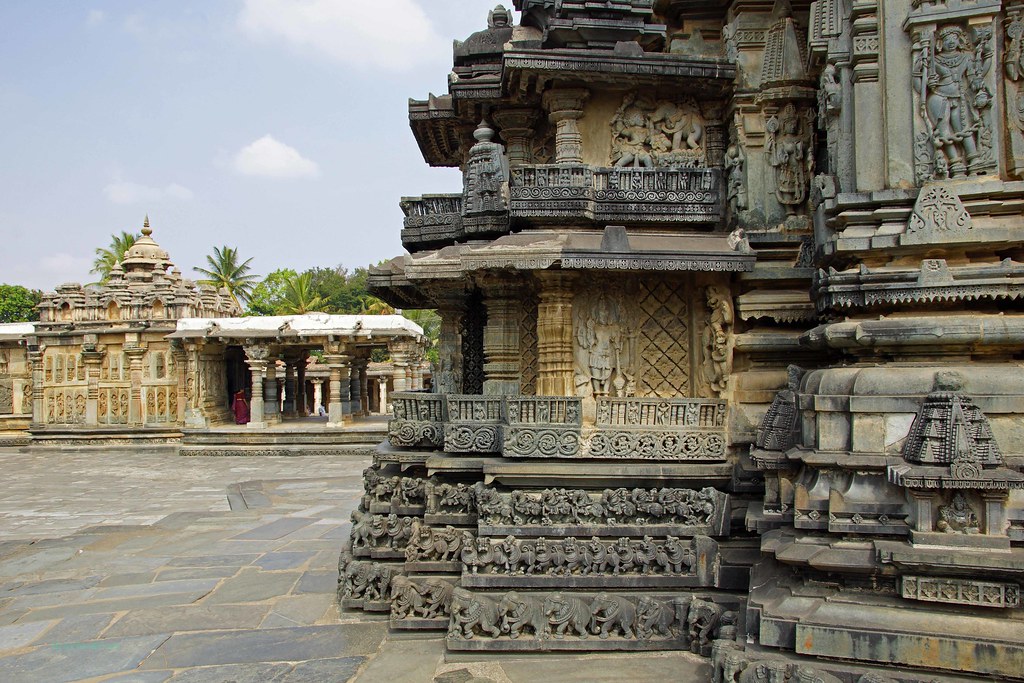
Characteristic fine reliefs on the outer frontage of the temple
One easily could have passed more time in Belur deepening into details of Hoysala architecture, but our time there was limited. Furthermore all of us were hungry, and lunch was a welcomed occasion for break. The driver was familiar with the regional features and recommended a restaurant off the beaten track really worth the detour. Strengthened and ready for perception we drove about 20 km to Halebidu where a further famous artwork of Hoysala architecture dedicated to Shiva awaited us. Halebidu (approximately: ancient abode) in 12th century CE has been the Hoysala empire’s capital named Dorasamuda. Hoysaleshwara Temple named in 1121 CE after its founder Vishnuvardhana Hoysala and his queen Shantala is known for its variety of artful Hindu mythology details. It is said that all sculptures there are unique. But we missed the opportunity to verify.
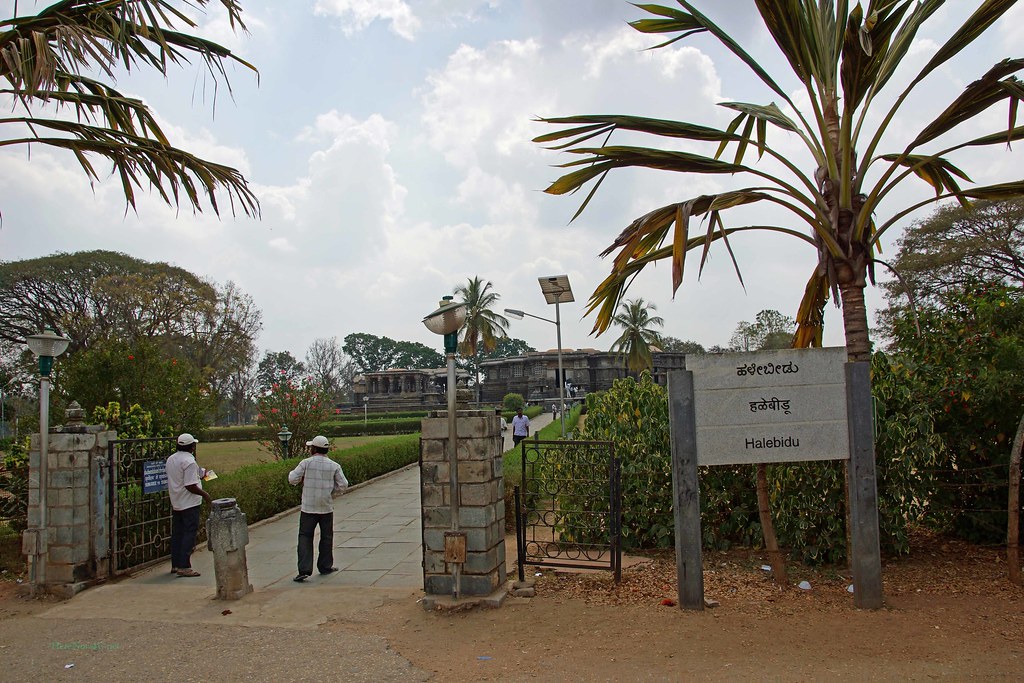
Entry of the temple complex
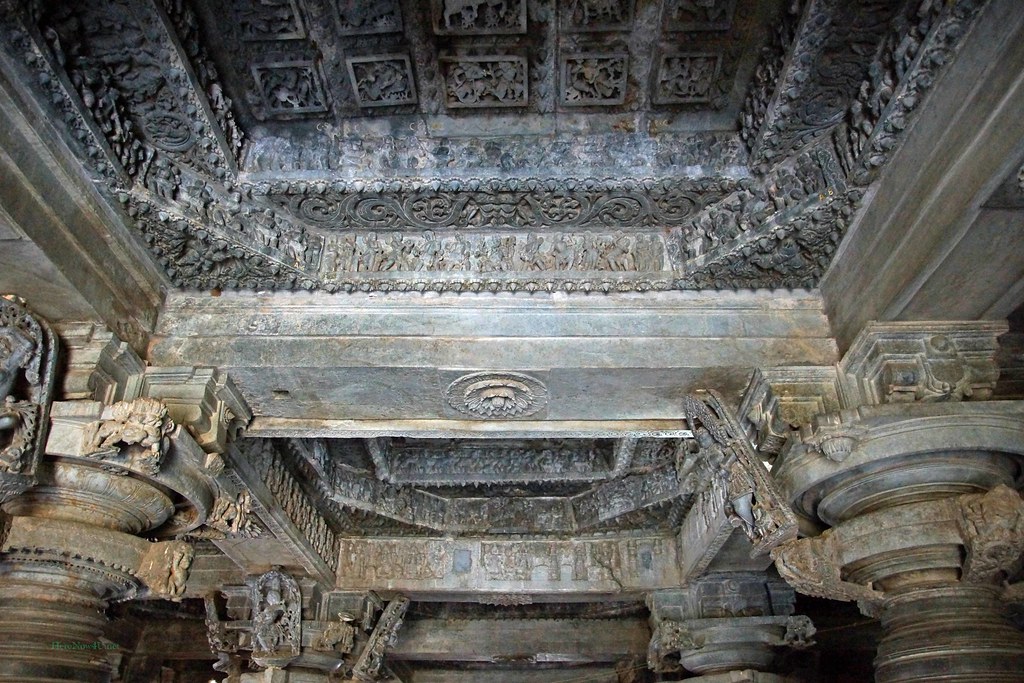
Ceiling designed rich in detail
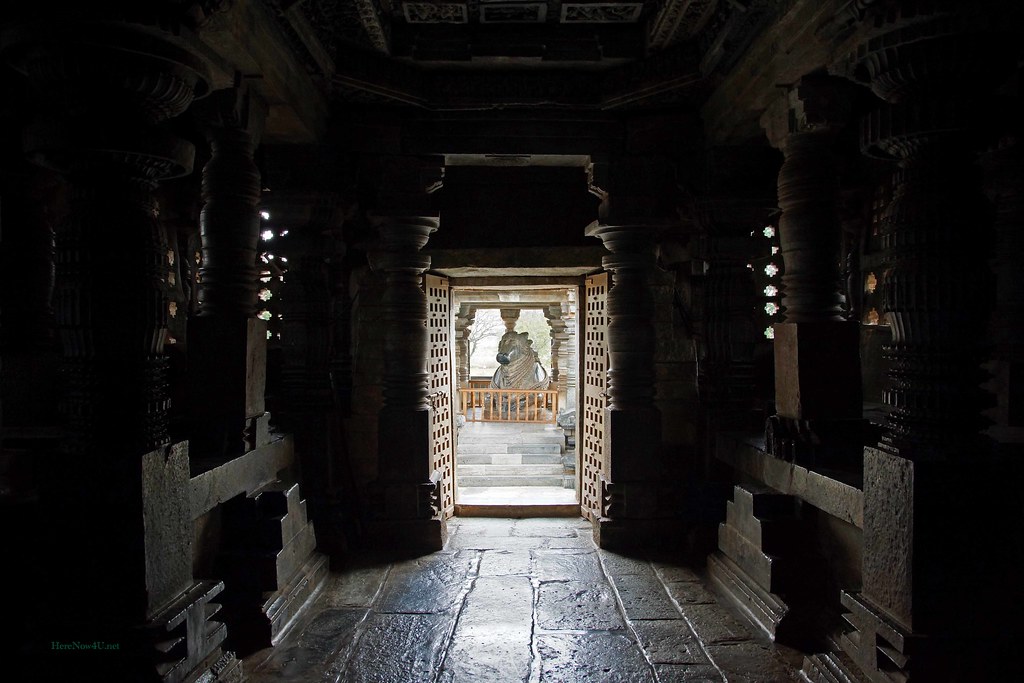
View from inside of the temple on Shiva’s Nandi (bull)
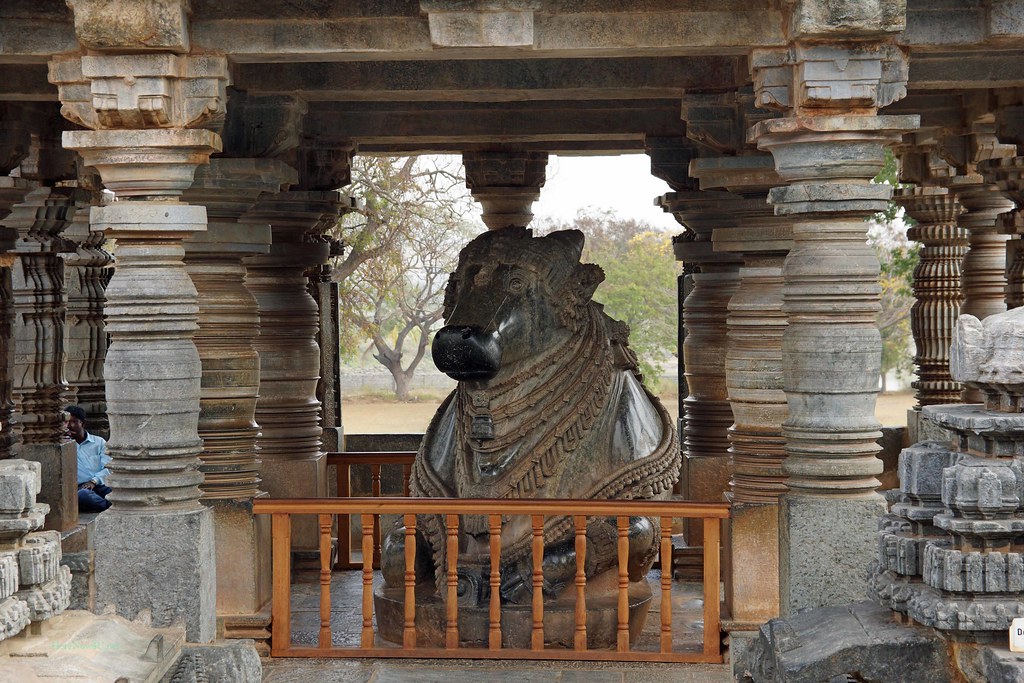
Nandi

Artfully shaped columns finalised with sculptures
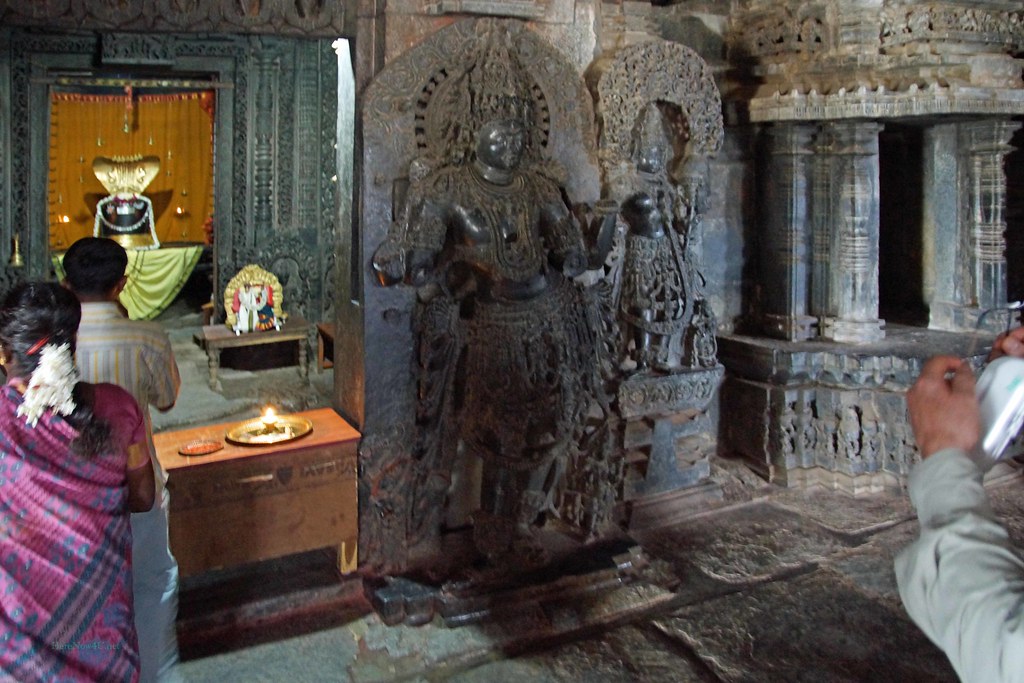
Doorkeepers in front of Sanctum
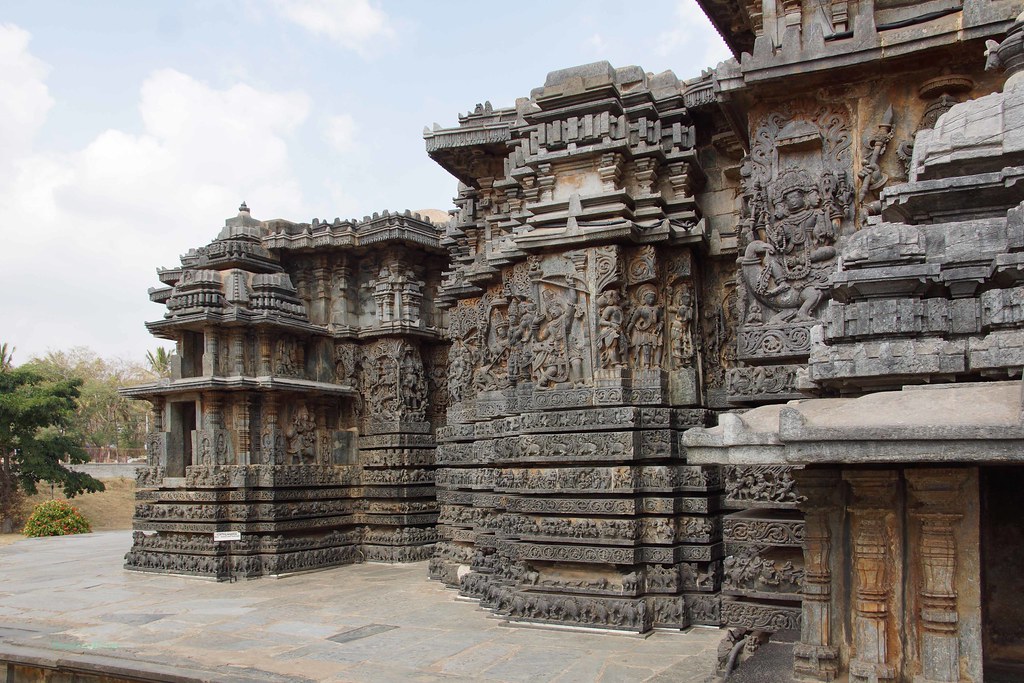
Outside view
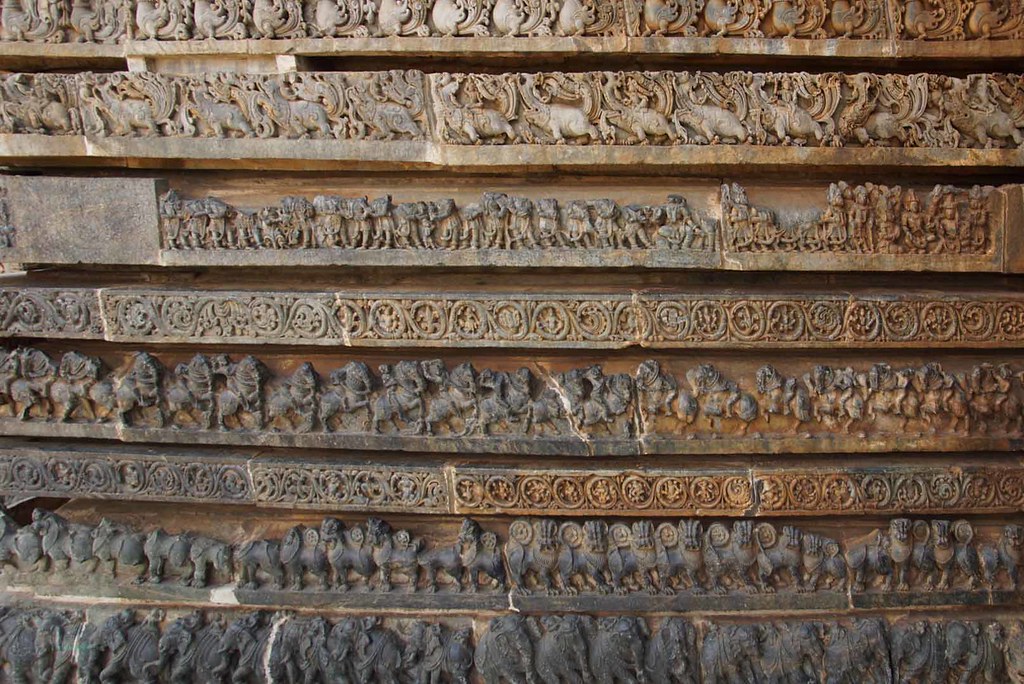
Sophisticated relief at the fassade
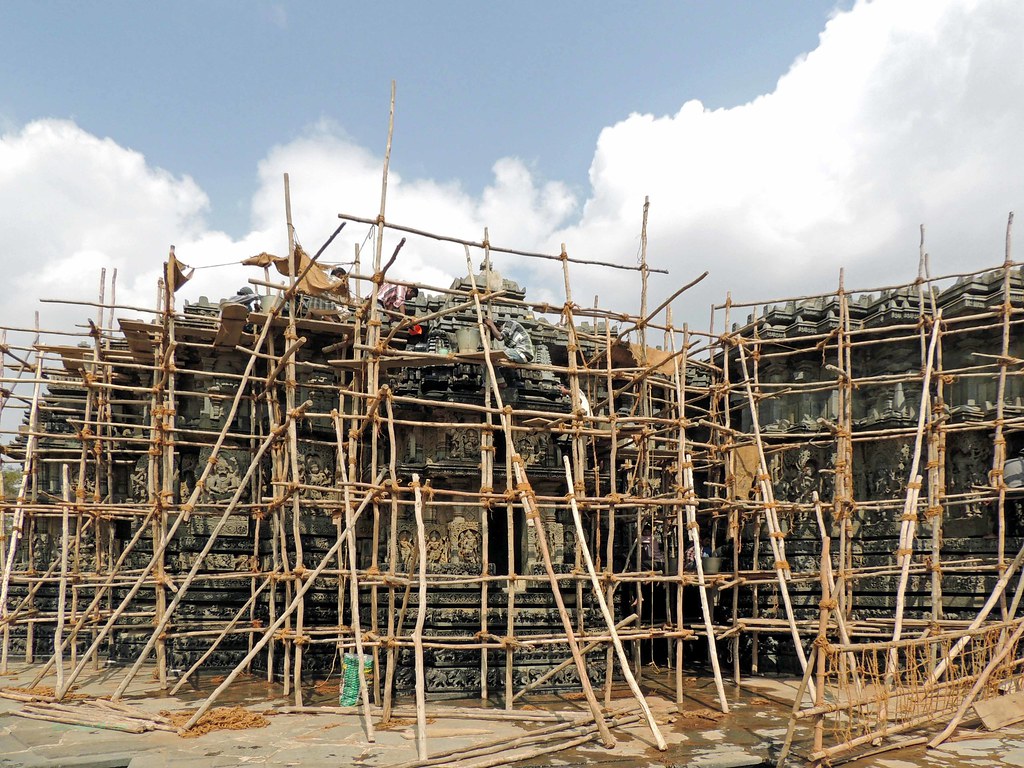
Once a year the fassade of the temple is carefully cleansed
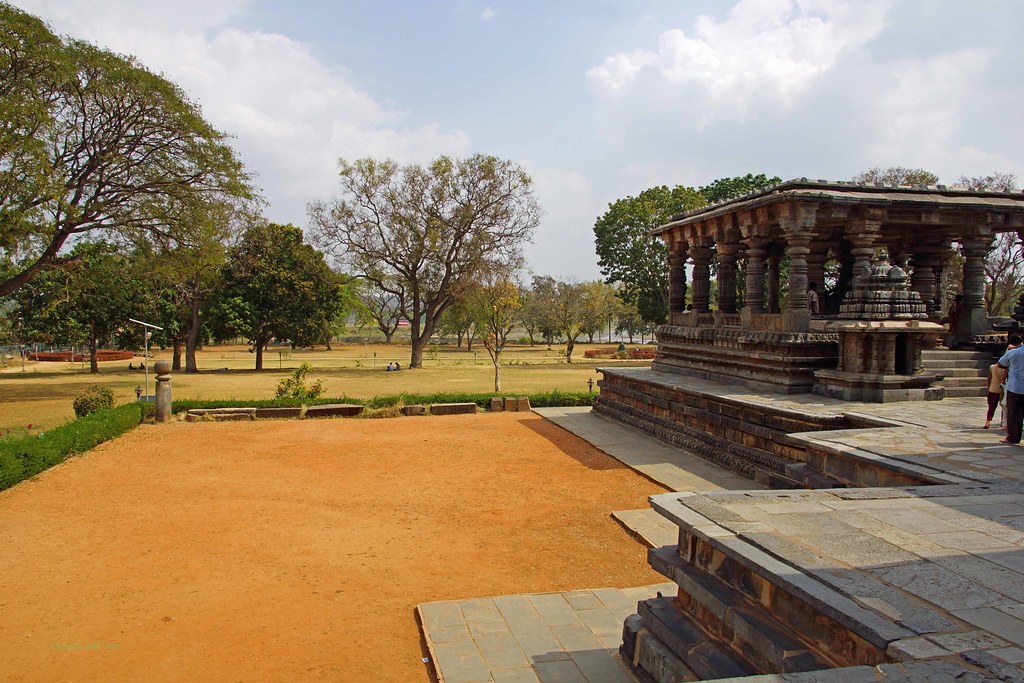
The temple complex is surrounded by an extended park the visitors love to use

Halebidu is a popular destination
After Halebidu we directly started for the 170 km journey to Mysore. There Prof. Hampa had reserved an accommodation for us in the guesthouse of Mysore University. About 18:00h we reached our destination and through the kind interference of our friends the gate keeper gave an apartment-like room to us with bunk beds and attached bathroom on first floor for IR 700 only, meals not included. Mr. Murali and the driver after having checked that the conditions were convenient for us showered their blessings on us and took farewell. Then they immediately drove back to Shravanabelagola. Meanwhile we were hungry and asked the gate keeper in sign language (one hand on the stomach, the other moving again and again towards the mouth) where something to eat was available. To our astonishment he pointed to a corridor not far from his desk and gave sign with his hand to follow it up. At the end of the corridor was a kitchen where a kind lady was cleaning vegetables. She was showing 8 fingers to us by adding smilingly, “Dinner!” We kept the location in mind and returned at the given time. There was a big table in shape of a rectangle in the dining hall opposite the kitchen where some dinner guests were seated already. Beside us a kind gentleman was sitting who presented himself as blogger and Prof. Narayana Prasad who participated in a Sanskrit course for teachers at the university. But we were quite tired and therefore asked him to postpone further talking to next morning. Immediately after dinner we went to sleep.
 Editor Carla Geerdes
Editor Carla Geerdes
